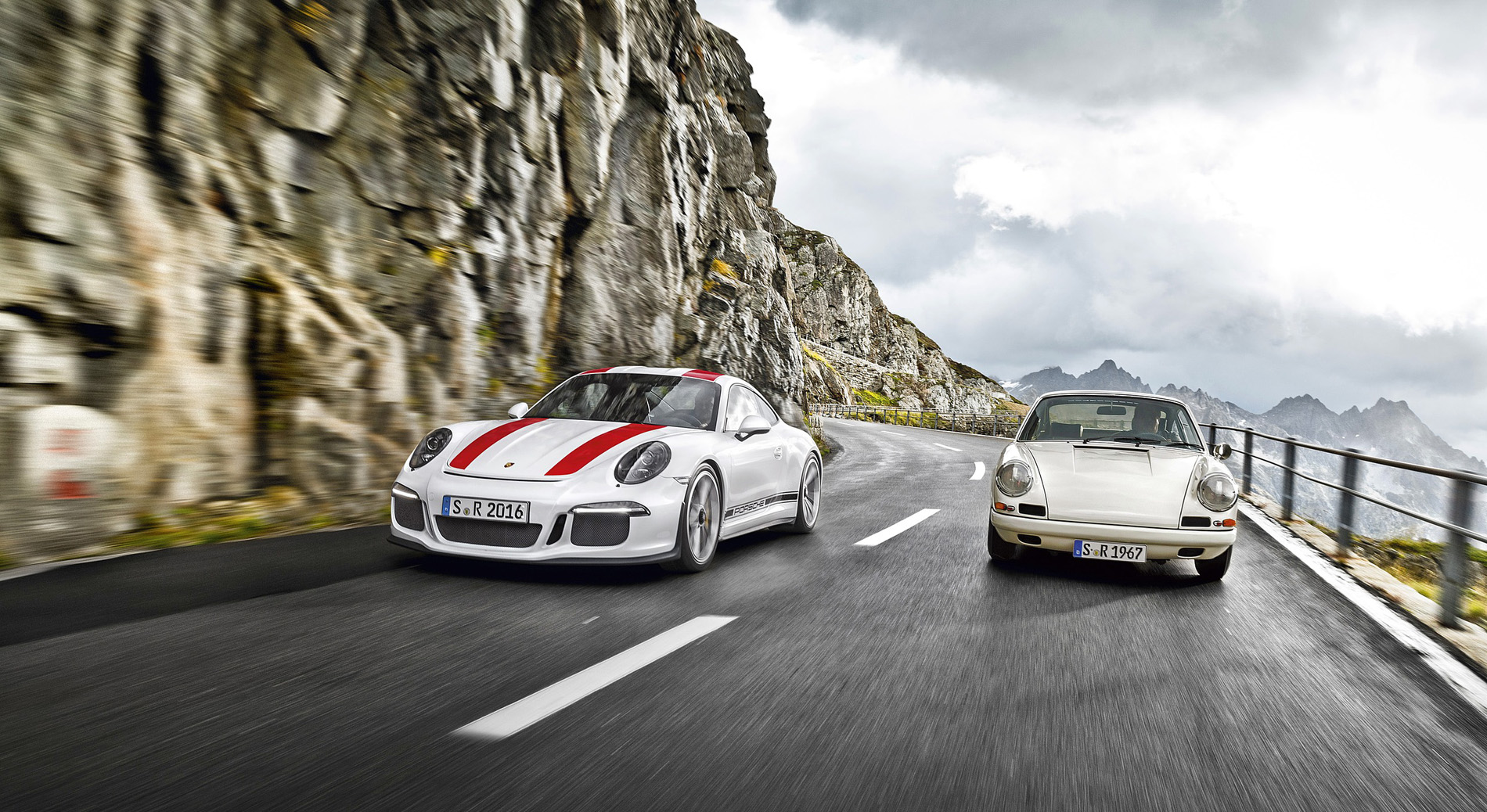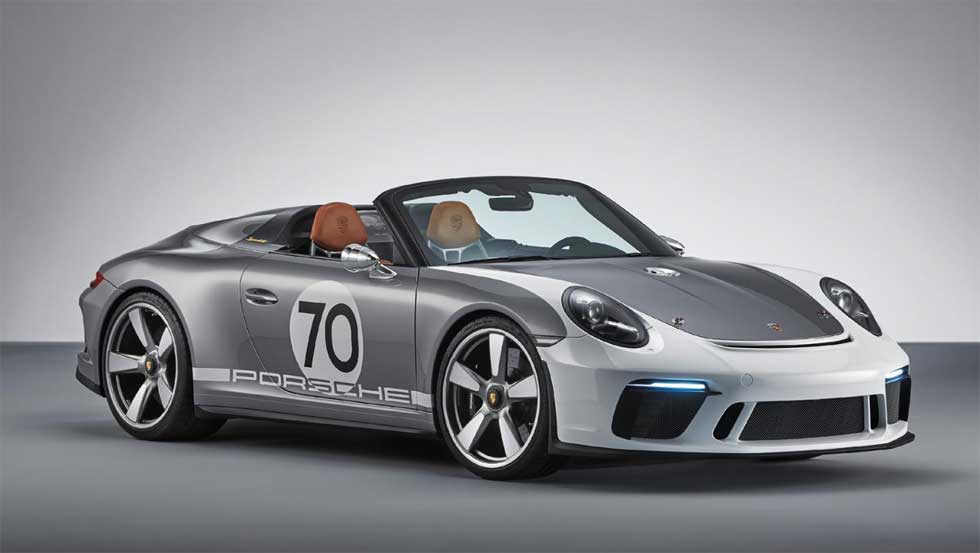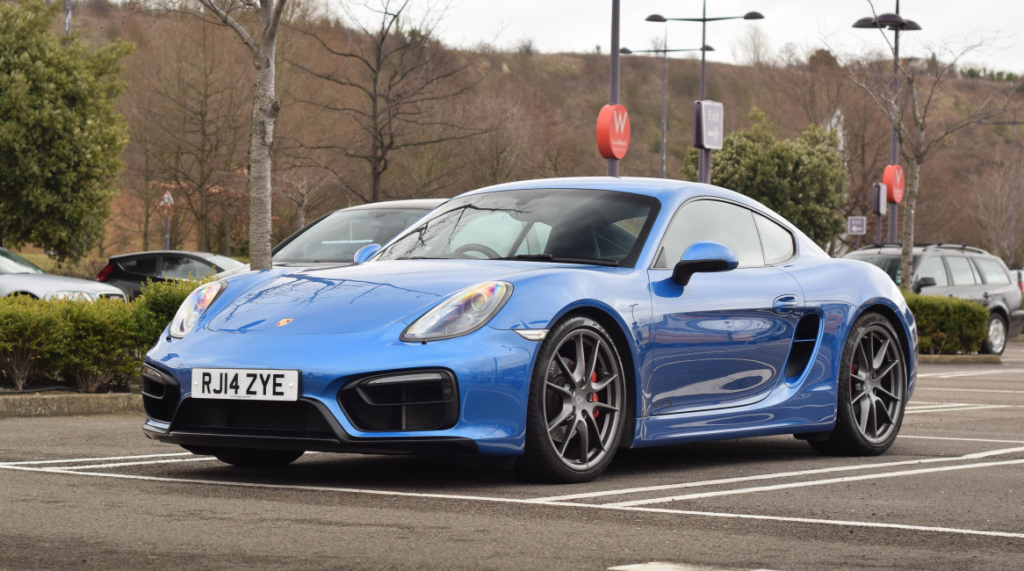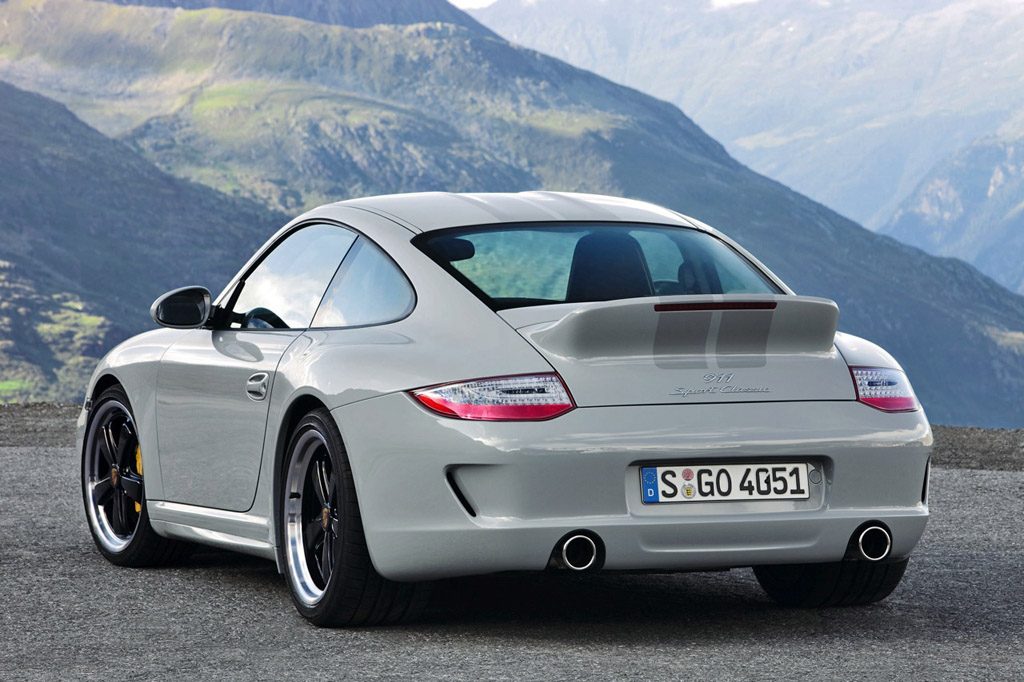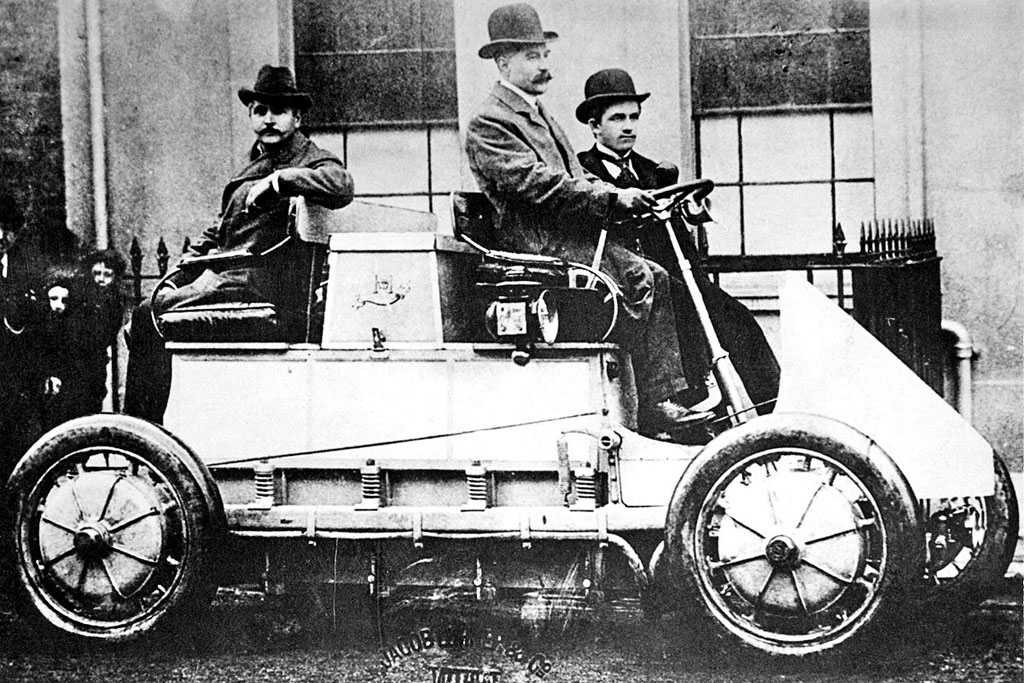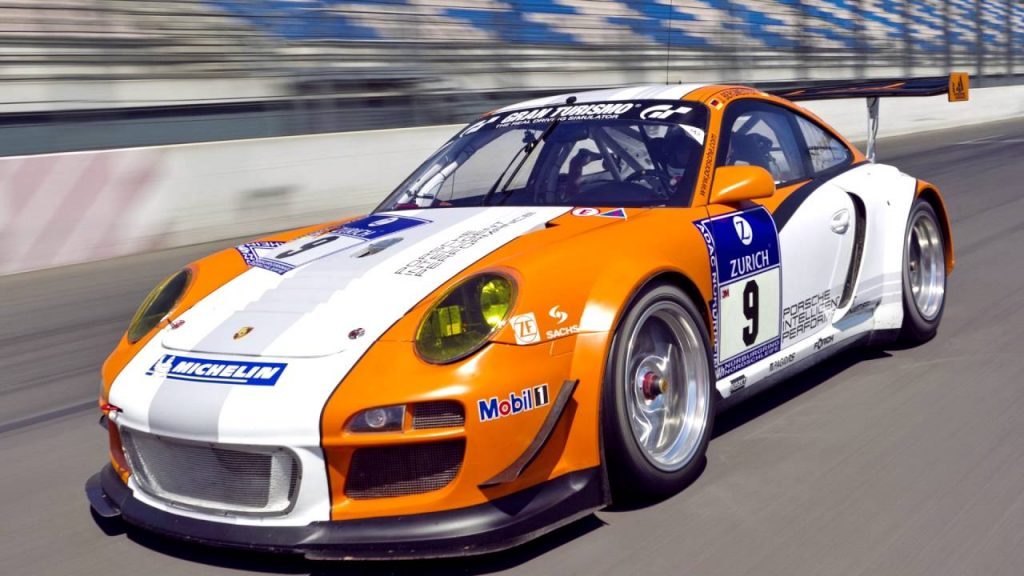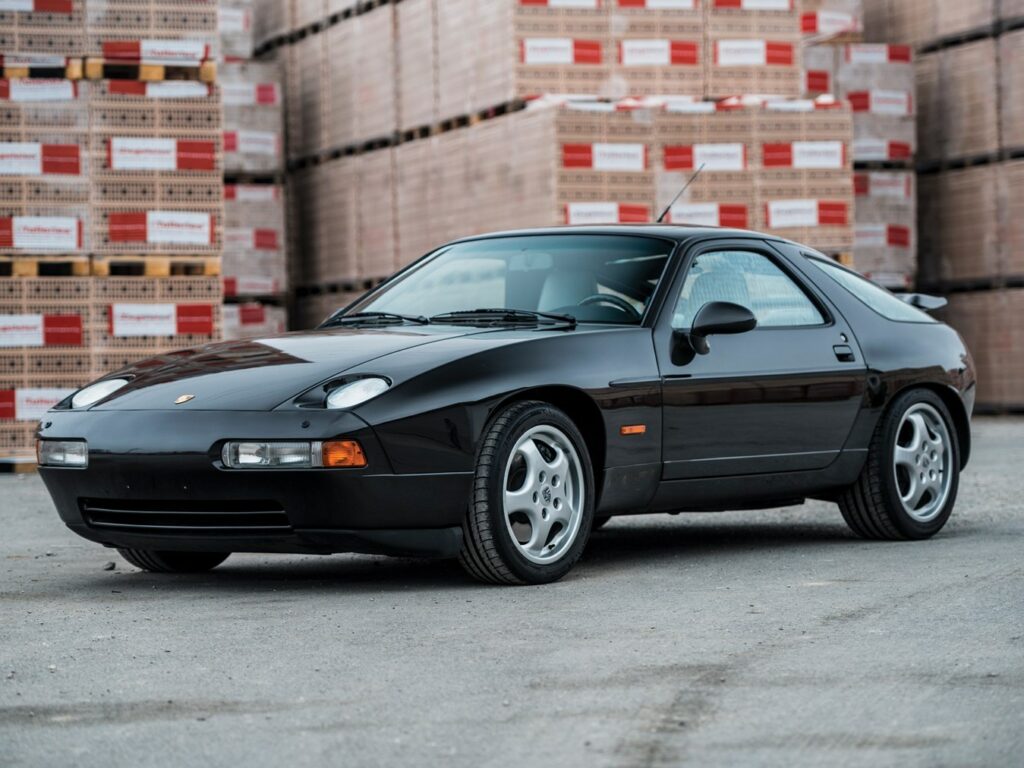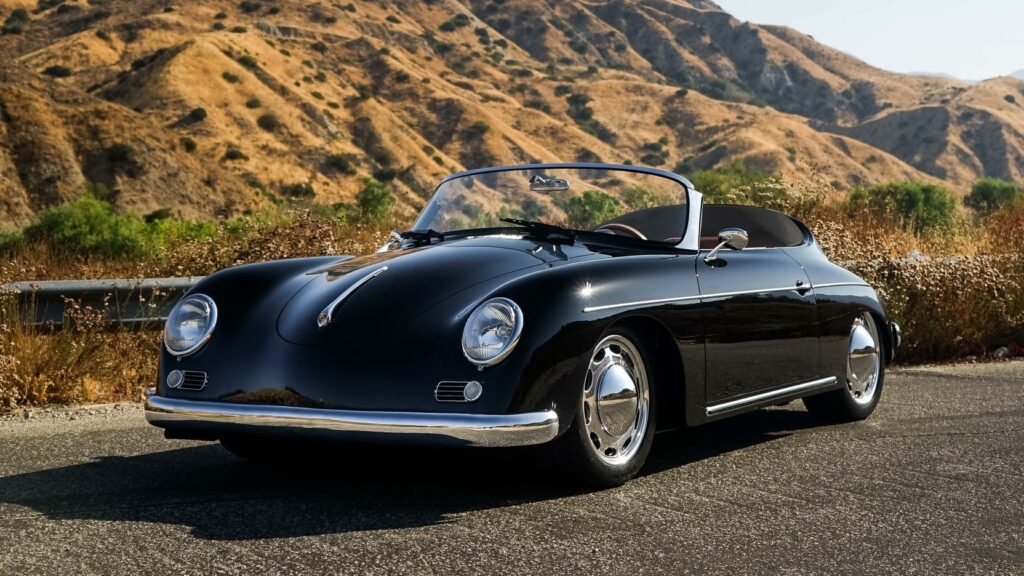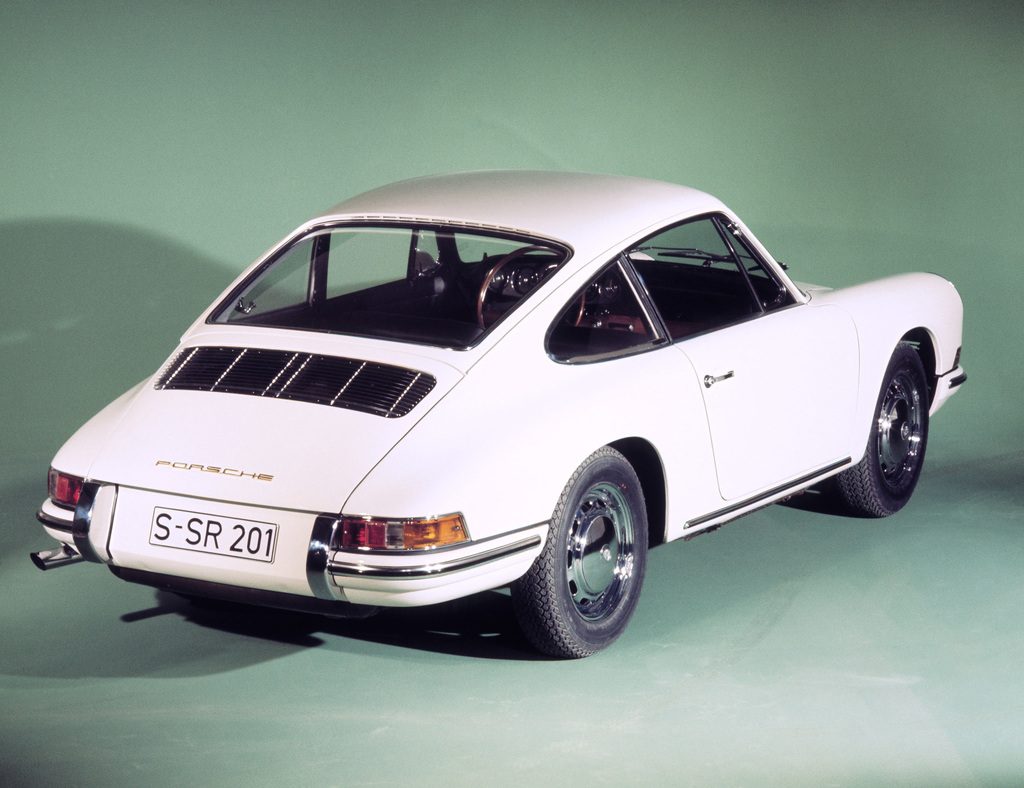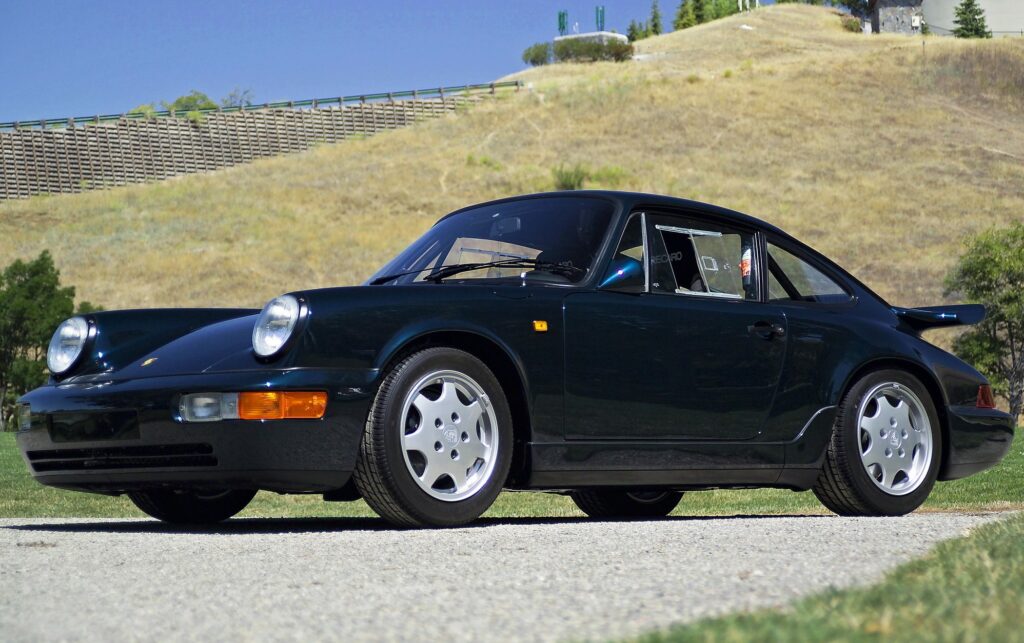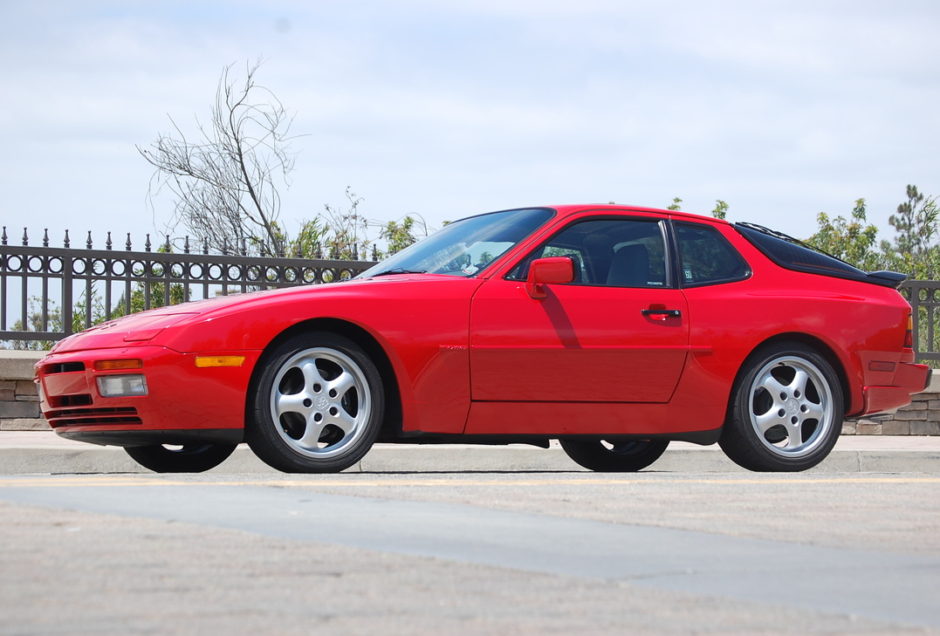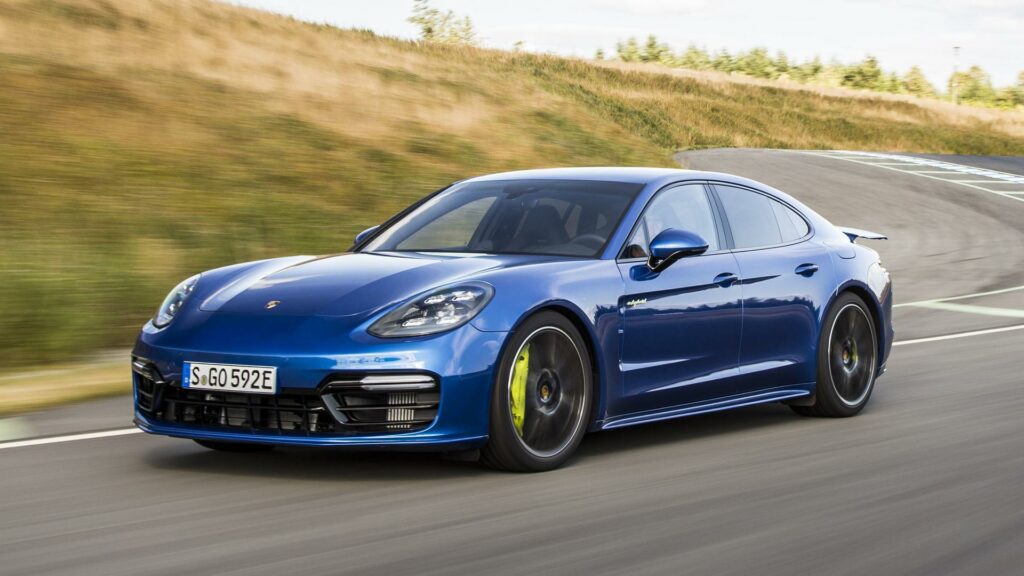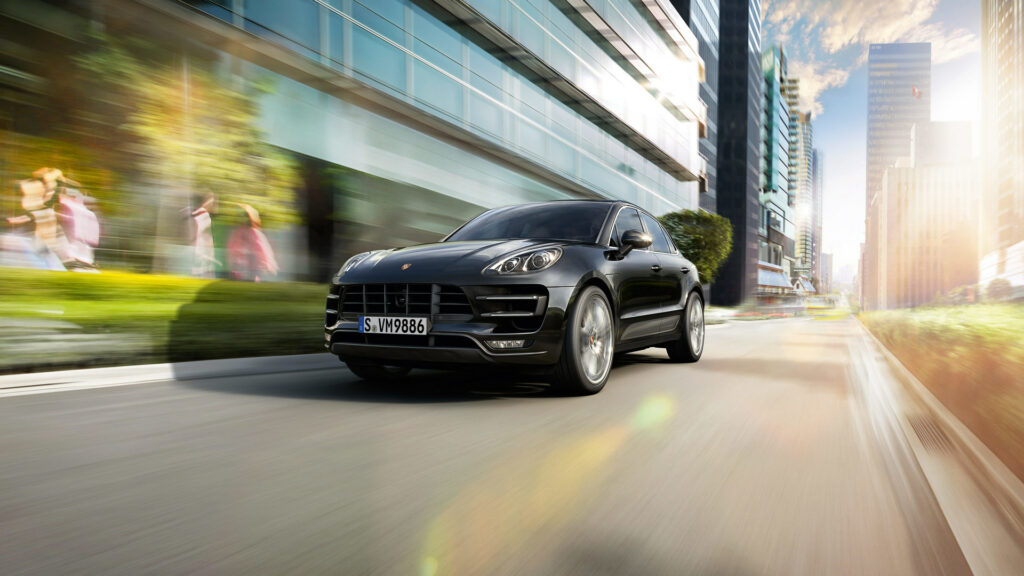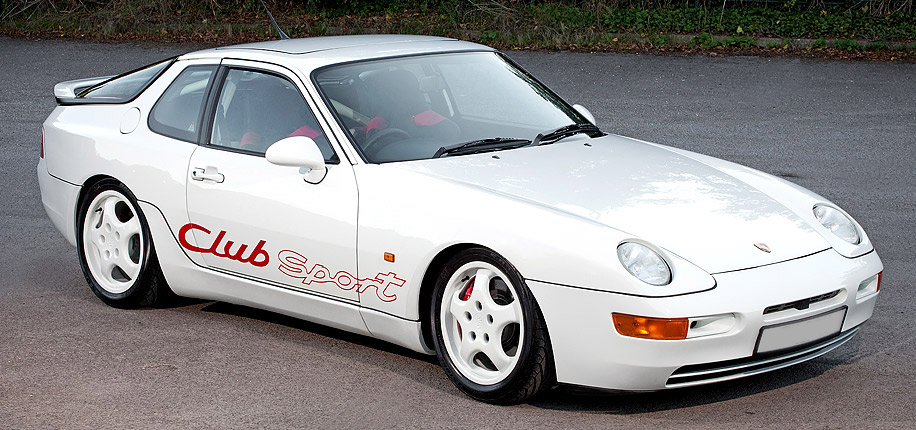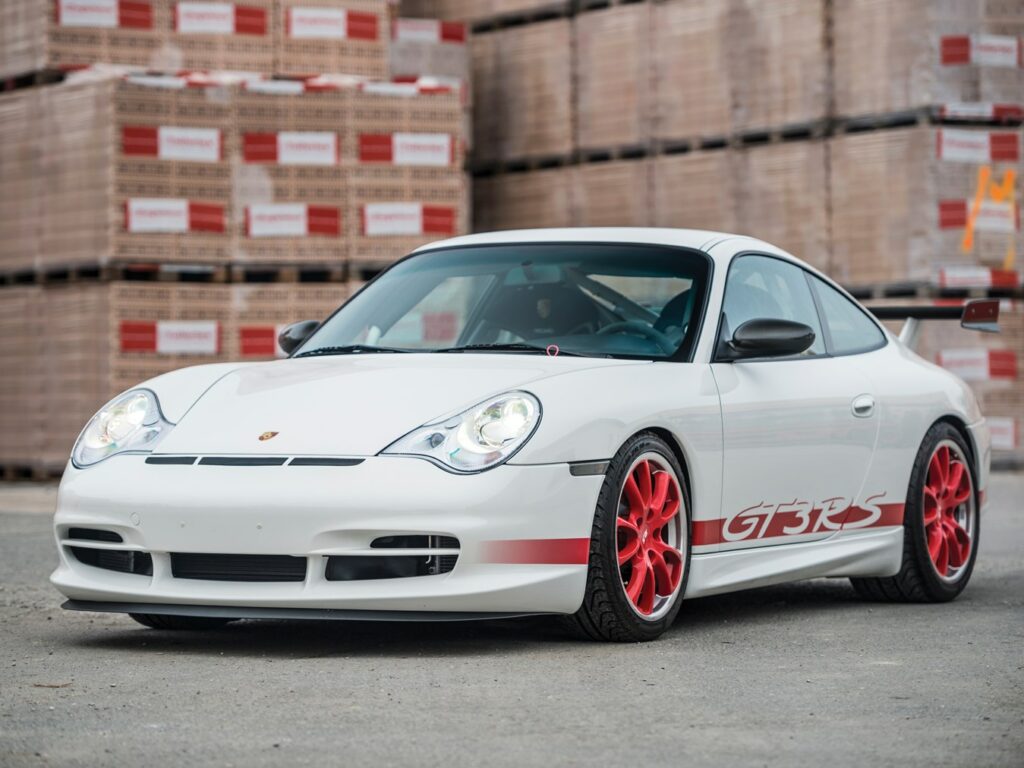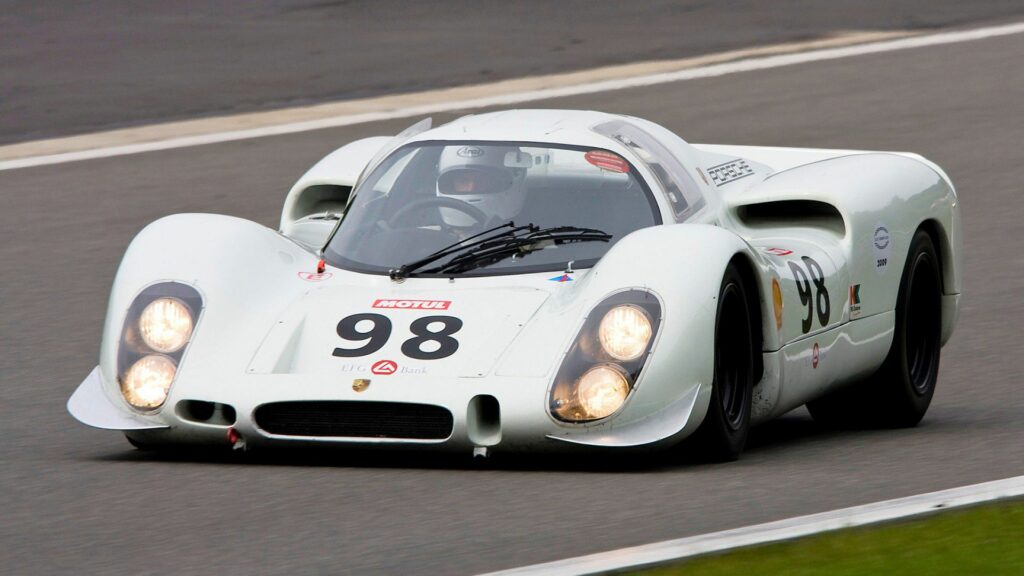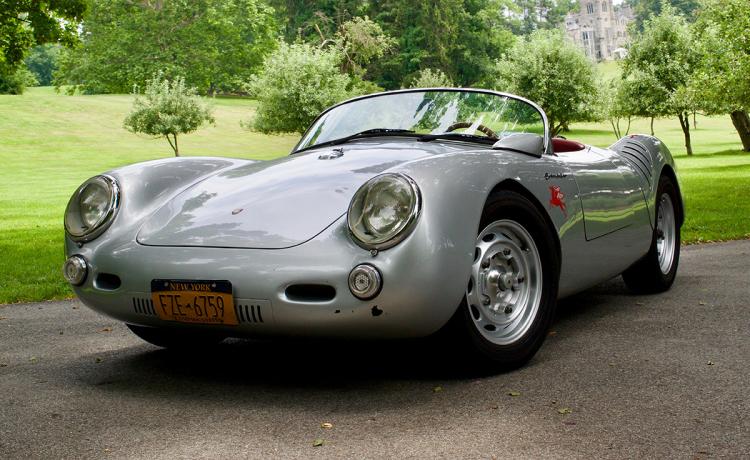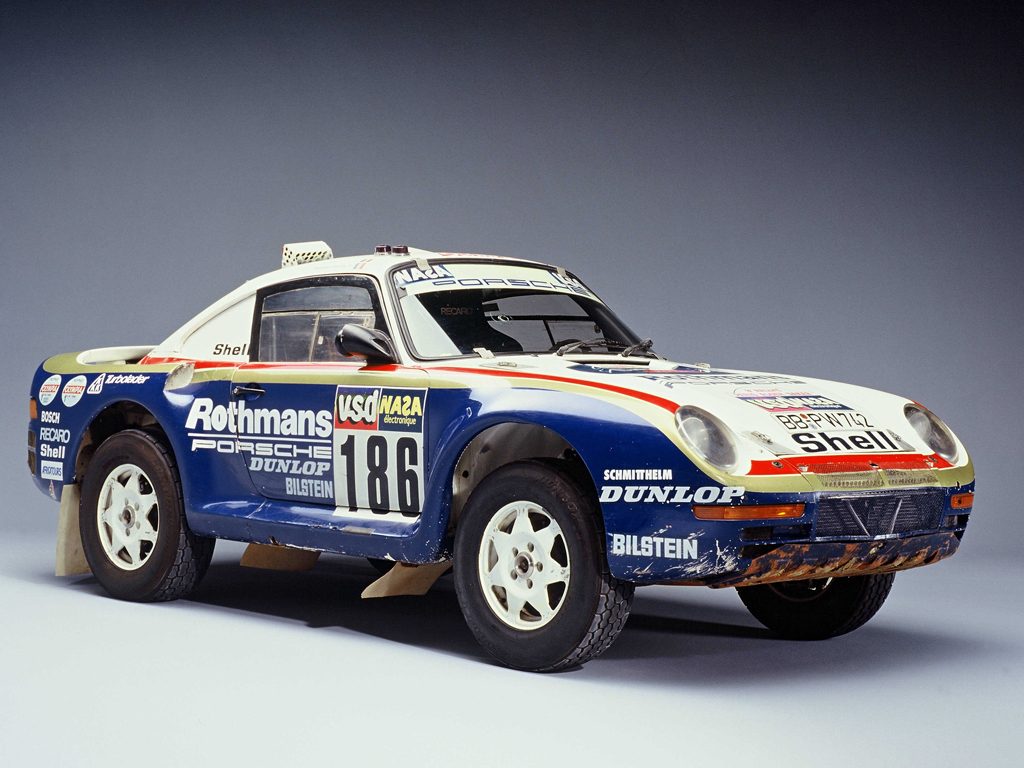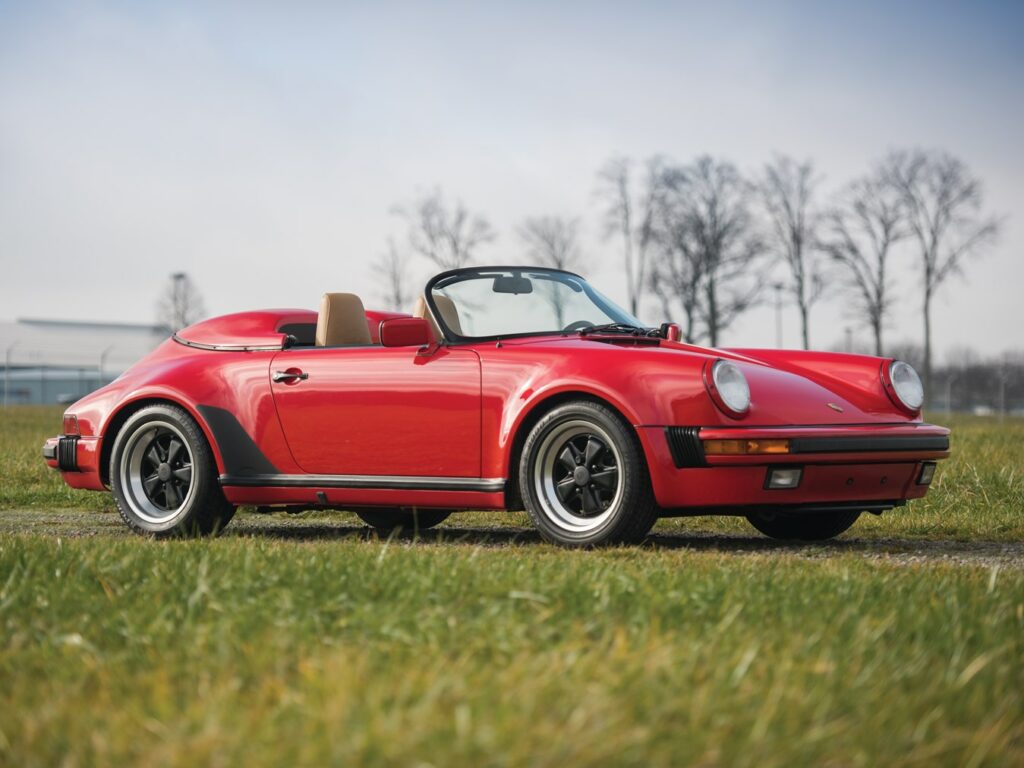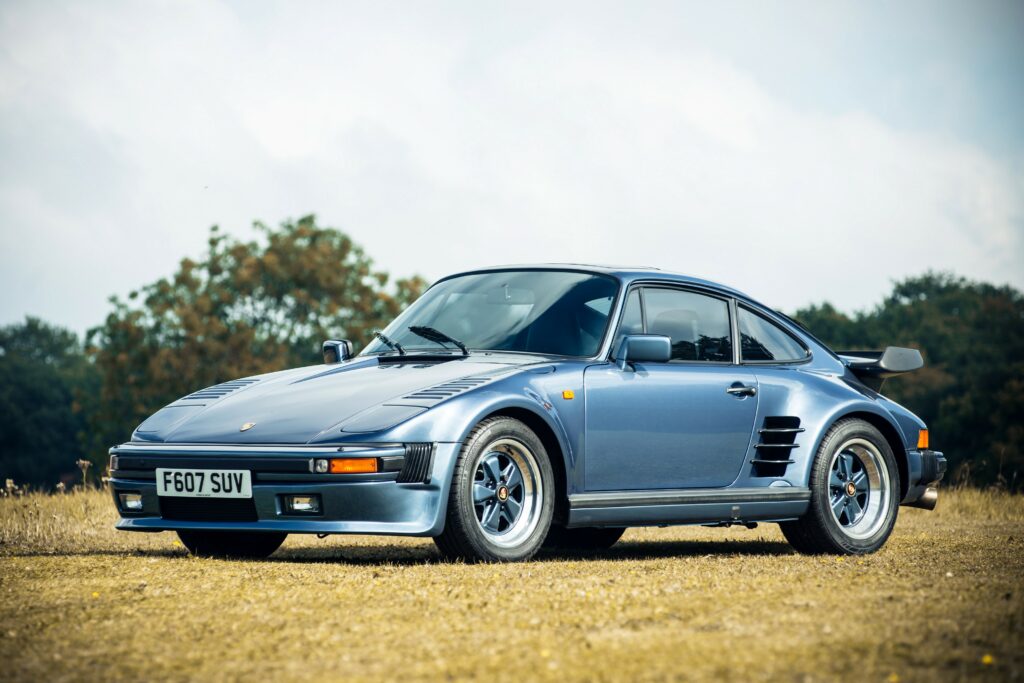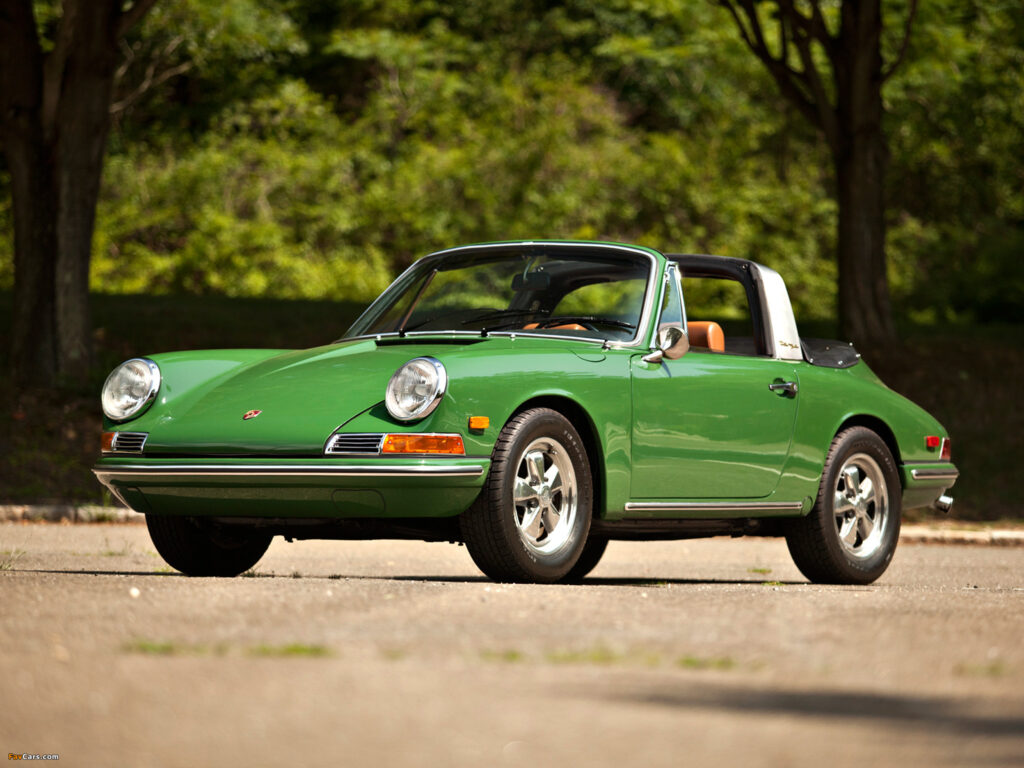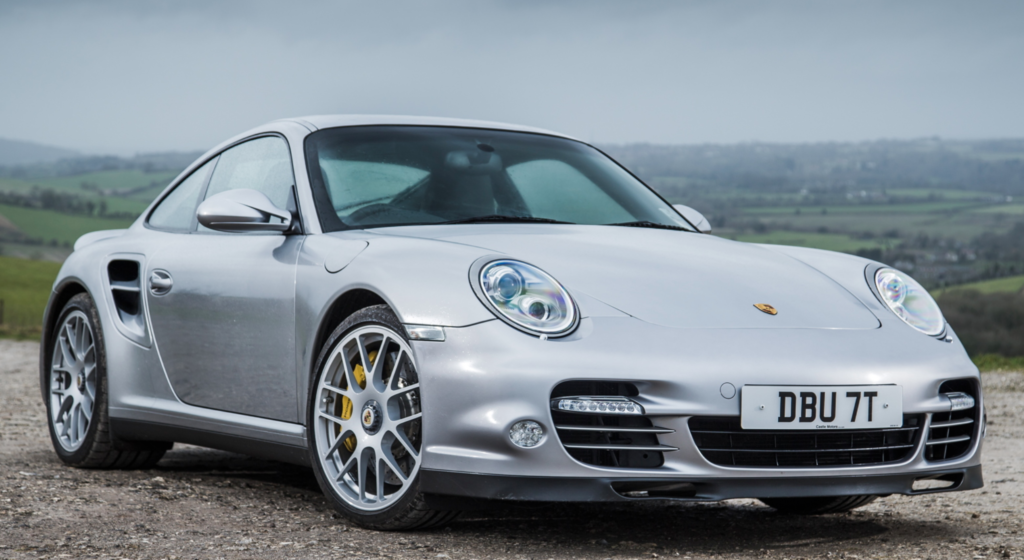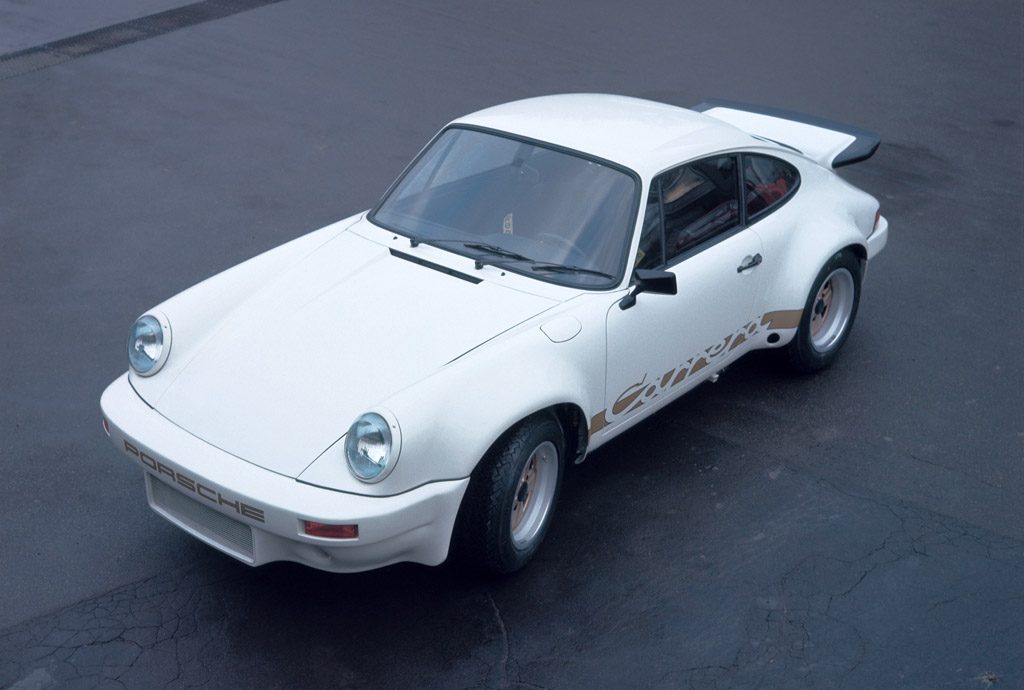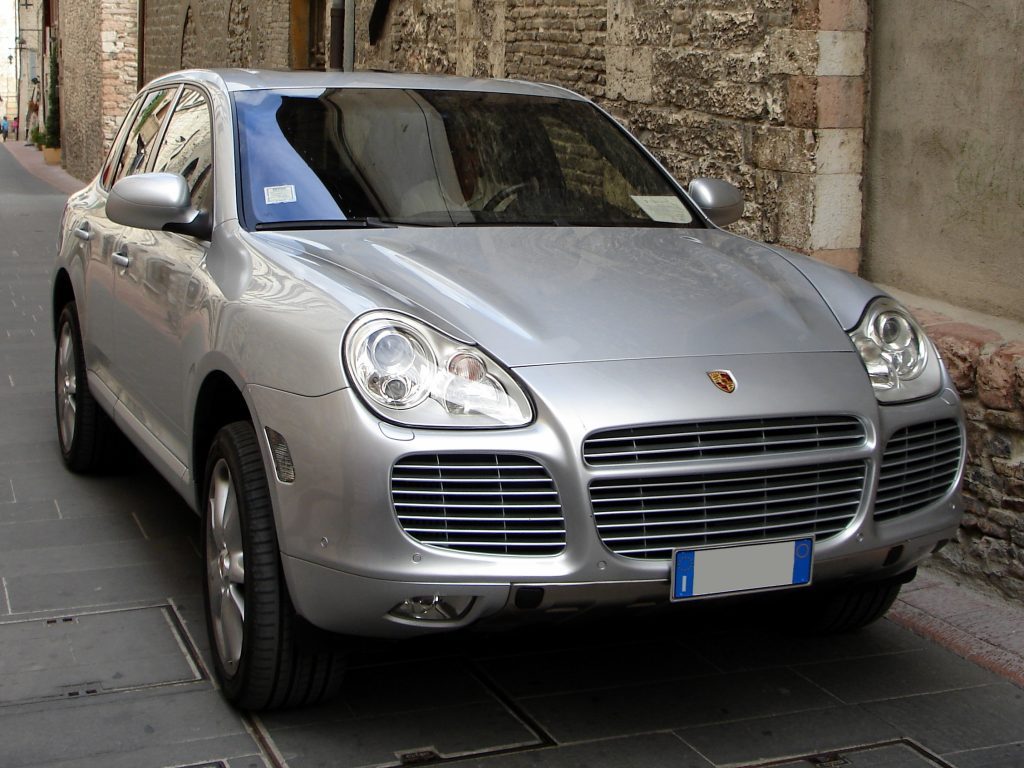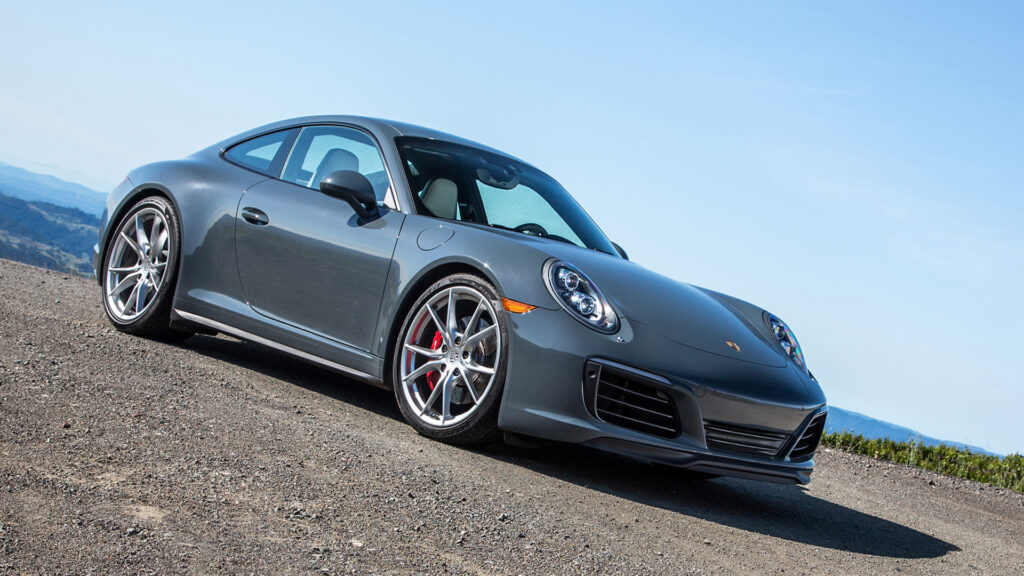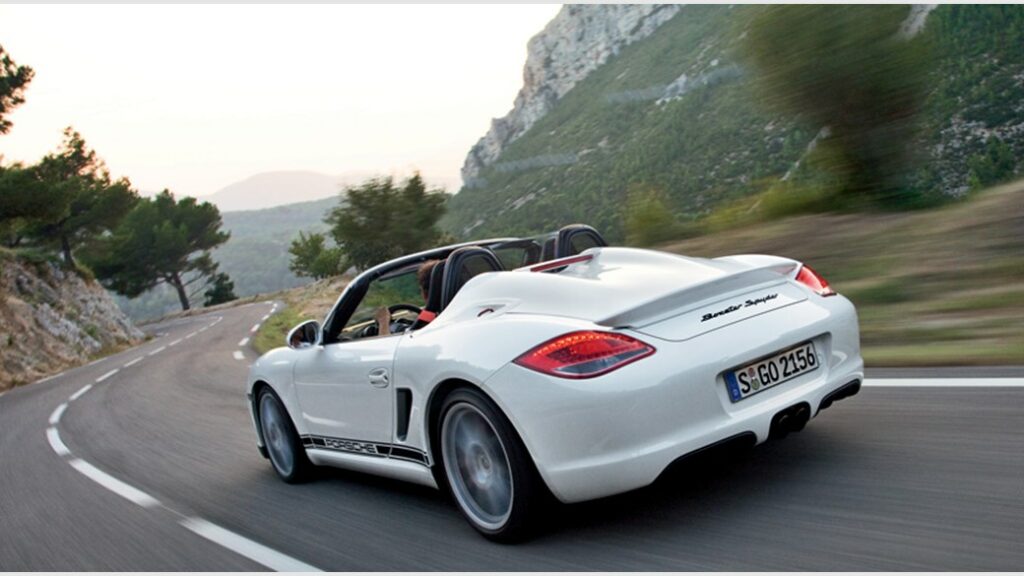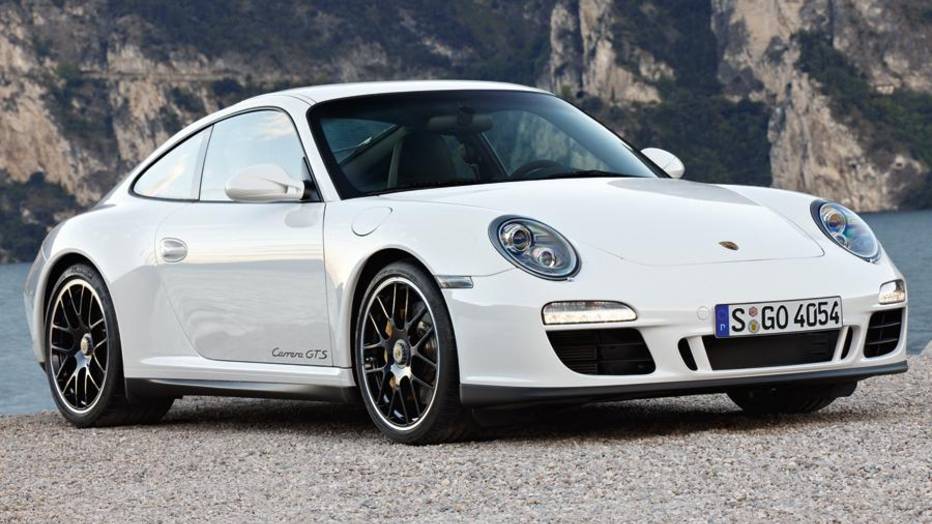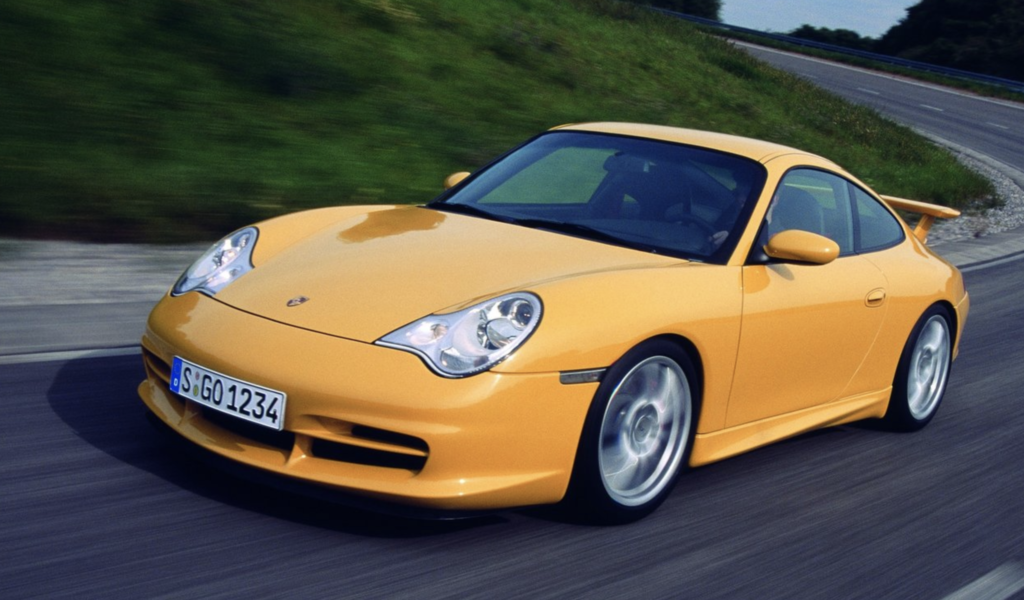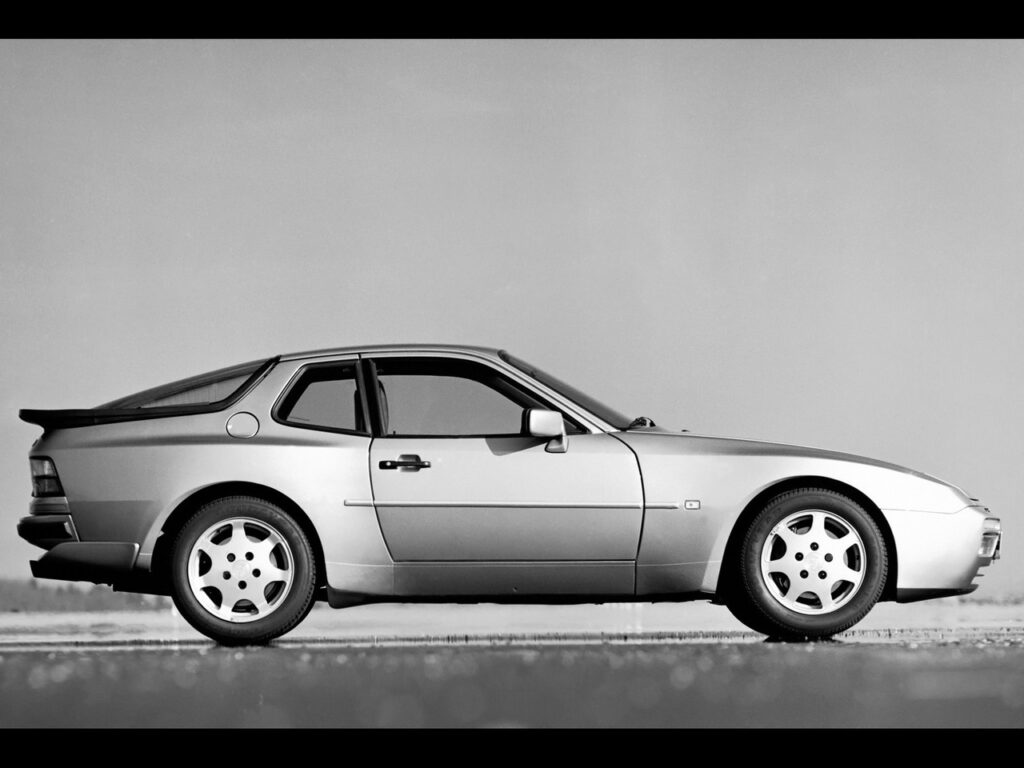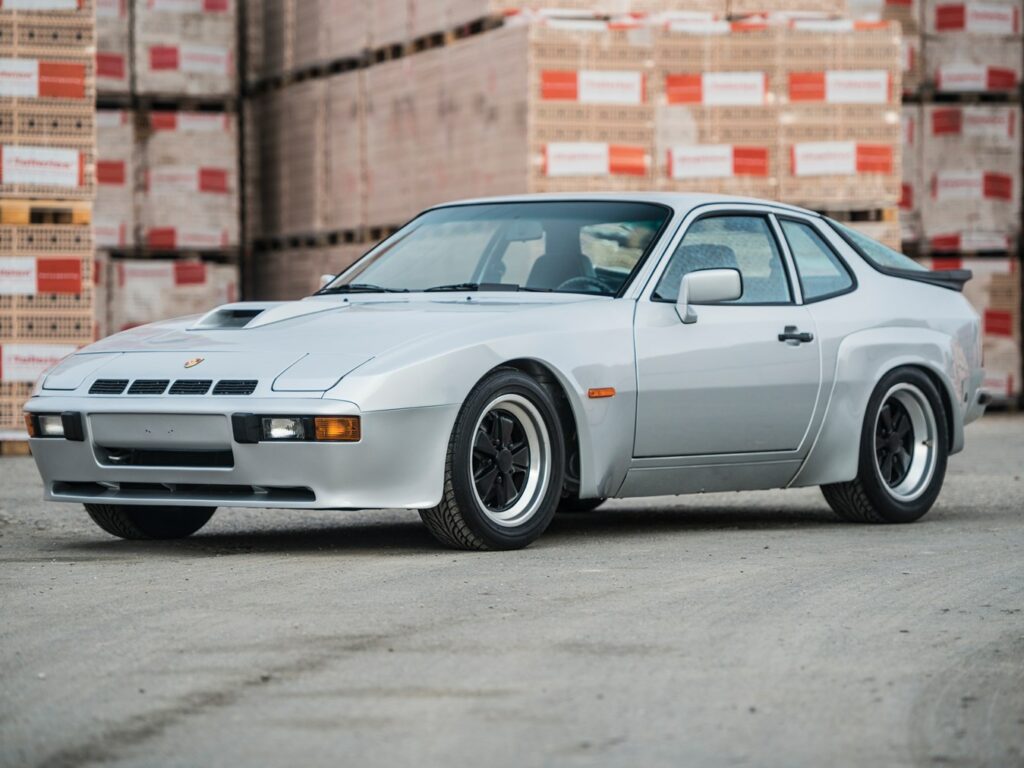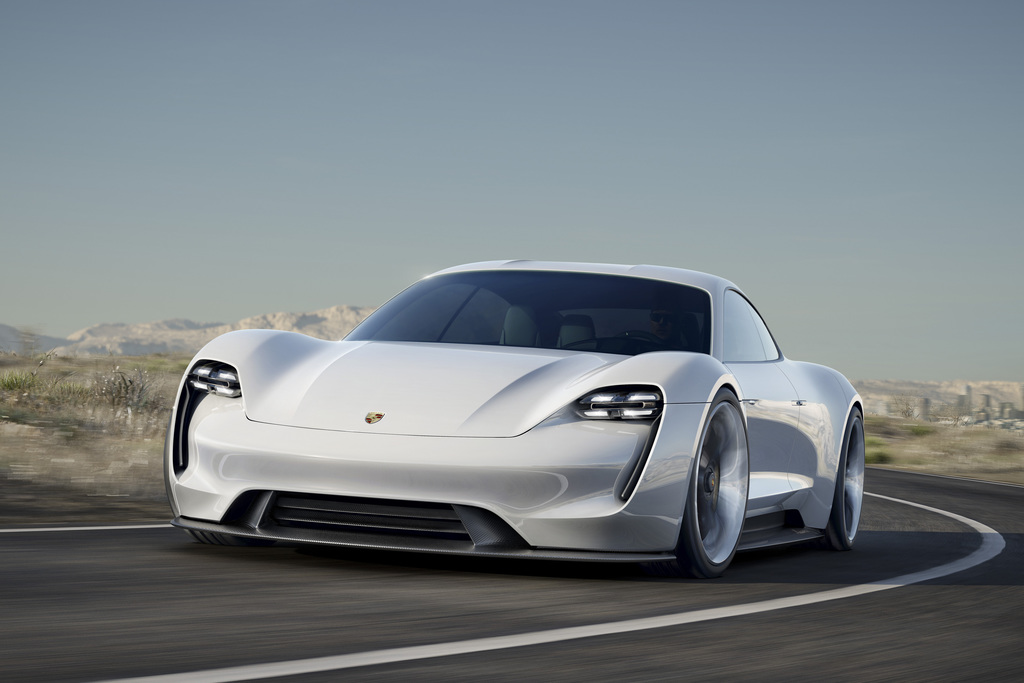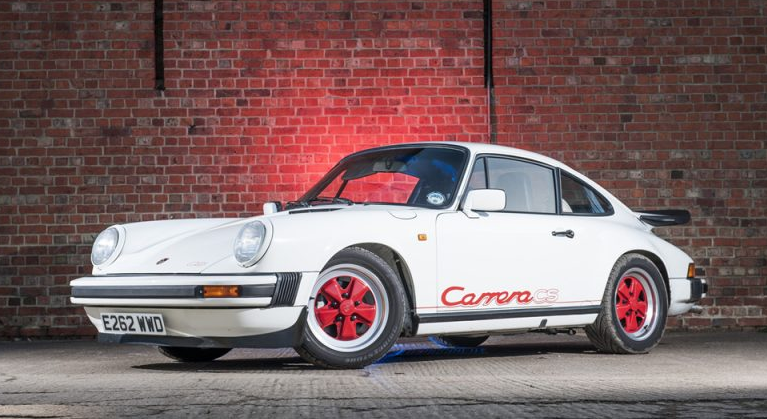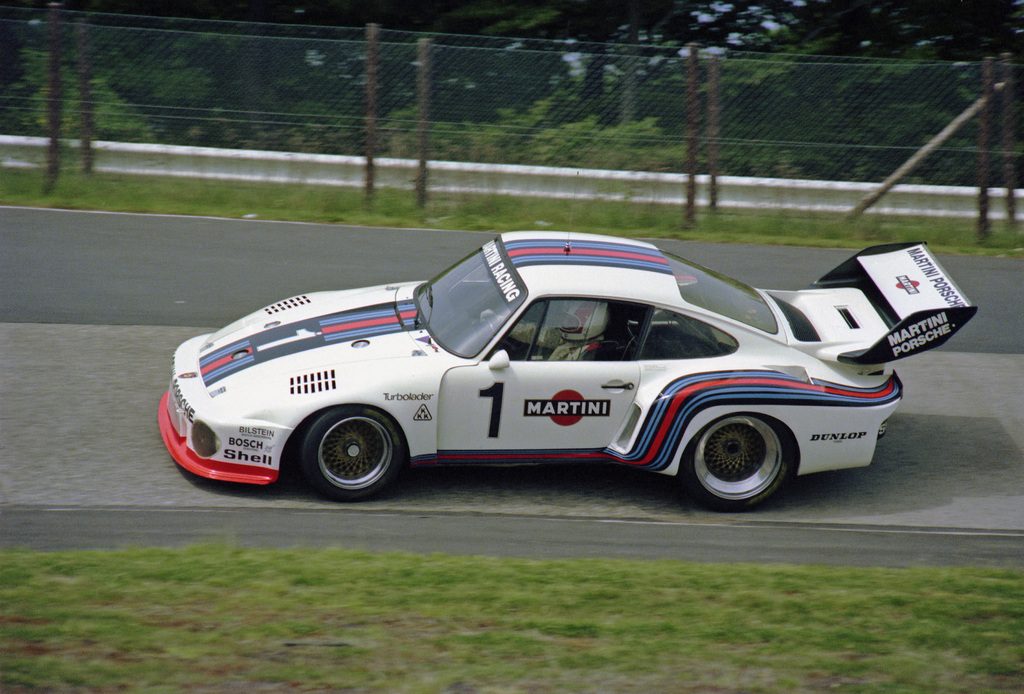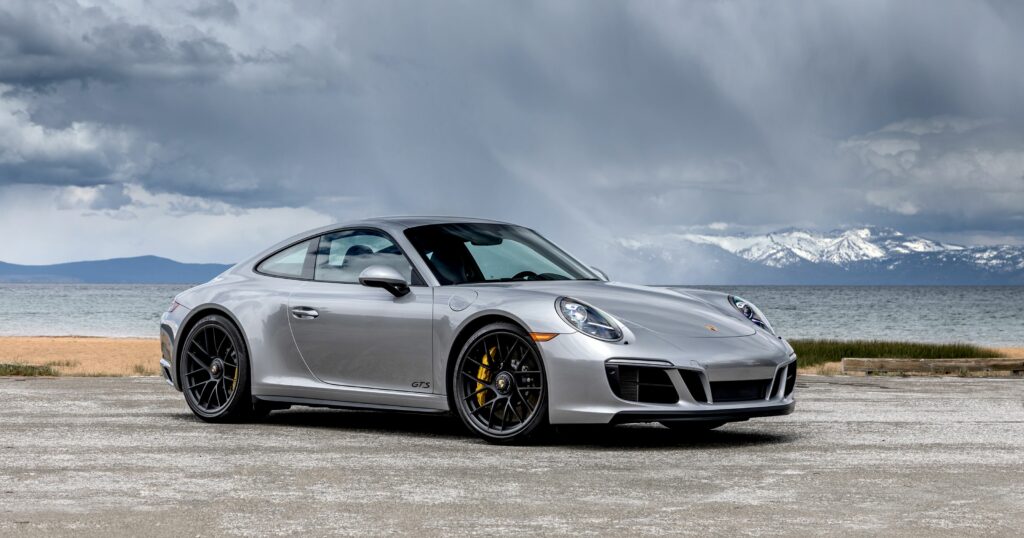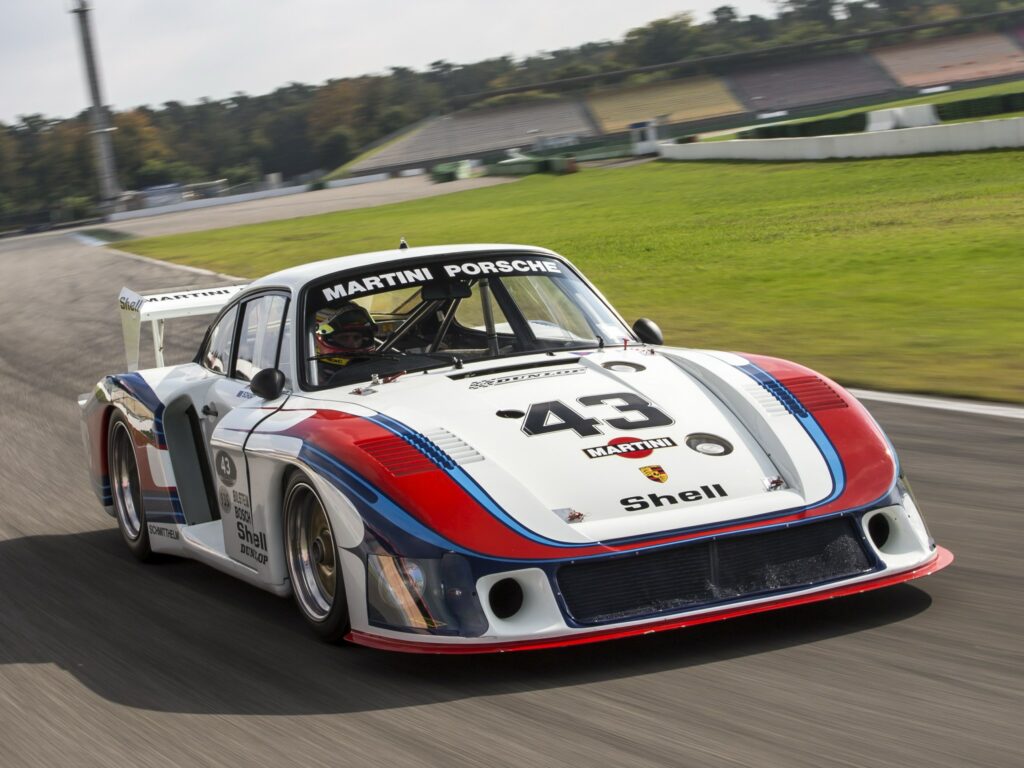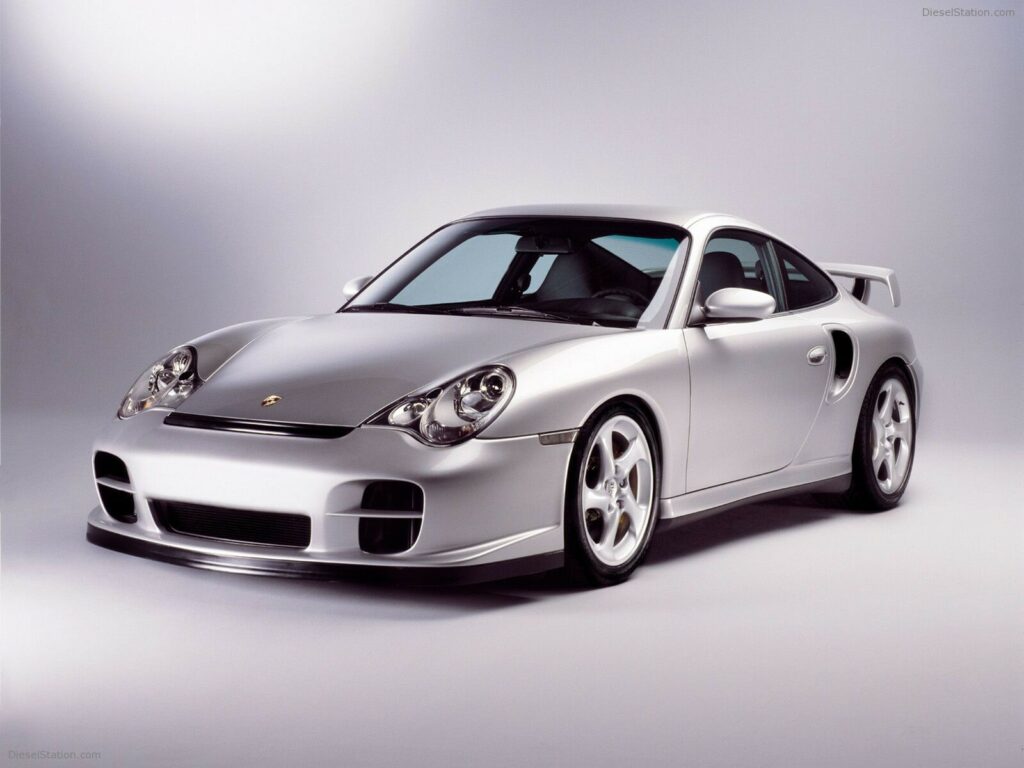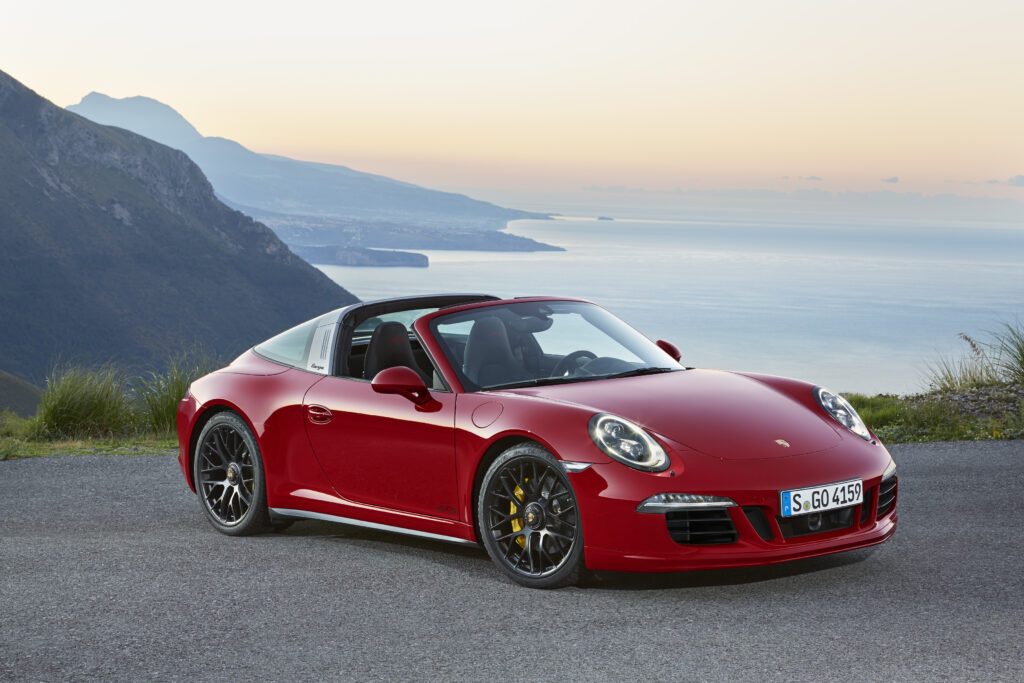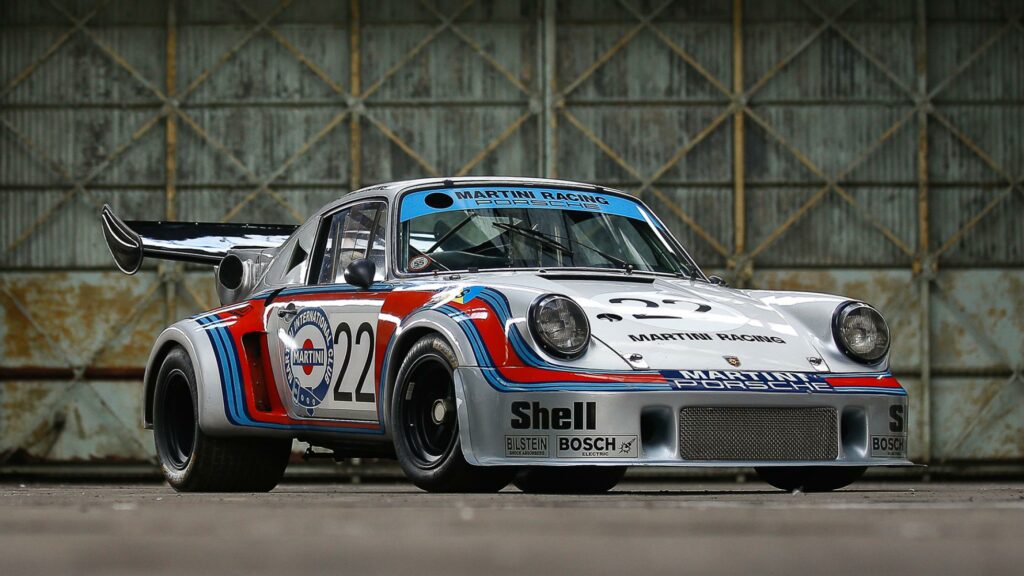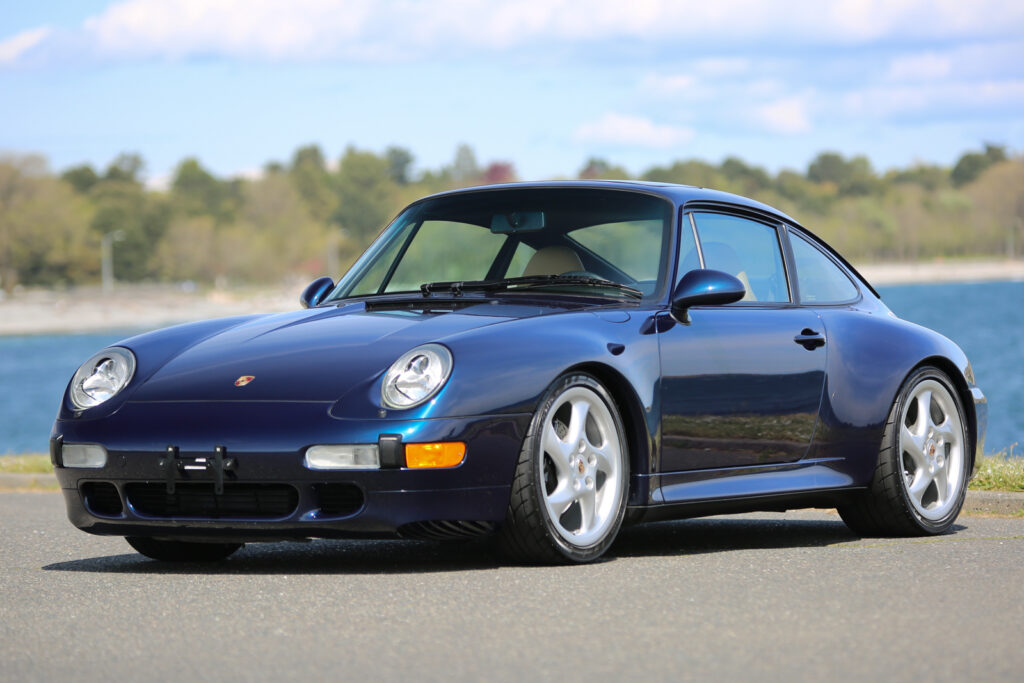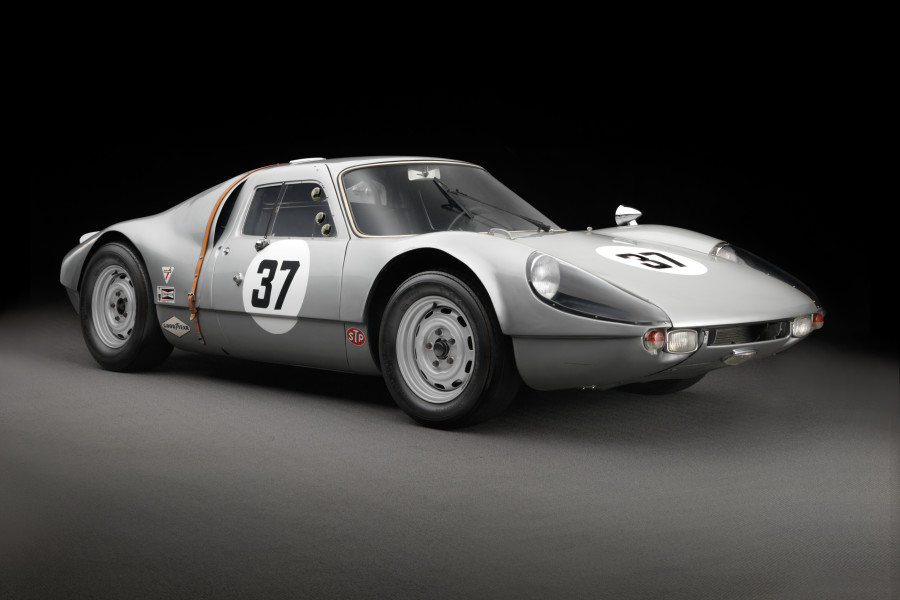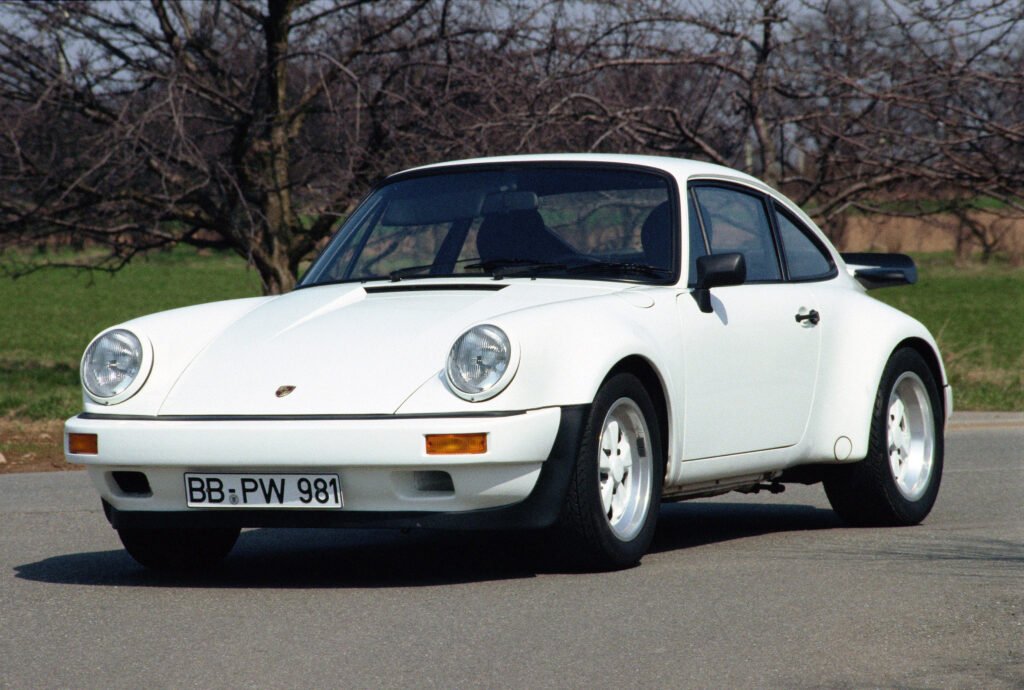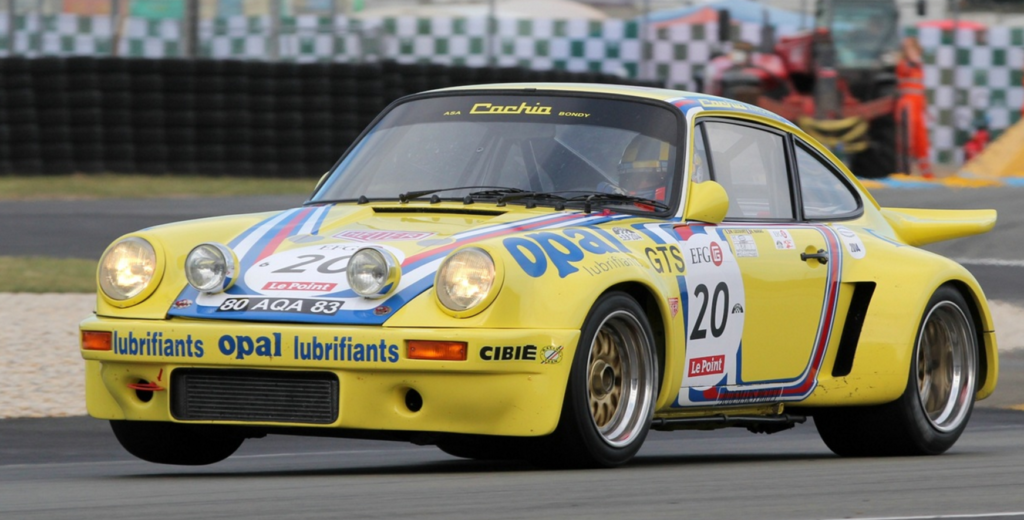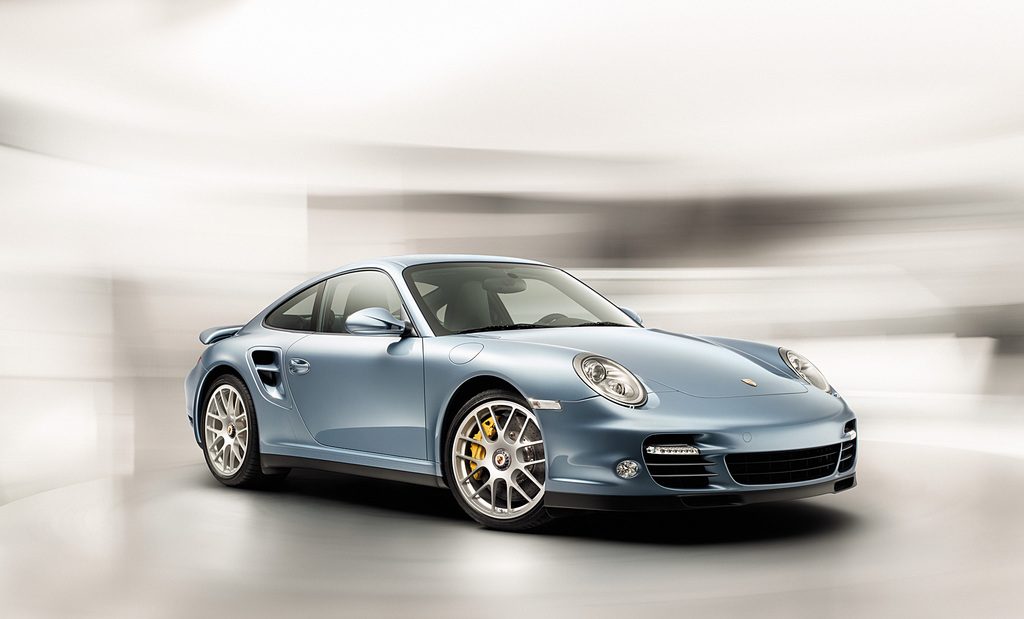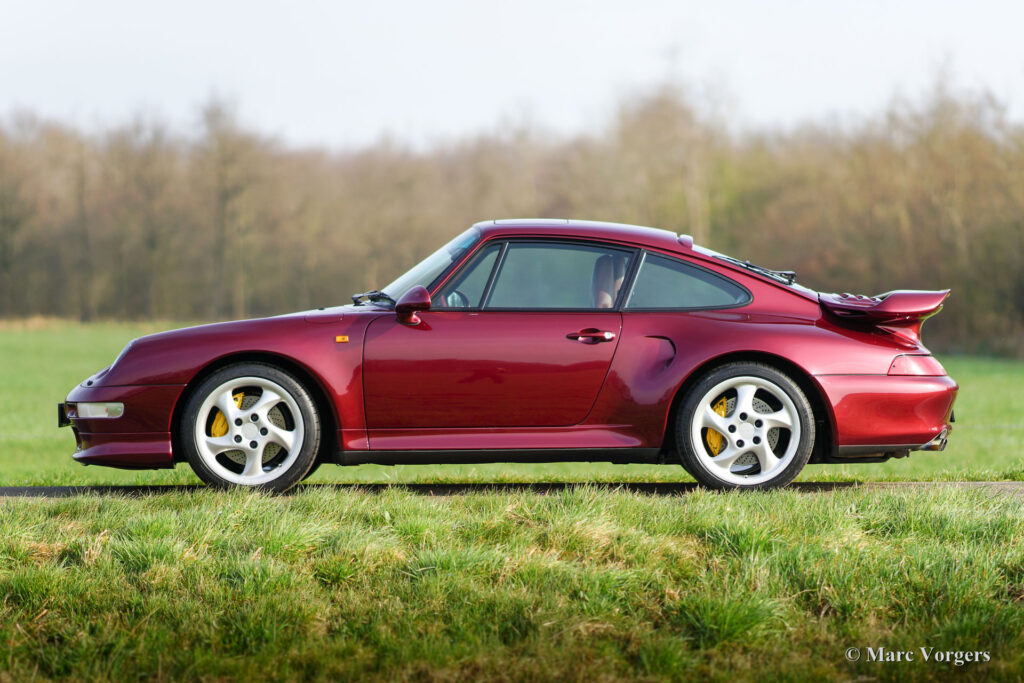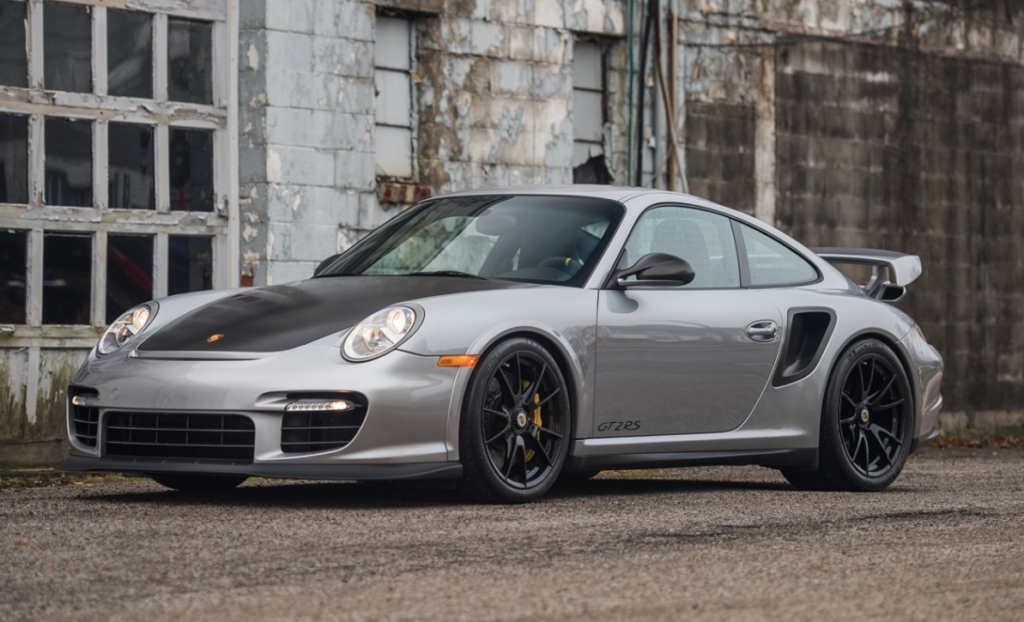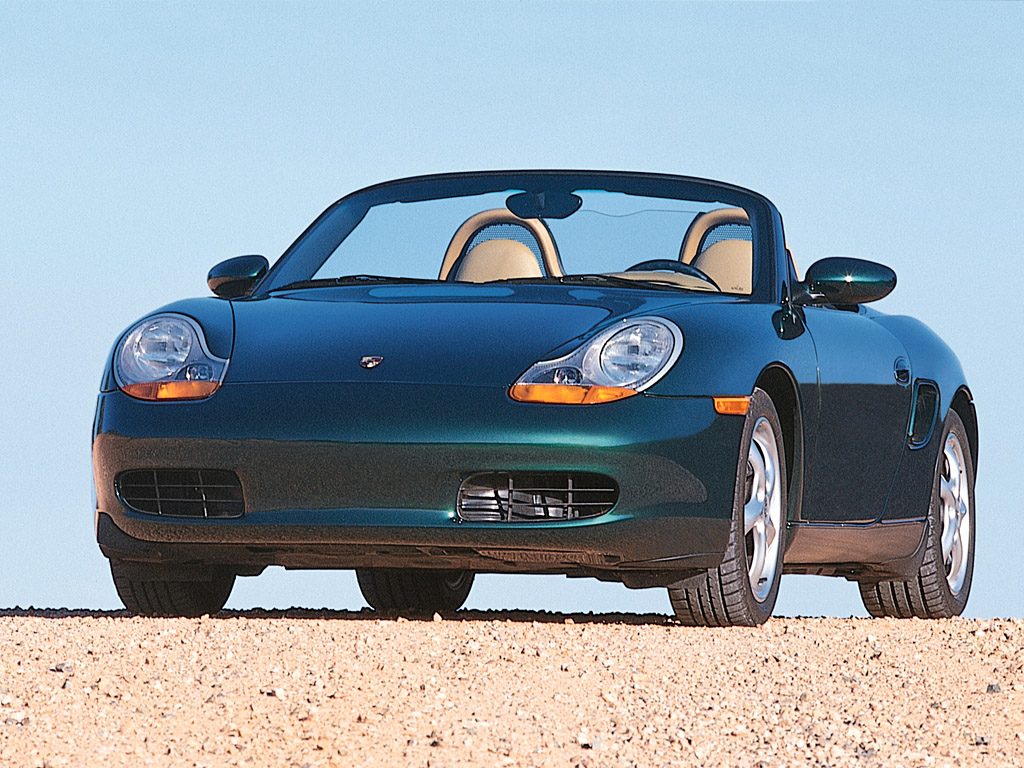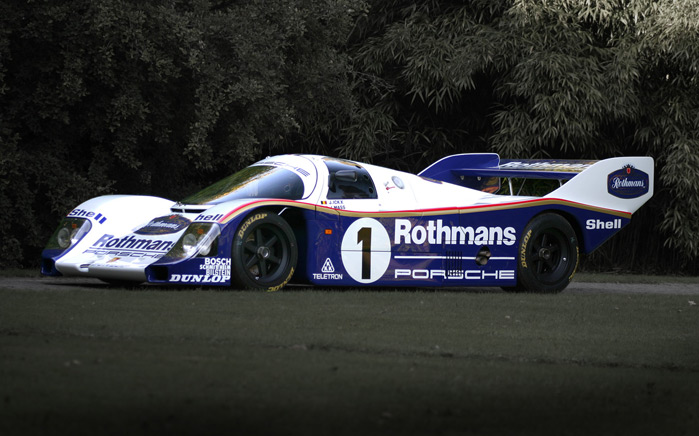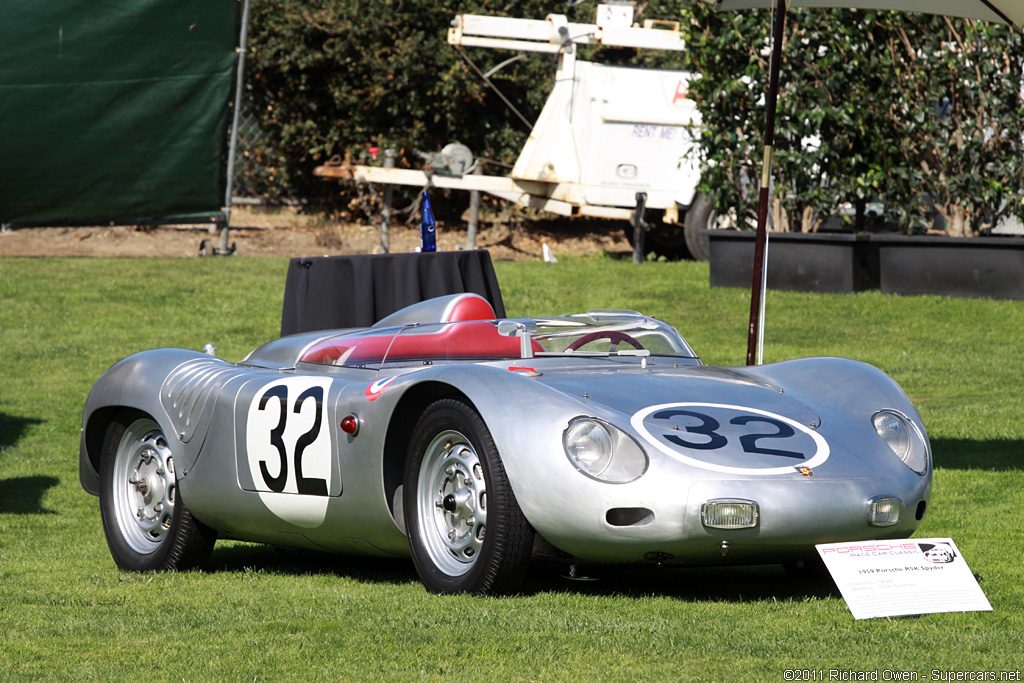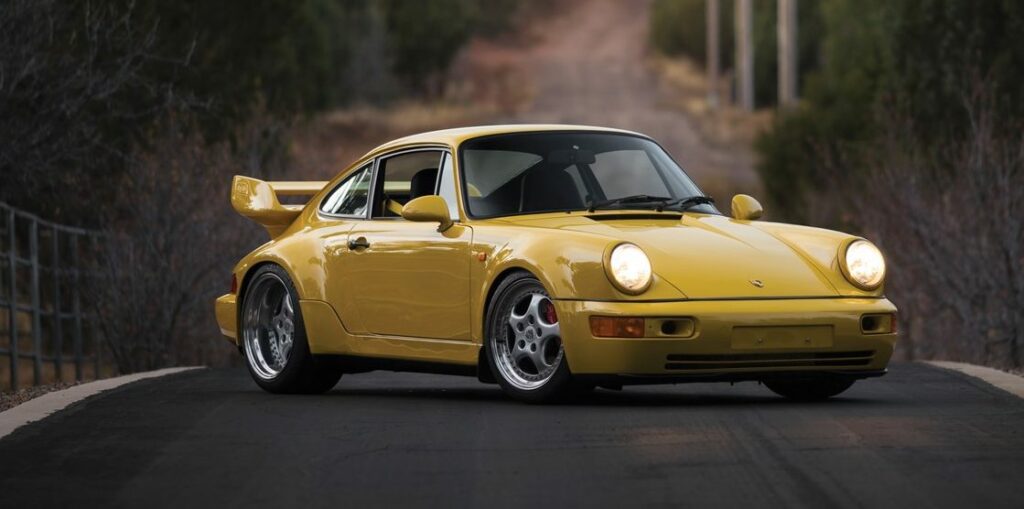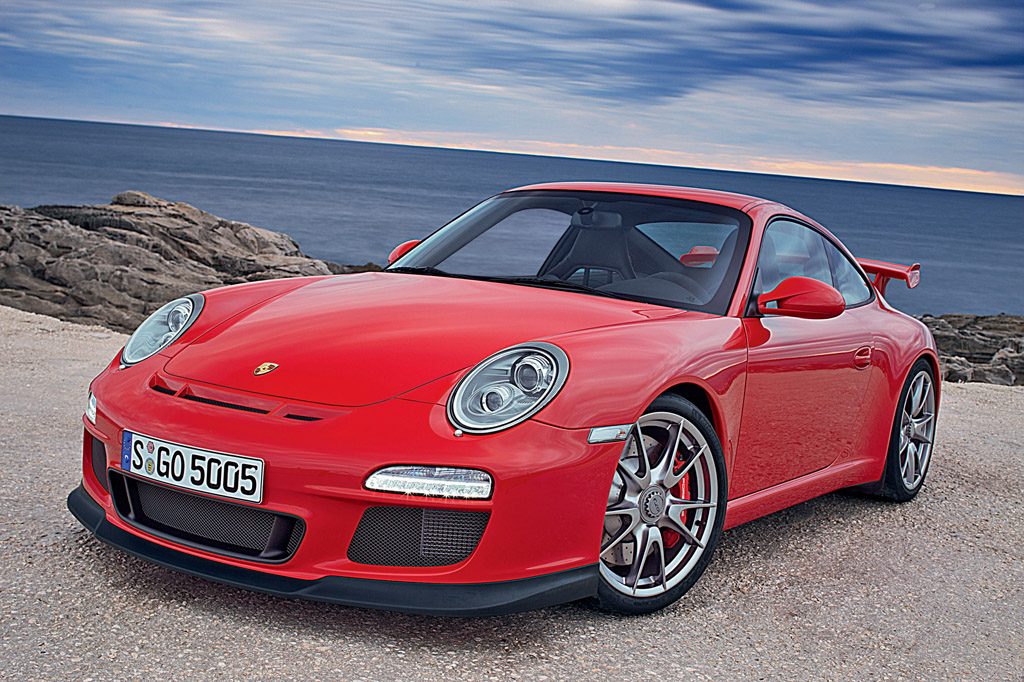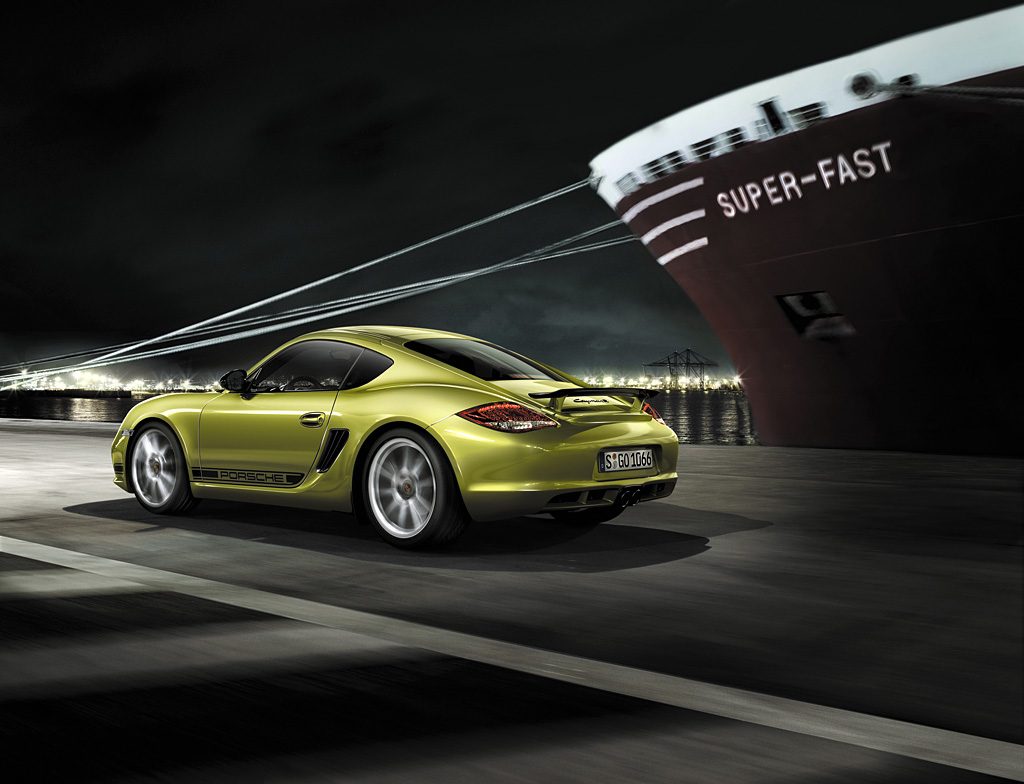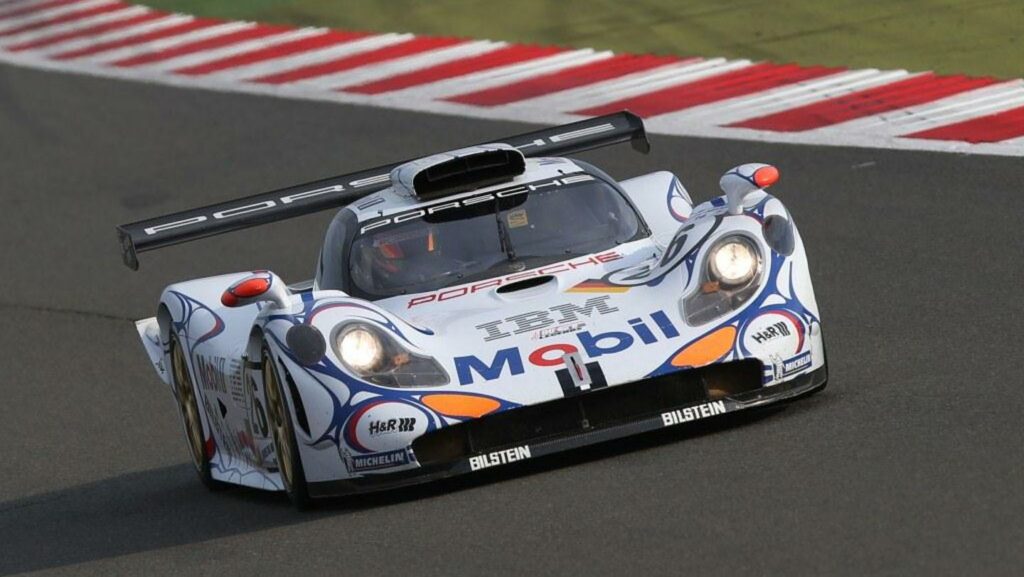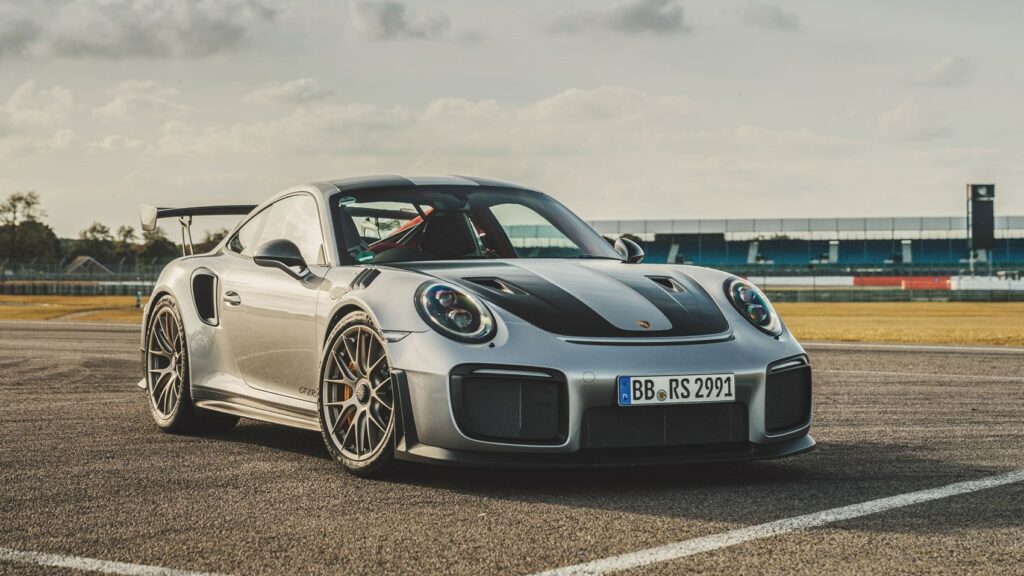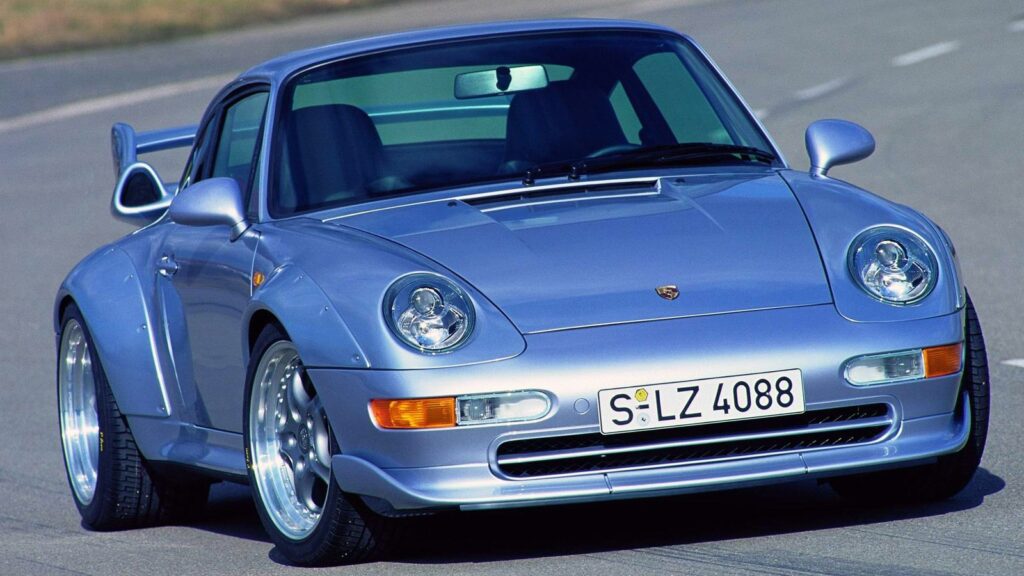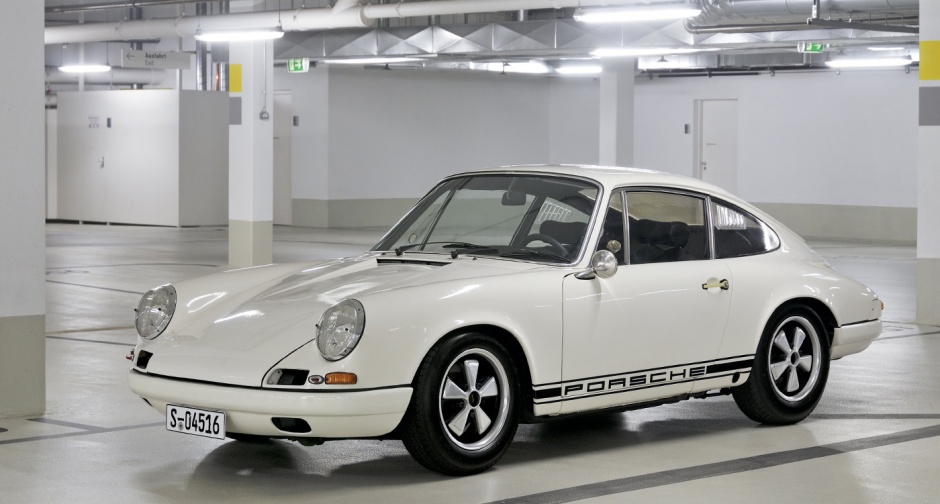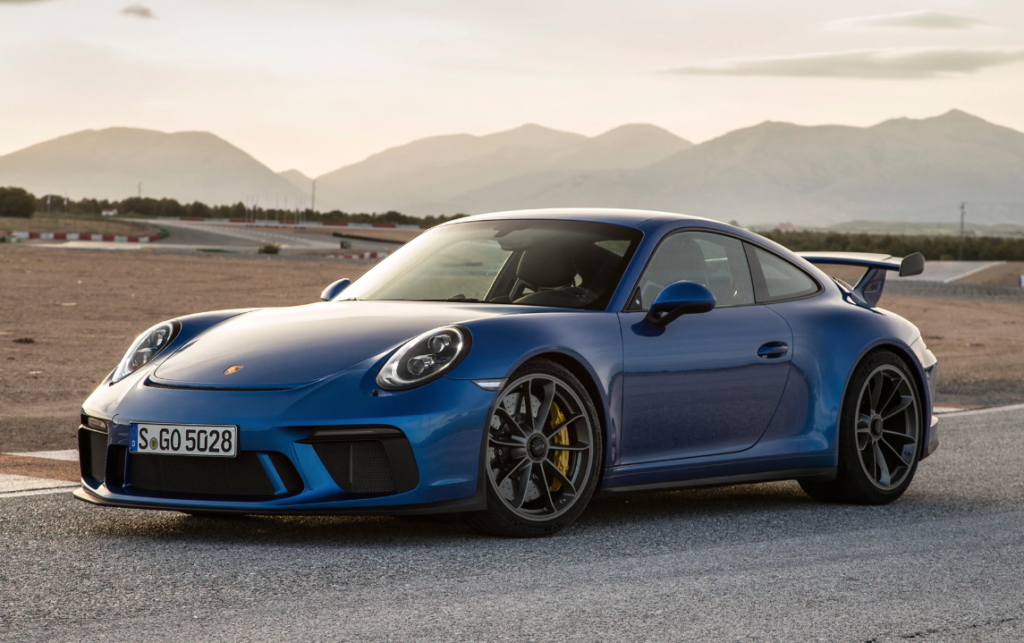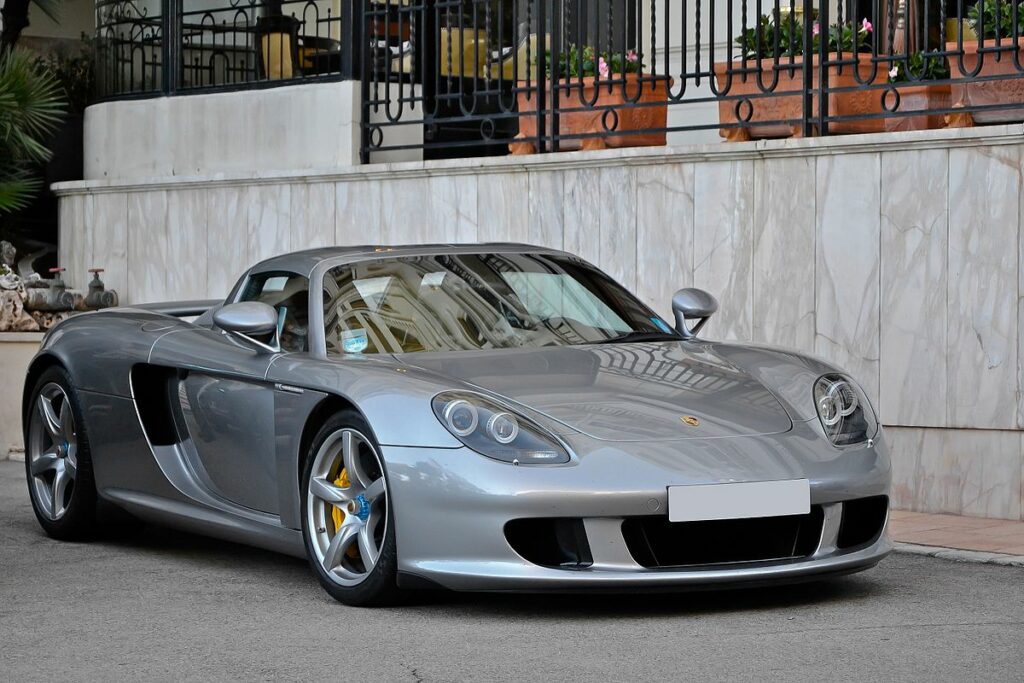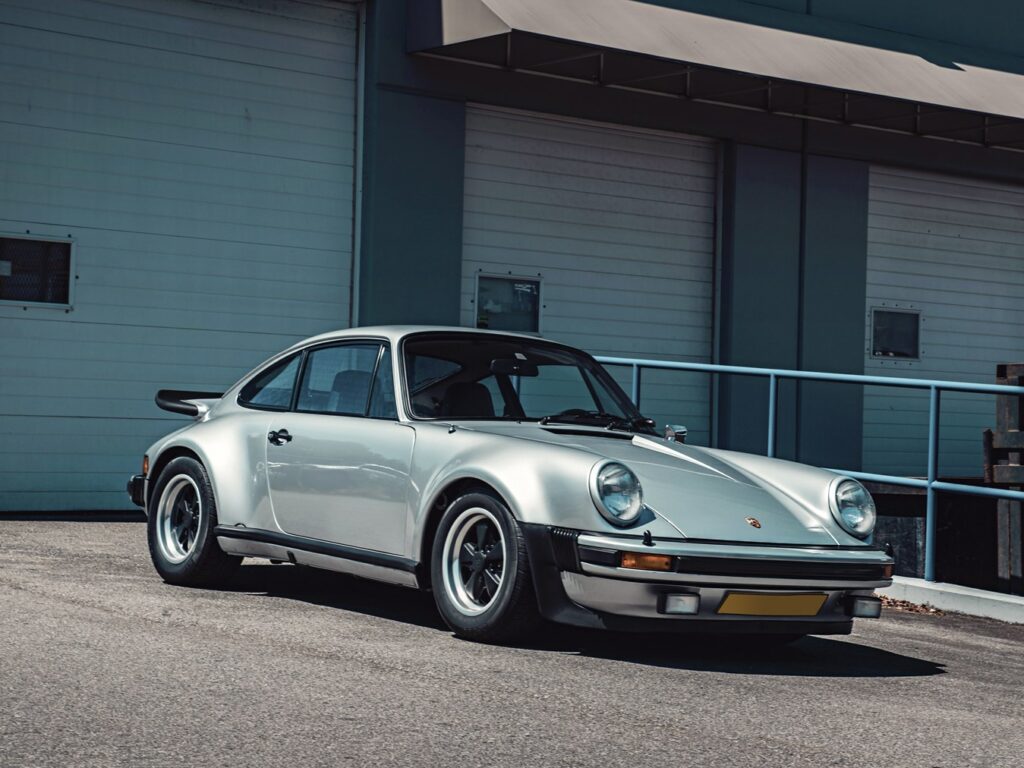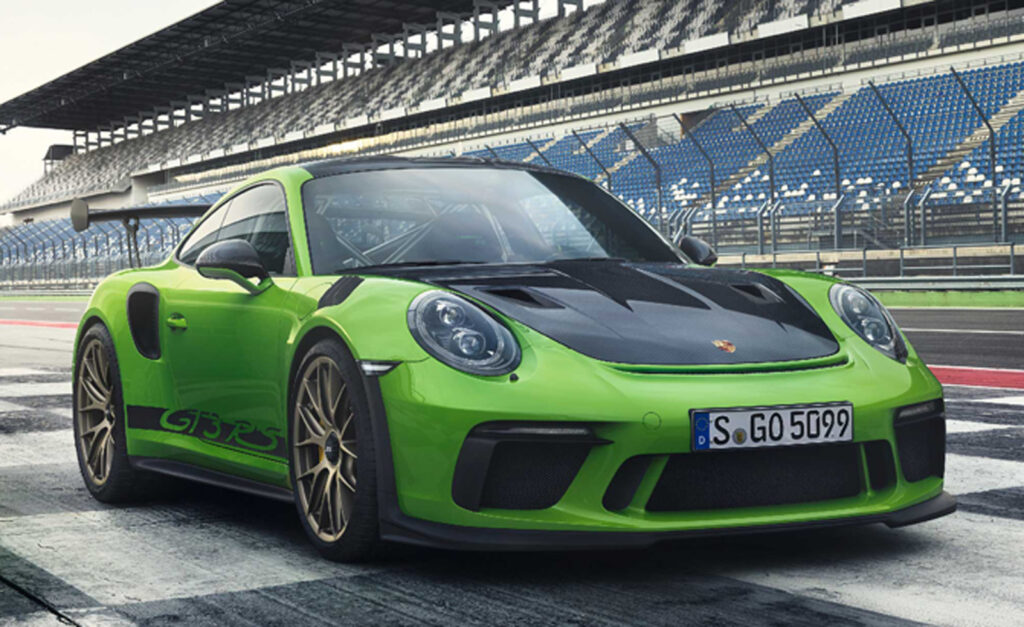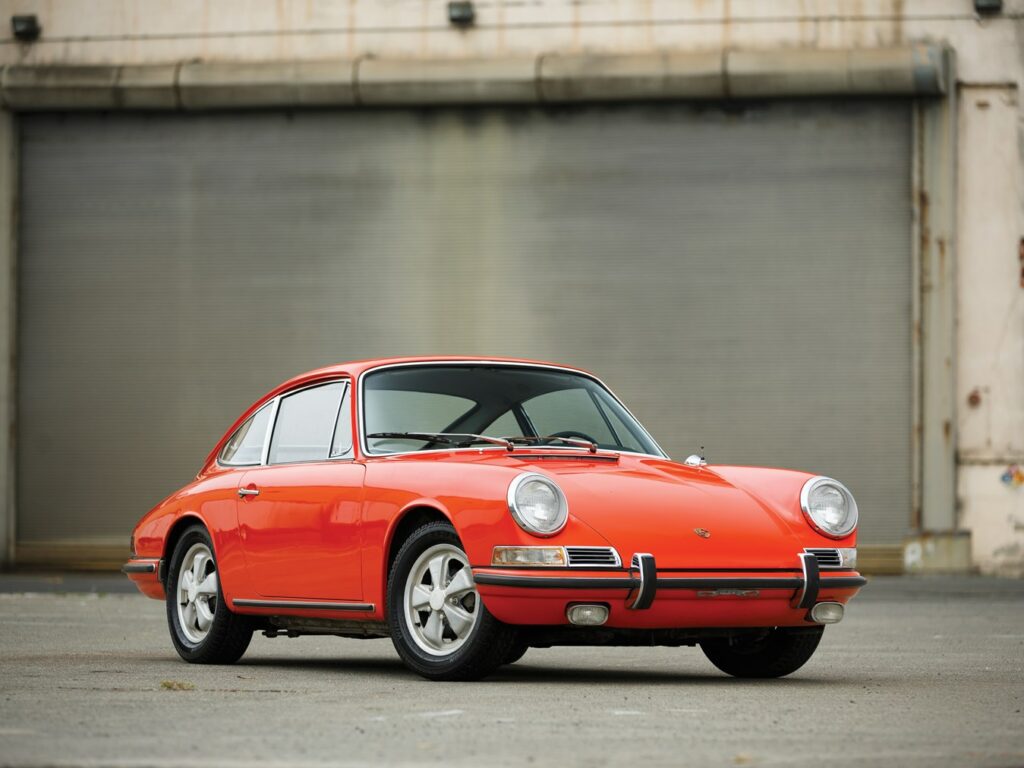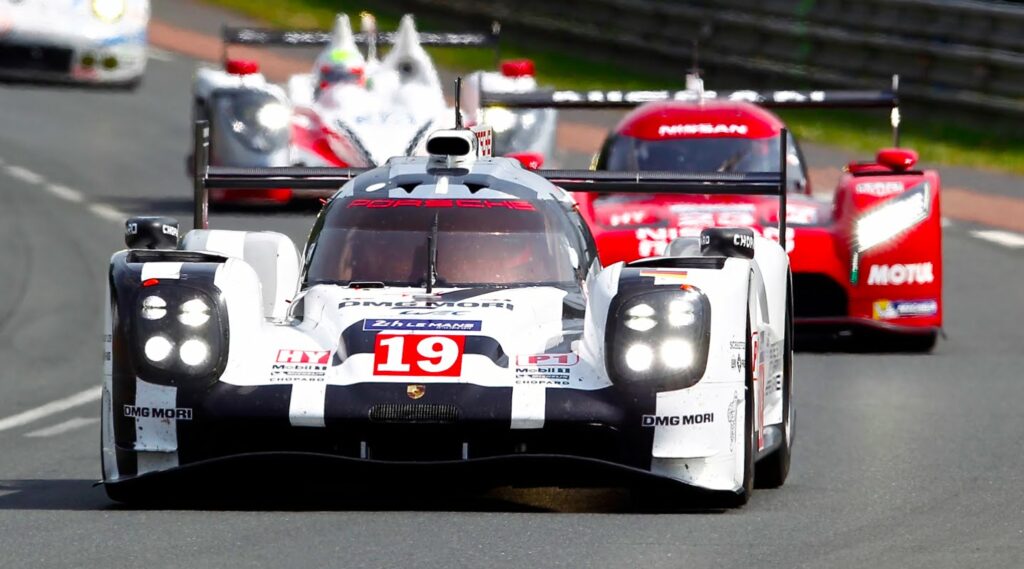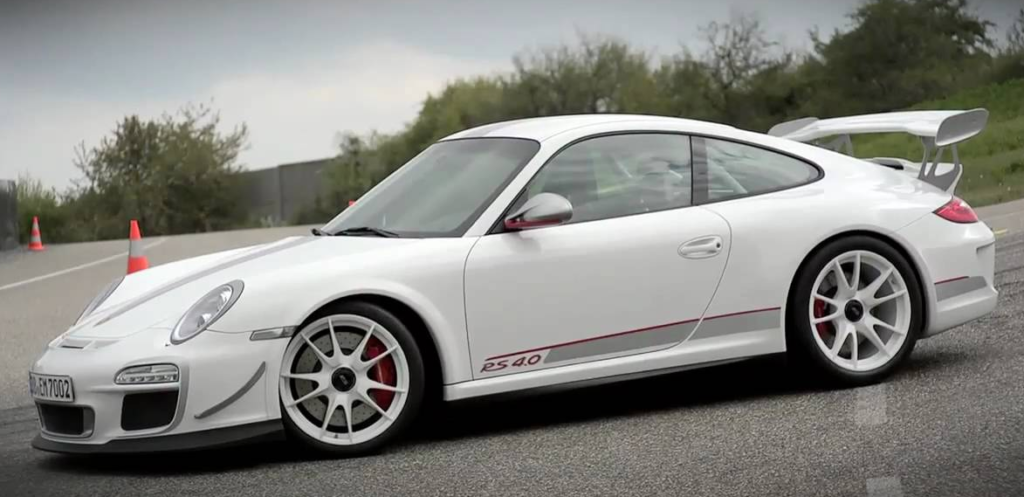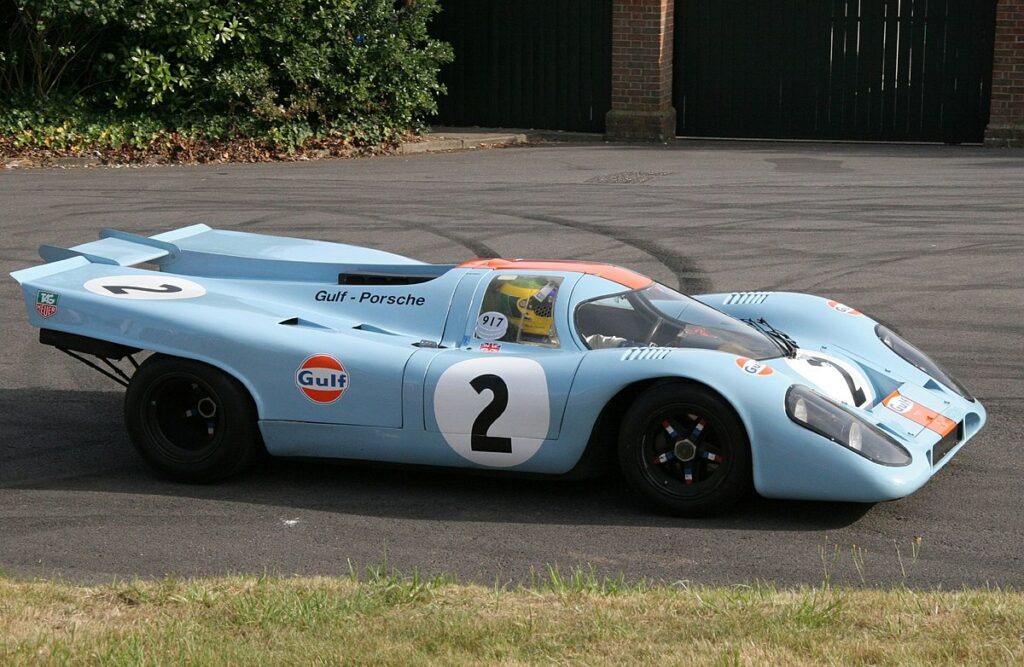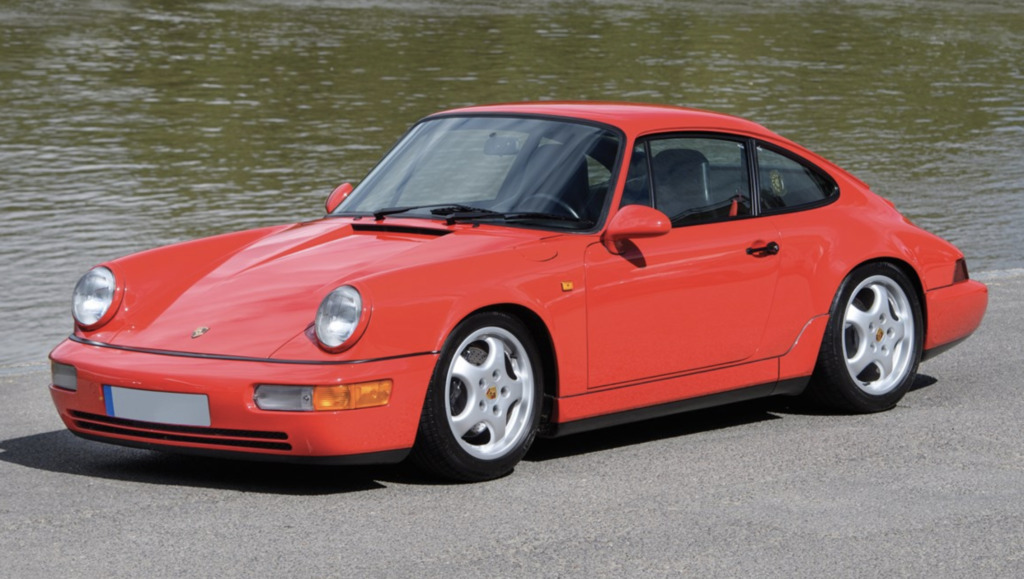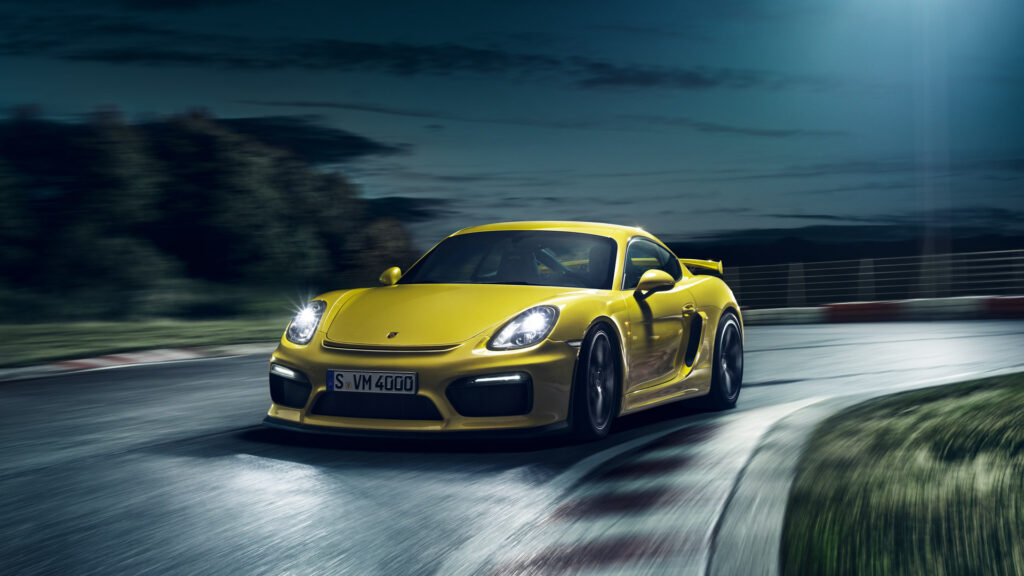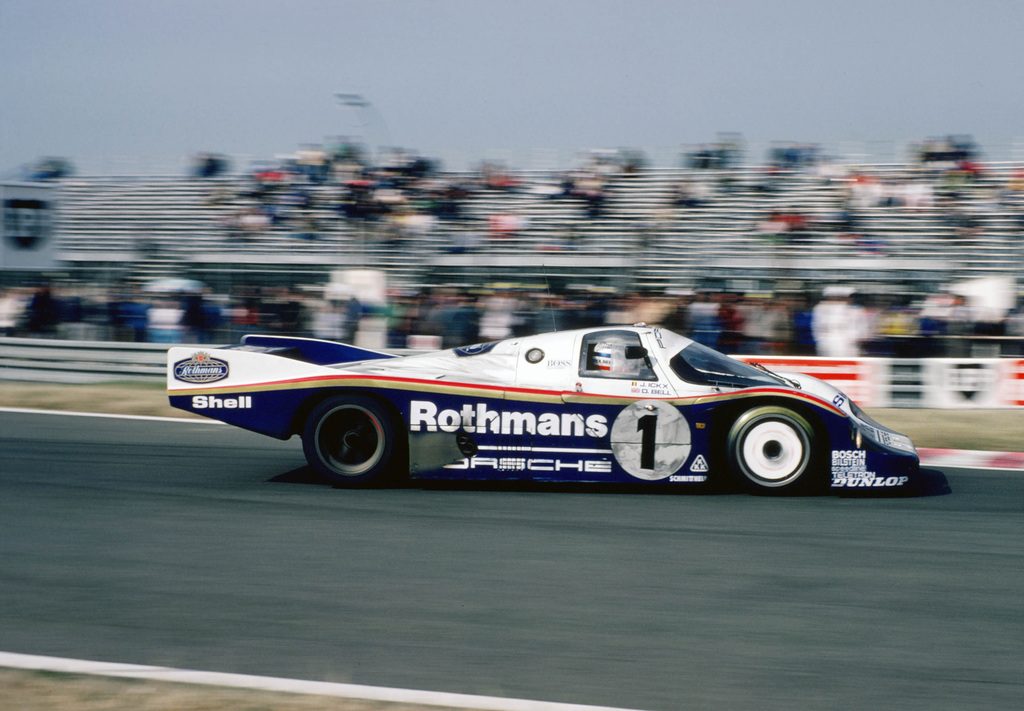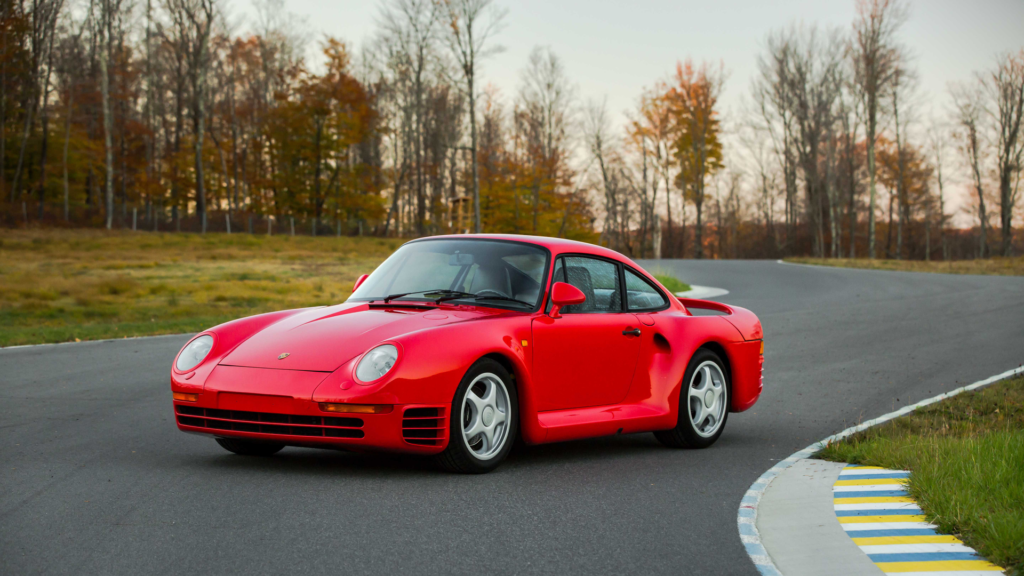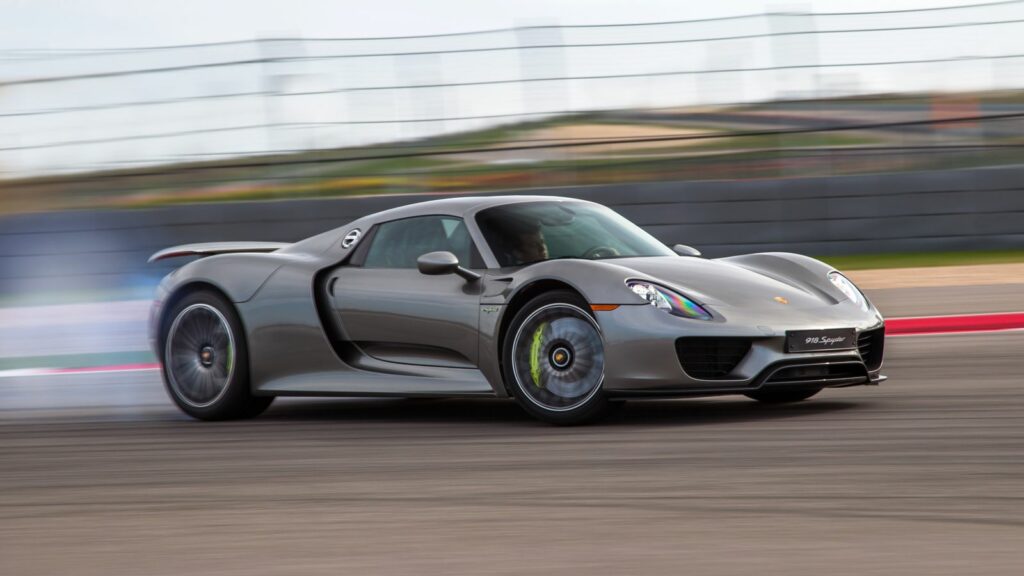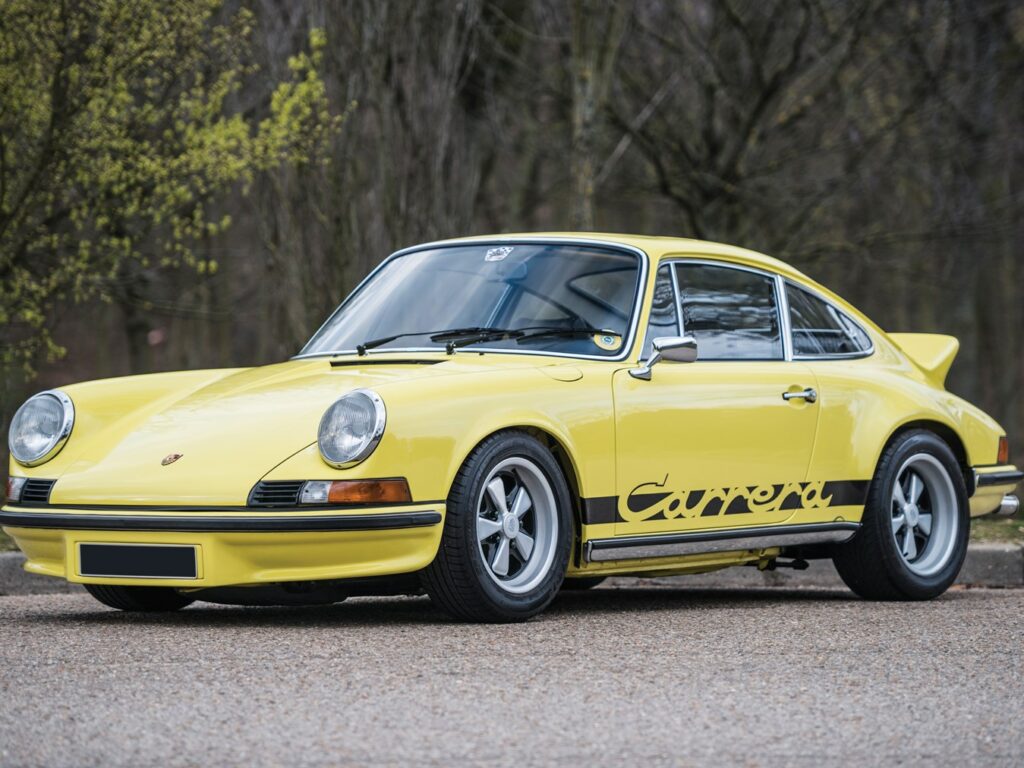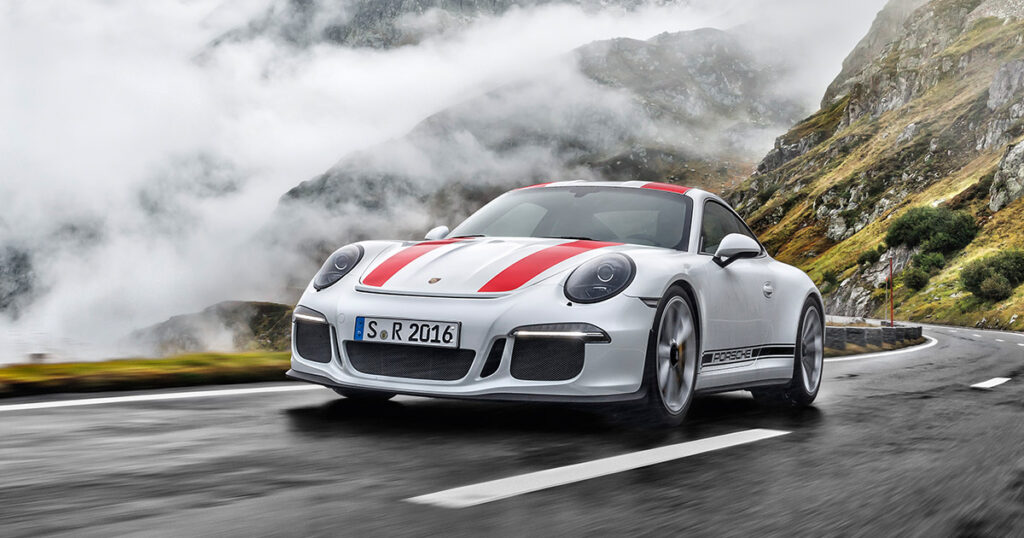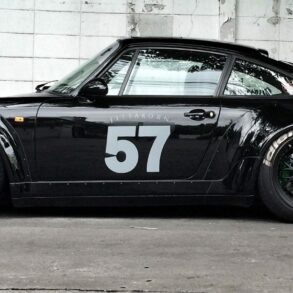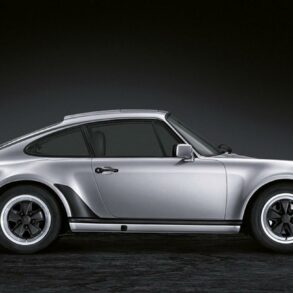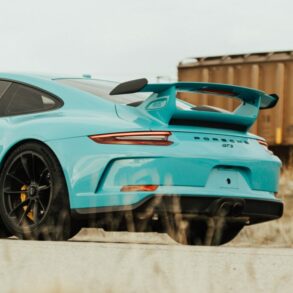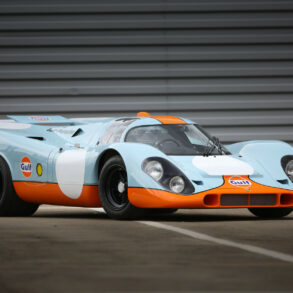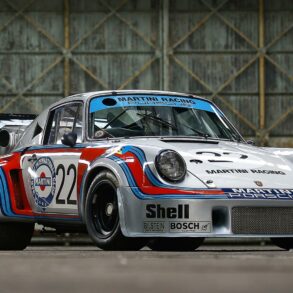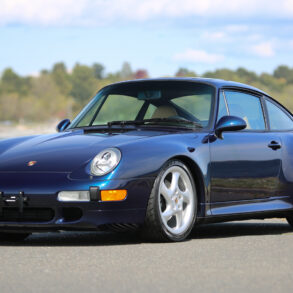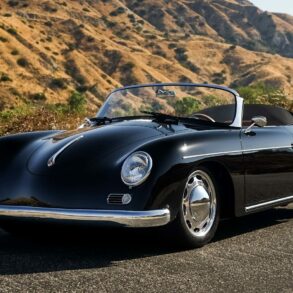The All Time Greats – 70 Best Porsches of All Time (Ultimate List)
Clearly we have been a bit of a “best of Porsche” run lately. With Porsche celebrating 70 years in 2018 we felt it was a good time to dive deep into Porsche history and pick our favorite cars from this storied carmaker. First we finished our full Porsche model list page, then we moved onto the best non-911 Porsches before outlining our picks for the best Porsche race cars and finally there was the ultimate list of the greatest 911s.
Here we are, our final Porsche list just after 70 year celebration. In this list we list the greatest Porsche models ever. That’s right, we attempted to give you the ultimate Porsche list. We are ready for the backlash, abuse and “are they crazy” comments we are about to receive from Porsche fans all over the world.
How We Chose The Best – Our Process
We broke down the list of all Porsche models by type (race car, production model, 911 models, special editions, supercars and so on). We went through each category to pick our favorite cars. We looked at factors like historical significance, technology, performance, mystique and outright desirability both historically and today. That helped whittle the list down to about 130 cars that we deemed good enough to be considered an awesome Porsche. Next we started to narrow down the list to seventy Porsche’s that were worthy of their place in the best of Porsche list.
Once we had our seventy cars the next phase was a heated discussion for the next month of so trying to rank them all from 70 to 1. Again, we looked at the key factors and let each person on our five person panel decide where the cars sat on the list. Lots of back and forth, arguing, fighting and hours of research later and we were able to round out number 70 to 50. Getting from 50 to our top 10 took another two weeks of back and forth. The Top 10 Porsche’s ever was another two weeks of work and the least satisfying part of this process because the reality is that any car on the Top 10 Porsche list is good enough for first place. It really depends on which factor you find most important and so much of that is personal opinion.
If you look at Porsche cars through the lens of motor racing then your list of the top ten Porsche’s will different than mine since I’m less of a motorsports fan and more into cars I can use on the road. We tried to balance race cars with production cars, special models an supercars to have as fair a list as possible when you consider it all together as Porsche’s body of work across categories.
Porsche Cars Are Special
Lots of automakers like to brag about how their “racing heritage” informs their production vehicles, but nobody does it like Porsche. Their history in motorsports is unequaled and the Porsche has had success in Formula 1, Le Mans, Daytona, Nurburgring, GT Racing, Rally and much more.
It started with lightweight versions the 356 but things really took off with the “giant killer” 550 Spyder. Dedicated race cars like the 550, 718, RS, and RSK models were the focus of Porsche’s race program through the mid-1960s. Then came 8 cylinder cars like the 907, then the 908 and onto the flat 12 engine in the 917 that is considered one of the most iconic racing cars of all time and gave Porsche their first 24 Hours of Le Mans win. Recent success in LMP1 with its Le Mans winning 919 Hybrid shows that Porsche can still mix it at the top (when it wants to).
Porsche has had success with 911 racing variants with the Porsche 911 Carrera RS and Porsche 935 coming to mind as cars that helped the 911 build its aura as a sports car icon amongst aficionados. The 911 has campaigned both by Porsche and by privateers in thousands of motorsports series with great success and even today, Porsche churns out specific racing models that enthusiastic buyers can snap up and drive in global races in addition to its formal race programs it competes in. In fact it was only this weekend that Porsche won Le Mans in the GT category.
Porsche has always made awesome cars but any “best of” Porsche list always has a bunch of 911s on it and this list is no different. It is the Porsche everybody knows. Yet picking the best 911 is harder than it seems. We found it hard to compare current 911s with older ones so this is probably the most subjective part of our list. For example, does a 991.2 911 GT3 RS deserve to be ahead of a 991.2 GT3 RS? Clearly the newer car is way faster, more focused and technically more advanced given the speed of technology innovation. But is is better? We had to make some tough calls that are bound to be controversial.
What about those awesome “not a 911” cars made by Porsche. Porsche has built some cracking non-911 cars over the years and while they are often forgotten these are some tasty machines that we would take any day. These fringe models helped grow the Porsche brand and fan base and fast forward to today, these fringe cars make up the bulk of Porsche sales. The Macan Turbo and Panamera Turbo S easily outsell the 911 and both are awesome cars with true Porsche DNA. These non 911 models deserve a spot on this list. We also went back in time to a few of our favorite supercars and some forgotten regular models that are still relevant and fun driving cars for collectors and newbies to the Porsche brand.
The takeaway is that there is a real breadth of accomplishment in the cars made by Porsche. Some are race machines that obliterated the competition. Some are hypercars that blew away the world with advanced technology that was a decade or more ahead of its time. Others are just cars that are/were awesome to drive.
We hope you enjoy our list of the greatest Porsche’s ever.
70. 911 Speedster Concept
Because we desperately want Porsche to actually make it.
Built: 2018 | Engine: Flat 6 | Power: 493hp | Top Speed: –
Porsche has rolled out the very cool 911 Speedster concept car. This car is meant to celebrate 70 years of Porsche sports cars. The design of the Speedster Concept is meant to pay homage to the very first Porsche 356 “No.1” Roadster.
Porsche gave the special car a two-tone paint job with silver and white trim and the concept was developed at the Porsche Motorsport Centre. That same place is where the 911 GT2 RS and GT3 RS were born. Porsche says that the concept gives a “glimpse” at the potential series-production version of the car.
The earliest you can hope for the new model to show up is 2019 and Porsche says that a final decision on a production version will be made in the coming months. We totally need to beg Porsche to make this thing and let us buy it for real. Pretty please.
69. Cayman GTS (981)
The essence of the brand
Built: 2015| Engine: 3.4L flat six | Power: 340hp | Top Speed: 177mph
Car & Driver called the Cayman GTS “the essence of the brand” and we totally agree. It includes all the right options bundled into a package that is not unreasonably priced and is just awesome to drive. While we specifically list the Porsche Cayman GTS, the Boxster GTS is equally awesome and deserves a spot on our list. We picked the 981 Cayman our our favorite. While the new 718 Cayman GTS is a great car, the soulless engine just isn’t special enough for us compared to the flat six in the last generation.
Why opt for a Cayman GTS versus the already awesome Cayman S. The Cayman GTS gets you a number of things standard above the Cayman S including Porsche Active Suspension Management (PASM), Sport Seats Plus, the Sport Chrono package (adds Sport Plus drivetrain setting, launch control on PDK models), the Sport exhaust system, leather and Alcantara all over the interior, the SportDesign steering wheel, dynamic bi-xenon lights, tinted taillights, and 20-inch wheels. The Cayman also gets a 15hp boost to 340hp that is noticeable on the road.
The unobtainable GT4 notwithstanding, the Cayman GTS is the perfect sports car. You get awesome mid-engine balance, a powerful and epic-sounding naturally flat-six that revs to the moon as well as suspension that is great on your daily commute and epic on weekend country backroads. Steering is light and direct in a way the competition can’t match.
It just works so well that it is impossible to fault. One of our favorite cars and worth diving into the classifieds to find versus buying a new 718 Cayman GTS.
More: Full 981 Boxster & Cayman Range
68. 911 Sport Classic (997)
Retro cool done right
Production Years: 2010 Generation: 997.2 Units built: 250
Engine: 3.8L flat-6 | Power: 408 hp | 0 – 60 mph: 4.6 s | Top Speed: 187 mph
Launched alongside the 997 Speedster (didn’t make our list but worth looking at) the Porsche 997 Sport Classic was built to celebrate 25 years of Porsche Exclusive. Complete with a double-bubble roof, genuine Fuchs alloys and a ducktail, the Sport Classic was the ultimate embodiment of Zuffenhausen’s special build skills. Some may argue that this is just a 911 Carrera S with a ducktail but to us this is more special, a nod to the good old days. The package is based on the Carrera S but uses 4S rear bodywork for that wider and lower look plus the wider rear track.
The most obvious aesthetic change is the double-dome roof and the SportDesign fascia and unique lip spoiler in front. At the rear the famous ducktail spoiler brings back Carrera RS 2.7 memories. Speaking of memories, check out the black-painted 19-inch retro-styled Fuchs wheels. Other small touches, such as black headlight-trim rings and black side-mirror brackets. It is the prettiest 911 of that generation. Mechanical bits include the Carrera S’s 3.8-liter flat-six paired only to a six-speed manual gearbox (no auto available). While it is also shared with the Carrera S (where it makes 385 horsepower), the Sport Classic is fitted with the optional engine “Powerkit” as standard equipment, the result is 408 horsepower (at 7,300 rpm) and 310 pound-feet of torque (at 4,200 rpm) with the redline set at 7,500 rpm. A sport suspension, a locking rear diff, and carbon-ceramic brakes are all standard.
More: 2010 Porsche 911 Sport Classic
67. Lohner-Porsche
Tesla S who?
Built: 1900-1905 | Engine: 4 Electric Hub Motors | Power: 10-14hp | Top Speed: 37mph
Porsche built an electric car more than 100 years before the Tesla S… and he was still only 28 years old.
The Tesla S was introduced on June 22, 2012. 112 years earlier Porsche unveiled the “Lohner-Porsche” automobile at the 1900 Toujours-Contente (Paris World Expedition). The automobile had hub mounted electric motors that were directly powered by 1800kg of lead acid batteries. Most automotive historians recognize this 1900 Lohner-Porsche as the first, full-electric automobile.
More: Lohner-Porsche Phaeton
66. Porsche 911 GT3 R Hybrid 2.0
This hybrid race car is no Prius. Porsche decided to work with the Williams F1 Team to develop hybrid tech that it could use to go racing. They essentially took the F1 kinetic energy recovery system (KERS) (but used kinetic energy stored in a flywheel rather than batteries) to create the epic GT3-R with its two electric motors assist.
The electric motors added 218 hp to the front wheels to supplement the 470 hp four-liter flat-six engine at the rear. The 911 GT3 R Hybrid was a game changer and that was clear when racing bodies at the time didn’t know how to classify the car.
Compared to its predecessor the second-generation hybrid is our pick. It was 20 percent lighter and more efficient. The GT3 R Hybrid 2.0 features a monocoque body of hot-galvanized steel with a welded roll cage. Body panels are carbon fiber and there are lightweight polycarbonate windows on all sides, including the front windshield. At each corner is a height-adjustable suspension with dual coil springs and Sachs gas-pressure fixed-position dampers. The steering rack is power-assisted, with an electro-hydraulic pressure feed.
With a curb weight of just 2,866 pounds and a total system power of 672 horsepower, the all-wheel-drive Porsche GT3 R Hybrid 2.0 will accelerate to 60 mph in about 2.5 seconds. Its top speed is gearing limited to about 175 mph but that doesn’t seem to be an issue when racing. In September 2011 it impressed everybody when it competed in an exhibition class during an American Le Mans Series (ALMS) race at Laguna Seca. Starting last it outran the entire GT class.
65. 1995 Porsche 928 GTS
Chalk this one up to nostalgia
Built: 1995 | Engine: 5.4L V8 | Power: 345bhp | Top Speed: 171 mph
The 928 GT and GTS were really expensive 928s that were known for being almost impossibly expensive to maintain and laden with lots of issues to keep you busy maintaining them. Maybe we will chalk adding them to our list as nostalgia since this was the Porsche era I grew up in and I loved it.
The 928 GTS went on sale in late 1991 as a 1992 model in Europe and in spring of 1992 as an early 1993 model in North America. Changed bodywork, larger front brakes and a new, more powerful 5.4 L, 350 PS (257 kW/345 hp) engine were the big advertised changes. While they were great cars, the near $100k price meant they sold poorly and were quickly discontinued (only 77 of them shipped to the to the US).
While the Porsche 928 never sold in the numbers originally envisioned, the 928 did develop a following over time. The 928 GT was sportier than the 928 S4. The last evolutionary stage of the 928 was the GTS and it featured flared rear wings, a red light panel at the rear, a rear wing painted in exterior color, exterior mirrors in the Cup design plus 17″ Cup rims as standard. The 5.4-liter engine of the GTS generated 350 hp.
More: Full Porsche 928 Model List
64. Porsche 356
Fun diminutive sports car that built the Porsche brand
Build: 1948 | Engine: 1.1L flat four | Top Speed: 84mph
This is the first real Porsche product car. Created by Ferry Porsche, the 356 featured a four-cylinder, air-cooled, rear engine, rear-wheel drive car with unitized pan and body construction. The Porsche 356 was a hybrid of new-and-old elements, incorporating an entirely new body design that was developed by Porsche employee Erwin Komenda while utilizing engine and suspension components that were initially sourced/developed for the Volkswagen.
By the early 1950’s, the 356 had gained some recognition amongst automotive enthusiasts both in Europe and in the United states for its aerodynamics, handling and excellent build quality. In 1951, a Porsche 356 was entered in the 24 Hours of Le Mans. The car, still equipped with the modified Volkswagen 1.1L engine, won its class, completing 210 laps during the 24-hour race. This impressive accomplishment bolstered sales, and it became common for owners of the 356 to race their cars as well as drive them on the streets.
More: Porsche 356 History & Timeline | Porsche 356 Model List
63. 1963 Porsche 901
The one that started a legend
Year: 1963 Generation: 901 Units built: 82
Engine: Flat-6 Power: 130 bhp 0 – 60 mph: 8.3s Top Speed: 130mph
In 1963 Porsche introduced their seminal 901 at the 911 at the Frankfurt Motor Show. Peugeot objected to the model designation because they had patented a three-digit type designation with a zero in the middle. The 901 was renamed 911 for the 1964 model year. We still count it as the first 911 which is why it makes our list over the 1964. Series production of the 901 began in September 1964.
At the 1963 Frankfurt show the public saw Porsches new direction. Compared to the 356 it had a longer wheelbase, a more compact suspension setup and much more power from the flat-6 engine. This is the car that started the legend. 82 units of the 901 were produced before the name change.
More: 1963 Porsche 901
62. Porsche 964 C4 Lightweight
964 minus 770 lbs
Year: 1990 Generation: 964 Units built: 22
Engine: 3.6L Air-cooled Flat-6 | Power: 300 bhp | 0 – 60 mph: 4.9 s | Top Speed: 161.59 mph
A handful of specially prepared lightweight 911s were fabricated by the Porsche factory and called the Carrera 4 RS Lightweight. Built by Porsche’s customer motorsport division, the Porsche 964 Carrera 4 Lightweight programme was Jürgen Barth’s way of keeping his department employed in the wake of Group C’s collapse. 130kg lighter than a 964 RS, the Carrera 4 Lightweight used the four-wheel drive drivetrain from the Dakar-winning 953 rally car and was originally envisaged for off-road use. The cars employed the same six-cylinder 3600cc boxer engine as the 260hp “regular” RS, but produced some 40 more horsepower due to the exclusion of catalytic converters and mufflers.
The RS Lightweight earned its name thanks to the combined use of an aluminum front lid, aluminum doors, Plexiglas side windows and a fiberglass rear engine lid. Its overall weight was pared down to 1100kg (2200 lbs) thus making for an exceptional power to weight ratio. For those keeping count that is 350kg (770 lbs) lighter than standard 964 C4. They also added a short ratio 5-speed transmission with lightweight flywheel.
The list of weight reduction features included an aluminum safety cage, two Recaro race seats with five-point safety belts, sport steering wheel coupled to a power assisted steering rack and a type 953 Paris-Dakar transmission. The doors and front hood replaced with aluminum versions and side window glass replaced with plexiglass. Carpeting and sound deadening was removed and left as bare metal.
More: 964 Model List, 1990 Porsche 964 C4 Lightweight
61. 944 S2
What the 924 should have been
Built: 1989-1992 |Engine: 3L four cylinder | Power: 208hp | Top speed: 150mph
Extra poke and more torque plus cool 944 Turbo nose made this our pick of the 944 range.
When the 944 launched for the 1983 model year, Porsche hoped it would mark a change in tides for its entry-level-priced car. The 924 that preceded it was mired in cries of “not a real Porsche” on account of its front-engine, water-cooled configuration, and tepid performance from its Audi-derived 2.0-liter inline-four. And that’s to say nothing of the 924’s meek, egg-shaped styling.
Porsche considered using a six-cylinder engine for the 944 but ruled it out quickly, believing the necessary cost and development time wouldn’t result in any significant advantage over a well-designed four-cylinder — if anything, a six-cylinder would be heavier. In the end, Porsche essentially chopped off half of the SOHC V-8 from the flagship 928 model, creating an eight-valve, 2.5-liter inline-four making 143 horsepower. Without the opposing bank of cylinders to balance out vibration, Porsche licensed belt-driven balance-shaft technology from Mitsubishi, which results in near-six-cylinder smoothness. A five-speed transaxle is hung out back, giving the car even weight distribution for excellent handling.
Porsche also toughened up the styling, adding dramatic box flares at the front and rear wheel arches, inspired by the 924 GTR race cars that ran at Le Mans. The flares were more than just eye-pleasing, as they allowed Porsche to run wider wheels and tires on later, more powerful 944 variants.
Indeed, the 944 evolved over time, dropping its dated 924-style interior halfway through 1985 for a sleeker dashboard and center console. A 944 Turbo with bigger Brembo brakes and a better-integrated front bumper came in 1986 with 217 hp. By 1987, Porsche introduced the 944 S with the same 2.5-liter, naturally aspirated engine as the standard 944, but a new 16-valve, DOHC cylinder head bumped output to 190 hp. Yet the ultimate naturally aspirated 944 is the 944 S2, which arrived for the 1989 model year. With a redesigned engine block, the S2’s engine capacity rose to 3.0 liters, making it the largest four-cylinder engine in production at the time. It retained the 16-valve cylinder head, and the car also got the Turbo’s Brembos, integrated nose, larger anti-roll bars, 16-inch wheels, and stronger five-speed gearbox. Output increased to 208 hp and 207 lb-ft of torque — almost the equivalent of early Turbo models but without the low-end lag inherent to those cars.
The 944’s charms are once again apparent. From the excellent weight distribution, which earned it handling accolades when new, to the nostalgic traits of German build quality—evident even in the soft click when you close a door—that simply aren’t found in newer Porsches, the 944 is a reminder of a special period in Porsche’s history. Add to that 2+2 practicality and a spacious rear hatch, and the 944 is a classic you can use daily.
60. Panamera Turbo S E-Hybrid
Porsche has fixed the Panamera’s styling. Not much to complain about aside from the price.
Built: 2017-present | Engine: Hybrid 4L V8 | Power: 680hp | Top speed: 188mph
I know we are going to get some hate mail for including a Porsche sedan on our best of Porsche list. Here’s the thing. A Porsche sedan used to seem like a weird concept. The first Panamera certainly drove like a Porsche but was ugly. The new Panamera looks good and drives even better than the first one. So here we have a four-door passenger car that looks great, drives great and is perfect for the family.
Our favorite in 2018 is the Turbo S E-Hybrid. The “base” Turbo comes with a twin-turbo V-8 making 550 hp and 567 lb-ft, the Panamera Turbo. An eight-speed automatic and all-wheel drive put power to the ground and it rips to 60 mph in 3.0 seconds flat. Spend a little more for the Turbo S E-Hybrid and you get electric assist which boots power to 680-hp. The E stands for executive and add almost six inches of wheelbase for extra back-seat room. This is the car to take across continents. New for 2018, the plug-in hybrid is the replacement for the last-generation Panamera Turbo S range topper.
59. Macan Turbo (with Performance Package)
Our favorite small SUV (by far)
Built: 2017-present | Engine: Turbo 3L V6 | Power: 440hp Top Speed: 158mph
The Macan S is a brilliant Porsche drivers car that can be used every day and is practical with loads of space. What isn’t there to love. This is a compact SUV that is all about performance. Five doors, five seats, decent space for the family and a 440-hp twin-turbo V-6 mated to a seven-speed transmission with all-wheel drive. The $10k performance package gets you an additional 40 horsepower and 36 lb-ft of torque over the Turbo Macan and we say it is totally worth it. It is crazy fast and we guarantee that any purist will fall in love with this diminutive Porsche daily driver.
58. Porsche 968 Clubsport (CS)
Lightweight special edition was more fun
Build: 1992-1995 | Engine: 3L four cylinder | Power: 237hp |Top Speed: 157mph
For 1993 thru 1995, Porsche offered a light-weight “Club Sport” variant of the Porsche 968 which was specifically developed for owners looking to run their cars at the racetrack. Much of the base model 968’s “luxury-oriented” equipment was stripped out of the car, or simply not offered to consumers purchasing the Clubsport edition. Less sound deadening material was installed. Electrical options (like power windows and seats) were replaced by manually operated components, although Recaro racing seats were included – due to both their lightweight design and improved side-bolsters for improved driver restraint during track driving conditions.
Mechanically, the car was specially set up for use at the race track. It featured wider wheels (17 inch instead of 16) and wider (225’s in both front and rear) tires than those found on the standard coupe. The suspension system was lowered by 20 millimeters and was revised for more optimal performance in hard corners.
The car was named “Performance Car of the Year” in 1993 by United Kingdom-based “Performance Car” magazine. A Porsche 968 Club Sport was driven in the 1993 “Sandown 6 Hours,” an Australian endurance race event. The car, driven by Peter Fitzgerald and Brett Peters, went on to win that event. The victory was especially sweet for Porsche as the event marked the Australian competition debut of the car.
See Also: Porsche 968 History & Timeline
57. Porsche 911 GT3 RS (996)
Production Years: 2003-2004 Generation: 996 Units built: 682
Engine: 3.6L Water Cooled Flat-6 | Power: 376 hp | 0 – 60 mph: 4.2 s | Top Speed: 190 mph
In 2003 Porsche launched the GT3 RS in order to homologate the GT3 RSR for racing. While you could drive the 996.1 and 996.2 GT3 on the road, the GT3 RS was a more uncompromising track-ready 911 that was tough as a road car.
GT3 RS horsepower remained the same as the GT3 but there was a real difference in performance from other changes. Wider tires were fitted with a revised suspension for track use, and a large rear spoiler was fitted to help increase downforce. Weight was reduced by removing interior sound deadening, air conditioning, rear seats, and adding a Perspex rear window. The diet meant the GT3 RS tipped the scales at just under 3,000 pounds (110 pounds lighter than the GT3). All GT3 RS cars were also fitted with a full roll cage. Reduced mass was advantageous to the car’s performance, since power and torque remained identical to the 996.2 GT3.
The emphasis for Porsche was on achieving the best possible power-to-weight ratio and with a figure of 4.86 kg/kW has resulted it was 4% better than GT3. The GT3 RS power is transmitted via a close-ratio six-speed gearbox. Between the engine and the gearbox the “RS” has a single-mass flywheel with a lower rotating mass than the double-mass version. Performance improved with 0–60 mph time of 4.2 seconds and top speed of 190 mph. The biggest differences came on track however, with the GT3 RS being a purer race car and perfect circuit car.
As for the 996 GT3 RS, its place in history is already secured. Rarity, status and ability have already led to soaring prices. It’s not unusual to find examples on sale for far more than a brand-new 991 GT3 RS.
More: 2004 Porsche 911 GT3 RS
56. Porsche 908
In the late sixties, Ferdinand Piëch wanted Porsche at the top of motor sports and the 908 was his answer. In facing the best that both Ferrari and Ford could produce, it sparked a new generation of Porche prototypes that led to their most successful era. For the first time, Porsche completed in all the championship races with hopes of overall victory. This new era began when the 908 Coupés supported the much smaller 907 mid way through the 1968 championship season.
The 908 was the first car built for the CSI’s prototype Group 6 class that limited engine capacity to 3 liters. In 1968 the only competition came from the JW Engineering Ford GT40s which won Le Mans and the championship. The 908 prototype was named after its eight-cylinder, flat-6 engine. Driven by some of the best drivers, the 908 had a successful career in 1968/69 that included wins at the SPA-Franchorchamps 1000km two years in a row. Under continual development, the design was modified and raced as the 908/2 and 908/3 Spyder for tighter tracks.
Porsche achieved its first overall victory at the 24 Hours of Daytona with the Type 908 LH. The grand successes of the previous year at the 1,000-kilometre race on the Nürburgring and the Targa Florio are repeated. The 911T wins the Monte Carlo Rally.
At the end of 1967, when the displacement limit for prototypes in the Constructor’s World Championship was reduced to 3 litres of displacement (homologated Sports Cars were allowed 5 litres), the 908, with its new 350-hp eight-cylinder engine, could be raced in the long or short-tail version depending on track and competition.
More: Porsche 908
55. 550 Spyder
The original giant killer
Built: 1953-1956 | Engine: 1.5L flat four | Power: 110hp | Top Speed: 140mph
The ‘type 550’ Porsche rewrote motoring history and soon became known simply as the ‘Giant Killer’. It was Porsche’s first purpose-built racer and is known most famously as the car that James Dean was driving when he was killed. The iconic car was based on the 356, but was designed with racing in mind. It used a highly-tuned, four-cam version of its venerable air-cooled flat-four. The 550 had a revolutionary (at the time) rear mid-engine setup that radically improved agility and balance. The 550’s flat-four sat in front of the rear axle and transmission instead of behind them. This improved balance and agility tremendously but killed the back seat, much to the chagrin of exactly zero people. Very few 550 Spyders were produced with a large number of the cars being used for racing. Today, original 550 Spyders change hands for well over 5 to 10 million dollars even in the most ‘original’ condition before restoration.
54. Porsche 959 Rally
As part of an extensive road testing programe, the 959 was taken to the desert. The motorsport department at Weissach built a version specifically designed for the Paris-Dakar rally in 1985. Porsche entered three 959s in the race. Power was transmitted to all four wheels via a 6-speed transmission and a pioneering, electro-hydraulically controlled centre differential. The 959 featured a 330-litre fuel tank. Like the 911 which won Paris-Dakar in 1984, a synthetic body made the vehicle considerably lighter; the 959 weighs 1,260 kg. First place in Dakar went to René Metge followed by Jacky Ickx – A double victory for Porsche. Kussmaul brought his 959 to the finish in West Africa in sixth position. On the journey through the Sahara, the Porsche vehicles reached speeds of up to 242 km/h.
53. 1989 Porsche 911 Speedster
The iconic softtop still cool today
Year: 1989 Units built: 2,104 (171 narrow body, 1933 Turbo-look)
Engine: Air-cooled Flat-6 | Power: 231.1 bhp | 0 – 60 mph: 6.0 s | Top Speed: 152.2 mph
The 911 Speedster was introduced alongside the new 964 Porsche Carrera 4 at the 1988 Frankfurt Show.
It was immediately popular amongst Porsche buyers. Unlike the 964 prototype this Porsche 911 Speedster catered to comfort. It was basically a low-roof version of the Cabriolet and was produced in limited numbers (2,104) as both a narrow body car and a Turbo-look. The Speedster started as a design under Helmuth Bott in 1983 but was not manufactured until six years later.
This was the last vehicle with the old 911 body and that’s why it makes our list of greatest 911s. The Speedster stole some body bits from the 930 Turbo as well as the Turbo’s beefier chassis and heavy-duty four-piston cross-drilled disc brakes. The Speedster is best known for its double-hump cover design .
Undeniably, the Speedster had “collectible” written all over it, and all 2,100 were quickly snapped up by would-be profiteers.
More: 1989 Porsche 911 Speedster, 964 Model List, Speedster Porsches
52. Porsche 911 Turbo Flachbau (930)
Absurdly expensive but oh so ’80s cool
Year: 1981-1987 Generation: 930 Units built: 948
Engine: Single turbo flat-six | Power: 260 to 330 hp | 0 – 60 mph: 4.7 s | Top Speed: 171 mph
Demand for the 930 Turbo soared at the turn of the 1980s, which is why Porsche decided to introduce option M505 which was known as the Flachbau or “flat nose” or “slant nose”. The model was offered as part of the special order program beginning in 1981 and Flachbau unit was handcrafted by remodeling the front fenders (option code M505). In 1986 (1987 model year) Porsche finally offered the slantnose straight from the factory. The official designation in the UK was Turbo SE.
The regular 930 Turbo was costly enough, but the stylistically different Flachbau commanded a big premium over it because the ‘80s were all about having the most expensive whatever. Besides the flat front, the car also came with a different engine than the older Porsche models, namely a 3.3-liter which produced 330 horsepower. With a rear-wheel drive and a top speed of 171 mph, the Porsche 911 Turbo “Flachbau” was the fastest mass production car at the time of its launch.
More: 1987 Porsche 911 Turbo ‘Flachbau’
51. 1966 Porsche 911 Targa
Created when everybody thought convertibles would be outlawed. Thank goodness.
Built: 1966 | Engine: 2.2L flat six | Power: 140hp | Top Speed: 134mph
We have the US government to thank for the creation of the sexiest Porsche around.
The Targa had a stainless steel-clad roll bar, as automakers believed that proposed rollover safety requirements by the US National Highway Traffic Safety Administration (NHTSA) would make it difficult for fully open convertibles to meet regulations for sale in the US, an important market for the 911.
The road going Targa was equipped with a removable roof panel and a removable plastic rear window (although a fixed glass version was offered from 1968). It has been through a number of iterations since then and the latest GTS version also made our list, but it is hard to ignore the original.
50. 911 Turbo (997)
Supercar performance everyday. Great value today
Built: 2008-2011 | Engine: 3.6L Turbo flat six | Power: 470hp | Top Speed: 193mph
Stinking fast performance from a car you could comfortably enjoy every day. Easy to drive, easy to break the law. Still looks great all these years later (unlke the 996 Turbo which looks shit).
The Porsche 997 Turbo a 3.6-liter, twin turbocharged flat six-cylinder that produced 470 horsepower and 460 lb-ft of torque (that is more than the current turbo motors the Carrera S puts out). This catapulted the car from still to 60mph in 3.7 seconds and up to a top speed of 193 miles per hour. A six speed manual transmission was available but the automatic was the pick for this GT. The car featured active body control, stability management, and had an optional Sport Chrono pack, which included a Sport mode and an overboost function, which gave you 20 percent more maximum turbo pressure from the specially designed twin Borg Warner VTG variable vane turbos.
The 997 Turbo still looks great today and most people won’t know that it is a 10 year old car. Prices are reasonable too (in case you’re looking for a super fast, modern 911 that won’t break the bank).
49. 1974 Porsche 911 Carrera RS 3.0
Year: 1974 Generation: Carrera RS Units built: 109 RS 3.0s, 54 RS trim
Engine: Flat-6 | Power: 230 bhp | 0 – 60 mph: 5.2s | Top Speed: 155 mph
During a successful 1973, Porsche took the opportunity to develop an evolution of the RS 2.7 (having now met stricter requirements of building 1000 road cars per year in line with Group 3 rules). A quirk in the Group 3 rules allowed previously homologated cars (like the RS 2.7), to be homologated with just 100 examples built. So in 1974, Porsche launched the Carrera RS 3.0. It was almost twice as expensive as the 2.7 RS but was much more of a track machine. The chassis was similar to the ’73 Carrera RSR and the brake system was from the Porsche 917. It was a continuation of the race cars for the road trend that all of us Porsche fans love so much.
The 3.0 made 230hp with what was basically as detuned 3.0-liter RSR engine with an aluminum (rather than magnesium) crankcase and street exhaust fitted in place of the open racing unit. Cylinder heads were single-plug rather than the racing twin-plug type, and the compression ratio was given a significant bump over the outgoing 2.7’s 8.5:1 ratio, though it still runs on the equivalent of 93 octane U.S. pump gas.
With its systematic lightweight construction the RS 3.0 only weighed in at 900 kg. This low weight was achieved by using thin-gauge sheet parts and by basically removing parts and equipment from all over the place. Brakes were upgraded to larger four-piston units and the suspension was revised with RSR rear pick-up points allowing for more camber adjustment. There was a five-speed gearbox and limited-slip differential, and the fenders were widened even further to accommodate 8.0-inch wheels up front and 9.0-inches in the rear. The RS 3.0 also had the taller, larger bumpers introduced in all 1974 911s and the new rear “tray”-style spoiler.
Before you ask we love both the RS 2.7 and RS 3.0 the same. The 2.7 is the ultimate dual-purpose 911 from the era. Somebody once nailed it when they said: “The RS 2.7 is 80 percent 911 S. The RS 3.0 is 80 percent RSR.”
More: 1974 Porsche 911 Carrera RS 3.0
48. Cayenne Turbo
The reason we have GT3s
Built: 2002-2010 | Engine: 4.5L V8 | Power: 444hp | Top speed: 165mph
We have the original cash-cow Cayenne to thank for all the cool “sports” cars Porsche makes today. It was also fun to drive (kind of).
Introduced at the same time as the Cayenne and Cayenne S models, the first-generation Cayenne Turbo featured a turbocharged version of the V8 engine introduced with the Cayenne S. So equipped, the Cayenne Turbo produced approximately 445 horsepower (331 kW) and accelerated from 0-60 miles per hour in just 5.3 seconds! A Turbo S version of the Cayenne was built in 2006 to compete with the Mercedes-Benz ML 63AMG. The Cayenne Turbo S featured a twin-turbocharged 4.5-L V8 engine that produced 513 horsepower and 530 lb-ft of torque. Acceleration in the Cayenne Turbo S was truly impressive – even by the standards of many sports cars – with a 0-60 mph time of just 5.0 seconds and a top speed of 171 mph!
In 2008, an updated Turbo model was introduced which featured a larger 4.8L engine. The vehicle was first introduced at the Beijing Auto Show. The larger, more powerful engine helped shave another tenth of a second off the Turbo models already impressive 0-60 times. In addition to the updated Turbo model, a new Turbo S was also introduced. The second-generation Turbo S engine now produced 550 horsepower and was capable of a 0-60 time of just 4.7 seconds.
On February 4, 2008, the 200,000th Porsche Cayenne rolled off the assembly line in Leipzig, Germany. The model was a Cayenne GTS, which had been unveiled that same month at the Chicago Auto Show and had been scheduled for a spring launch.
47. 911 Carrera S (991.2)
Turns our forced induction isn’t that bad
Built: 2016-present | Engine: Turbo 3L flat six | Power: 416hp | Top speed: 191mph
Sure it doesn’t sound like the old naturally aspirated flat six, but downsizing hasn’t been all bad. More power, more torque and more performance makes the latest car a better all rounder.
Porsche’s most popular 911 gets more power and stock gear than regular Carrera, including 20-inch rims and an LSD (or e-LSD on PDK cars). The Carrera S is the sweet spot in the 911 range. More than enough performance for almost any real-world use case, a great chassis and superb steering feel, all in a package still civilized enough for the daily commute.
The Carrera S has two-millimeter-larger turbo impeller and tweaks to the engine-management software versus the base Carrera and that adds up to 50 more horsepower and sub three-second0-60 time (Porsche always sandbags 0-60 times). Power delivery is very similar to the Carrera but the performance in the Carrera S feels stronger than the numbers suggest. Revs rise quicker and with more urgency in the Carrera S and it will pin you in your seat on hard runs (that’s not the case with the base model). Options we would tick are the awesome sport exhaust which lets you be a little obnoxious and looks cool with center exhaust, Sport Chromo package and rear-wheel steering. Not only does the rear steer enable the Carrera S to turn in more quickly, but you’re also physically moving the steering wheel less – in practice it means that left and right transitions are much faster. Overall this is a sweeter ride and has more performance than the base Carrera and is worth the premium.
More: Best 911 to buy
46. Porsche Boxster Spyder (987)
Our favorite Boxster
Built: 2011 | Engine: 3.4L flat six | Power: 320-hp Top speed: —
The second-generation Boxster was already a fantastic driver’s car in both base and S forms. There is just something about the stripped-out Boxster Spyder we love more than the standard models. We also feel the 987 model Spyder is better than the 2015 981 model. Porsche took a practical everyday sports cars and turned it into a simple indulgence. Steering is as good as it gets, with every seam of the road and every link to lateral cornering g delivered faithfully to your fingertips. The engine shoves you into the seat with gobs of torque and spins with a gorgeous howl. The six-speed manual is perfect. The Spyder also gets the classic Spyder deck lid and the windshield rake is slightly more severe, and the front lip spoiler grows in size a bit.
The Spyder also benefits from the same direct-injection, 3.4-liter flat-six found in the Cayman S of that year. Doesn’t seem fast compared to today’s sports cars, but behind the wheel it still feels plenty rapid. On a special road this is a special car and that’s why it made the list. It is a mid-engined roadster that represents the true, purest form of the Porsche ethos: Sports cars that are light, powerful, precise, efficient and fun to drive. This open air, low-slung, light soft top sports car is still one of our favorites.
More: 2010 Boxster Spyder Specs
45. Porsche 911 Carrera GTS (Type 997.2)
Run out special ahead of 997 made quite the impression on us
Production Years: 2011 -2012 Generation: 997.2 Units built: unknown
Engine: 3.8L flat-6 | Power: 408 hp | 0 – 60 mph: 4.2 s | Top Speed: 190 mph
2011 is the year Porsche did the best thing ever for us 911 lovers. As the 997 911 was coming to the end of its life people were skeptical that the announcement of the Carrera GTS was a mere marketing ploy to squeeze some sales out of the end of lifer. Instead we found that Porsche created the “perfect” 911, the right balance of daily driving, sporting ability and track day capability in a familiar package.
The GTS is a rear-drive 911 Carrera S (comes as a cabrio and AWD too) with the wider rear track from the Carrera 4, cool design touches like center-lock RS Spyder wheels, black logos and trim, Alcantara interior, bodykit changes and some extra helping of horsepower.
The 2011 Carrera GTS also has a back seat big enough to seat two people, a rarity in a segment where rear seats are often so small they’re mostly just for show.
GTS version of the naturally aspirated 3.8-liter flat-six propelling the Carrera S isn’t vast: 408 horsepower versus 385, plus a 200-rpm drop in peak torque availability, imparting a slightly more agreeable curve to the torque band. On the surface it doesn’t look like much has changed, but we found the GTS was transformed and that extra punch and dynamic ability made it more fun the regular Carrera S.
44. Porsche 911 GT3 (996.2)
It’s a GT3. What else needs saying
Year: 2003-2005 Generation: 996 Units built: 2,313
Engine: 3.6L Water Cooled Flat-6 | Power: 376 hp | 0 – 60 mph: 4.7 s | Top Speed: 187.7 mph
In 2004, when Porsche updated the car to 996.2 specs, the GT3 inherited the 996 facelift’s new headlamps, but also received a more pronounced front splitter, a slightly reshaped front bumper, and an even bigger rear wing. The new headlamps were introduced following complaints from Porsche fans who were unhappy that the original units were identical to the Boxster’s. The restyled cars not only looked fresher, but they finally had their own appearance worthy of a genuine 911. This is our pick of the 996 series Porsche 911s.
Initially, the 996 GT3 came with 355 horsepower on tap. The 2004 update increased output to 376 horses and 284 pound-feet of torque, 80-percent of which was available from 2,000 rpm. This new figure made it 60 horses more powerful than the base 911 and 100 horses less powerful than the range-topping GT2.
On the inside, Porsche focused on weight reduction and getting the GT3 as close as possible to its race-spec sibling. But even though the cabin was stripped off many of the 911’s usual creature comforts, Stuttgart made sure the GT3 would still provide comfort on long distances. The most significant changes included a pair of new bucket seats for the driver and passenger, both wrapped in soft leather. The new seats alone shaved about 44 pounds off the car’s curb weight. Additionally, the rear seats were removed entirely, reducing the weight of the car by another 18 pounds. Further changes were noticeable in the center console and center stack areas, with some of the standard car’s equipment missing.
More: 2003 Porsche 911 GT3
43. Porsche 944 Turbo S
The Turbo S combined the 968 block and the 944 Turbo to creates one of our favorite cars of the era.
Built: 1993 | Engine: Turbo 3L four cylinder | Power: 305hp | Top Speed: 175mph
Looks like a regular 944 you say. Not sure it is all that special you say. Well we say this is one sleeper Porsche and one of our favorites ever. Outside this may look like a normal 944, but dive into the details and this thing is awesome. In 1988 when the Turbo S was introduced it looked virtually identical to the standard 944 Turbo, but had a bunch of enhancements to make it worthy of the “S” designation. The 944 Turbo S had a more powerful engine (designation number M44/52) with 250 hp (186 kW) and 258 lb⋅ft (350 N⋅m) torque (standard 944 Turbo 220 hp (164 kW) and 243 lb⋅ft (329 N⋅m)). This higher output was achieved by using a larger K26-8 turbine housing and revised engine mapping which allowed maintaining maximum boost until 5800 rpm.
The 944 Turbo S’s suspension had the “M030” option consisting of Koni adjustable shocks front and rear, with ride height adjusting threaded collars on the front struts, progressive rate springs, larger hollow rear anti-roll/torsion bars, harder durometer suspension bushings, larger 26.8 mm (1.055 in) hollow anti-roll/torsion bars at the front, and chassis stiffening brackets in the front frame rails. The air conditioning dryer lines are routed so as to clear the front frame brace on the driver’s side. The 944 Turbo S was the fastest production four cylinder car of its time.
More: 1988 Porsche 944 Turbo S
42. Porsche 924 Carrera GT
Add wider wheel arches, turn up the boost and you get the Carrera GT.
Built: 1979-1981 | Engine: Turbo 2L four cylinder | Power: 207hp | Top Speed: 150mph
The 924 Carrera GT was developed specifically for track use, featured an intercooler, had a higher engine-compression ratio of 8.5:1, a much larger rear spoiler and a flush mounted windscreen, along with a number of other minor improvements. The Carrera GT was really an evolution of the 924 Turbo model, but it was the 924 that Porsche had envisioned – namely one that was capable of competing on the world racing stage.
In order to comply with sanctioned homologation regulations, the 924 Carrera GT (and later, the Carrera GTS) were offered as production vehicles, and were equipped as road cars as well. The GT version, when introduced, produced 210 horsepower and the GTS was rated at 245 hp. Both variants of the car included factory-installed roll cages and race seats. The 924 Carrera GT variations were known by model numbers 937 (left hand drive) and 938 (right hand drive.)
More: Porsche 924 Carrera GT Specs | Full Porsche 924 Model List
41. Porsche Mission E
Porsche’s electric future looks bright
Build: expected 2019 | Engine: twin e-motors | Power: 660hp (exp) | Top speed: 155mph (exp)
This isn’t just Porsche taking the fight to Tesla, it is about Porsche’s take on the future of electric cars. We eagerly wait to see how things turn out. Porsche introduced their first all-electrically powered four-seat sports car. The concept car combines the unmistakable emotional design of a Porsche with excellent performance and the forward-thinking practicality of the first 800-volt drive system.
Key specification data of this fascinating sports car: four doors and four single seats, over 600 hp (440 kW) system power and over 500 km driving range. All-wheel drive and all-wheel steering, zero to 100 km/h acceleration in under 3.5 seconds and a charging time of around 15 minutes to reach an 80 per cent charge of electrical energy. Instruments are intuitively operated by eye-tracking and gesture control, some even via holograms – highly oriented toward the driver by automatically adjusting the displays to the driver’s position.
Will this usher in a new age in sports car awesomeness? Can’t wait to find out.
40. 1989 Porsche 911 3.2 Carrera CS
Engine had hollow valves and higher rev limit. Had 70kgs in weight savings. Cool graphics. Instant fame.
Year: 1987-1989 Generation: 3.2 Carrera (1984–1989) Units built: 340
Engine: 3.2 L flat-six | Power: 228 hp | 0 – 60 mph: 5.9 s | Top Speed: 154 mph
In 1983 the SC 911 went away and was replaced by the 911 3.2 Carrera. This was the final “classic” 911 before the Type Porsche 964 was introduced in late 1989. A comeback of the Carrera nameplate was combined with a new, bigger and more advanced engine. A 3.2-liter horizontally opposed flat 6 with between 207 bhp (in the U.S) and 231 bhp (other markets). Three basic models were available – coupé, targa and cabriolet. There were a few special edition cars made too, including the “commemorative edition”, “anniversary edition” and “911 Speedster”. The 1987-1989 Carrera Club Sport, of which 340 were produced, is a collectible 911 that had a blueprinted engine with a higher rev limit, and had 50 kg (110 lb) in weight removed.
We love all 3.2s to be honest but we had to pick a favorite. There are a lot 3.2s on the market so it’s a great classic car to buy for those looking to get into Porsche 911 without breaking the bank. Cars built between 1984 and 1989 feature an improved 3.2-liter flat-six engine and modern electronic fuel injection, while 1987-89 editions come with upgraded G50 gearboxes as well. The late Eighties never got their own official 911 RS so the rate 3.2 Carrera Clubsport was some comfort for Porsche fans with its 2.7 RS-inspired aesthetics and lighter weight.
The 911 CS was more extreme yet affordable at the time. Porsche put the 3.2 Carrera on a weight watchers program with things like air-conditioning, rear seats, electric windows and central locking all removed. All up they were able to remove about 50 kg (110 pounds) of weight, getting the car’s kerb weight to 1260 kg. Revised engine management gave a higher rev limit of 6,840rpm, but Porsche never claimed there was any increase in power. Suspension was uprated and a limited-slip differential was standard.
In a shock to anybody who has tried to by a special edition Porsche, the 911 CS was actually a few grand cheaper than the regular car.
More: 3.2 Carrera (1984 – 1989) Models
39. Porsche 935/77
Ultimate expression of the 911 race car
Built: 1977-1979 | Engine: Turbo 2.9L Flat Six | Power: 560 bhp | Top Speed: 183 mph
From 1977 into the 1980s, Porsche 935s were the popular choice in Group 5, GTP, and GTX racing both in Europe and North America. Later versions were made by Kremer, Joest, Gaaco and Fabcar left little room for any challenge to Porsche dominance. The culmination of these efforts resulted in a first overall at the 1979 24 Hours of Le Mans. Due to the more relaxed Group 5 regulations, engineer Norbert Singer could drastically alter the outer-bodywork of the standard 930 unitary steel monocoque. This allowed for much larger fender flares and a huge rear wing.
Using the 1.4 equivalency factor given to turbocharged engines, Porsche could assemble a 2.9-liter engine that fit well within the 4-liter restriction. To offset the smaller displacement, a huge KKK turbocharger was fitted which helped the 2808cc flat-6 produce close to 600 bhp. The engine used dual-ignition, a 908-style fuel pump, plunger-type fuel injection and spraybar lubrication. Consumption was rated at 4.38 mpg. Some private teams opted for the larger 2994cc engine which raised power to 630 bhp but they were forced to carry 122 extra lbs of ballast.
Porsche offered the car again in 1978 (see below) with the twin-turbocharged specification and running boards as on the factory team cars.
More: Porsche 935
38. Porsche 911 Carrera GTS (991.2)
Our pick if you want a modern everyday 911
Production Years: 2017- Generation: 991.2 Units built: –
Engine: 3L turbo flat 6 | Power: 450 bhp | 0 – 60 mph: 3.5 s | Top Speed: 193 mph
You guys already know we love the GTS from our best 911s you can buy today post. This is the best-value, all-around street-oriented 911 and in our review probably the best all-around 911 you can buy new today. Balanced, bracing, and the best driving experience under $150,000. The manual GTS is a perfect synthesis of power and grip: to drive and live with every day.
The Carrera GTS sits nicely between the Carrera S and the GT3. The GTS gets a larger turbocharger and a little more boost than the Carrera S, giving it 30 more horsepower and an extra 37 lb-ft of torque. That means 450 hp at 6,500 rpm and 405 lb-ft of torque between 2,150 rpm and 5,000 rpm. You can really feel and hear the differences behind the wheel, the twin-turbo flat-six is so quick to respond and there is so much power across the rev range. 0 to 60 mph takes 3.9 seconds with the manual gearbox and just 3.5 seconds with the PDK. We say that’s conservative and expect the GTS is actually four tenths faster.
The GTS models take the best options you can buy on a Carrera S and are include them as standard. That means the Carrera GTS gets Sport Chrono and the cool different drive settings that come with it. If you opt for dual clutch you also get a cool “push-to-pass” power button on the steering wheel. GTS Coupes get PASM Sport Suspension, which drops the ride height 0.4 inch, though the standard PASM setup is available for those who want the option to dial up a more comfortable ride. You also get cool center-lock wheels and black trim kit that looks epic. Not to mention a lower sport suspension setup and the mean-looking wide-body shell from the Carrera 4. The GTS is pretty perfect. Our pick is the manual gearbox but the PDK is awesome too.
In terms of personality, the GTS is more Carrera S than GT3. It is a great daily driver, with good visibility, a relatively upright seating position, supportive buckets good for long-distance travel, and an easy-to-use cockpit with its controls arranged logically. This is one of the best cars we have ever driven and is nearly perfect.
37. Porsche 935/78 ‘Moby Dick’
845 bhp plus take a look at it. Wow.
Built: 1978 | Engine: Turbo Flat Six | Power: 845 bhp | Top Speed: 227 mph
Due to its wide long-tail body, the Porsche 935/78 was also known as Moby Dick. It was the most powerful 911 ever. The 935/78 was the ultimate expression of the 911 factory race car. Raced under the Group 5 silhouette series, great liberties were taken with the design. The 935/78 was built under Porsche’s Chief Racing by Norbert Singer for high speeds at Le Mans.
The engine had to use production car internals, but the cylinder-heads were open for modification. For the first time in the history of the 911 the engine came with water-cooled cylinder heads featuring four valves per cylinder. Maximum output of the turbocharged 3.2-litre six-cylinder with four overhead camshafts was 845 bhp at 1.7 bar of boost. At the standard 1.5 bar, 750 bhp was possible.
At Le Mans, only a single car was entered for the 24-hour race. It set the fastest lap among several specially-built prototypes. Rolf Stommelen and Manfred Schurti did the best they could despite engine troubles and brought the car home to eight overall. Porsche used the car only twice more before retiring it as a permanent fixture in their Museum. In later years Reinhold Joest and Kremer each made their own versions of the Moby using the factory blueprints.
More: Porsche 935/78 ‘Moby Dick’
36. Porsche 911 GT2 (996)
Unrestrained awesomeness
Built: 2001-2004 | Engine: Turbo 3.6L flat six | Power: 476hp | Top speed: 198mph
Take away the Turbos front drive shafts, add bigger turbos, remove drivers aids. Yep, it is bloody scary fun. The term ‘Widowmaker’ is not the most auspicious of monikers – or one that conjures up especially pleasant images – when it’s applied to a range-topper that cost north of £110,000 on its launch in 2001.
A number of factors contributed to the reputation of the GT2, not least of which was a mighty power output, lack of electronic driver aids and a peaky power delivery. It divided opinion too, some commentators reckoning it was one of Porsche’s finest driver’s cars, while others felt it was a model that should have remained on the drawing board, but we’re not here to judge.
Instead, let’s look at the facts behind the myth, and that starts with the twin-turbocharged flat-six engine.
The 3.6-litre motor was lifted from the 996 Turbo – itself no slouch – but with some key changes, chief among them larger turbochargers, with the KKK17 items swapped for bigger KKK24 blowers and boost pressure increased to 13.5psi.
On a 9.4:1 compression, that meant a power output of 462bhp and a top speed close to 200mph. Fuelling and ignition was controlled by a Bosch Motronic 7.8 system incorporating cylinder knock control, and there were twin catalytic converters.
2004 saw a round of revisions that included tweaks to the turbos and Motronic mapping among other changes, boosting power to a heady 483bhp and the price to a wallet-wilting £126,000.
35. Targa GTS (991.2)
The ultimate poser and serious sports car combined
Built: 2017 – present | Engine: Twin-turbo flat six | Power: 420hp | Top Speed: 188mph
If I had the money Targa GTS is on my shortlist. I know the Targa GTS is heavier and less focused than the rear drive GTS but man this thing looks awesome and the performance is more than I would ever need. We have already talked about the GTS models offering all the right goodies as standard. 450 horsepower and 405 pound-feet of torque is appreciated in the heavier Targa and it feels significantly faster and pulls harder than the Targa 4S.
There’s something really iconic about the look of the 911 Targa models, with the wraparound rear glass, off-color pillar, and soft top that stows just behind the passenger compartment. As far as topless 911s go, the Targa not only looks better than the Cabriolet, but that big area behind the rear seats means it’s super functional – combined with the small front trunk, you get 10.1 cubic feet of cargo space. There isn’t any serious wind turbulence with the roof removed when driving at higher speeds, and the weight penalty (about 300 pounds versus a Carrera 4 GTS Coupe) is barely noticeable. It will get to 62mph in 4.1 seconds on its way to a 191mph top speed. Acceleration-wise, that’s three tenths faster than a Targa 4S.
The main issue with the Targa GTS is that it is pretty expensive even in Porsche world. A 911 GTS Coupe is nearly $20,000 cheaper and that drives better and can be tracked. That’s hard to justify unless you absolutely must have the best looking 911. Options wise you don’t even get the PASM Sport suspension (can’t be fitted to the Targa.
It’s a 450-hp Targa! The ultimate poser and serious sports car as a daily driver and our choice if you aren’t doing track days and don’t mind spend $20k more than a Carrera GTS to look good.
34. Porsche 911 RSR 2.14 Turbo
Little engine. Big heart. First Turbo Racing 911.
Built: 1974 | Engine: Turbo 2.1L flat six | Power: 500hp | Top speed: 190mph
Huge vents, crazy aggressive body kit, 500hp Turbo engine, fiberglass panels and only 1,600lbs in weight meant this beast was a force to be reckoned with. The RSR was a milestone moment for Porsche. It was the first turbocharged racing 911, one that took part in the FIA’s Group 5 category for the 1974 World Championship for Makes and came 2nd overall at the 24 Hours of Le Mans.
While Porsche had success early on with small and powerful engines, is was really the RSR that showed just how successful a small-capacity turbocharged engine could be in a standard race car. Porsche wanted to prove the abilities of a turbocharged 911 in competition so they created the Porsche 911 Carrera RSR Turbo 2.1. Thanks to the FIAs requirements for a smaller than 3 liter engine for Group 5 cars, Porsche decided on a 2.14 liter flat-six and then added to monster KKK turbochargers to it. The result was 500 hp at 7,600 rpm and 405 lb-ft of torque at 5,400 rpm (in 1974).
Porsche extensively tested the car at the Le Mans trails and found it was 11 seconds faster than a 3.0 RSR. Four cars were made for the 1974 season and they debuted at the Monza 1000km. Only four RSR Turbos were ever built (“R5,” “R9,” “R12,” and “R13″) and they all wore the now famous Martini livery. Despite the tough company, the Martini & Rossi-livered cars managed second place finishes at the Watkins Glen 6 Hours and the 24 Hours of Le Mans.
More: Porsche RSR Models, 1974 Porsche 911 Carrera Turbo 2.14
33. Porsche 936 Spyder
Won Le Mans in 1977, 1978 and 1981
Built: 1976-1982 | Engine: Turbo 2.1L flat six | Power: 540hp | Top speed: 220mph
The 936 was developed to help Porsche compete in Group 6 racing and this 908/917 successor didn’t disappoint with outright wins in ’77, ’78 and ’81. The 936 was built for the World Sportscar Championship (Group 6) and was to start alongside the 935 production race car.
Technically, the development of the open Spyder car took its orientation from the proven 908/03 and 917/10 designs. The result was an aluminum tubular frame covered by an aerodynamic plastic body. The car was powered by the 2.1-liter flat-six bi-turbo engine from the 911 Turbo RSR with an output of 540 hp. A typical feature was the large air intake above the cockpit and the high tail fins.
The first race-worthy Porsche 936, called the ‘black widow’ had clinched after 4 of the 7 races in total and the Sports Car World Championship had been won. Participation in the Le Mans 24 Hours was rewarded in June 1976 with a convincing overall victory to Jacky Ickx and Gijs van Lennep. In 1977, Porsche returned to Le Mans with the 936/77. Its body was smaller, lower, shorter and further refined aerodynamically. The engine now featured two turbochargers and delivered 20 more horsepower. At one of the most dramatic races in history, Jacky Ickx, Jürgen Barth and Hurley Haywood slayed the armada of four Renault works cars and two factory-supported “Mirage” with Renault motors. In the year 1981, the 936 celebrated a sensational comeback with another overall Le Mans victory.
More: Porsche 936
32. 1996-1998 Porsche 911 (993)
Our favorite 911 series and last aircooled 911
Year: 1994-1998 Generation: 993 Units built: 68,029 (all 993s)
Engine: 3.6/3.8L Flat-6 | Power: 268-444hp | 0–60mph: 3.7-5.2s | Top Speed: 165-187mph
Beautiful design, air cooled flat six, modern systems and near perfect driving fun. This is our favorite 911 series. The Porsche 911/Type 993 was sold between January 1994 and early 1998 (with US based models going on sale from 1995-1998. The Type 993 was developed byPorsche as the replacement to the Porsche 964 model (which had been introduced in 1990 as a successor to the earlier 911 platform). We’re being picky here by specifying our love for the 1996-1998 models specifically.
Considered by many Porsche enthusiasts as the “ultimate 911”, the type 993 represented a unique blend of power and simple elegance. The car had a more streamlined look and was “lower slung” than earlier versions of the 911. The styling was perfect and it is still the best looking 911 series.
More importantly the 993 saw big improvements in chassis engineering and performance that was a big step up. Rear suspension geometry was a massive improvement over previous technology, specifically developed to produce improved handling characteristics during inclement weather while retaining the stability and this transformed the 911 driving experience.
This was the last of the “air-cooled” Porsche 911s (insert sad face here). The air-cooled engine was mated to a standard six-speed manual transmission – making the 993 the first-generation of 911 to feature a six-speed transmission (all earlier variants had either 4- or 5-speed gearboxes).
More: 993 Model Range
31. Porsche 904
A jack of all trades racer
Built: 1964-1965 | Engine: flat 4, 6, 8 versions | Power: from 155hp | Top speed: From 157mph
The 904 was a racing car built to satisfy the FIA’s definition of a GT car and started a trend which would motivate Porsche to manufacture sports prototype cars. Originally, the chassis of the 904 was designed to accept a number of engines and specifically the flat-6 from the upcoming 901 or 911 as we know it. It was the familiar mid-engine layout with the type 587/2 engine. They increased horsepower from 155 to 180 at 7200 rpm. Optionally, Porsche offered the type 771 eight-cylinder engine with the 904.
Since as many as one hundred and twenty 904s were sold to varying customers, the car competed in numerous hillclimbs, endurance races, sprints and rallies. As highlight to start of the 904’s race career it took outright victory at 1963 Targa Florio. During the 1964 season, Porsche was unchallenged in their class, winning the two liter manufacturer’s championship. For the 1965 season Porsche modified the 904 and again Porsche took the class wins at the majority of the 1965 events.
More: Porsche 904
30. 1984 Porsche 911 SC RS
Only 20 examples were built of the SC/RS (for group b purposes).
Built: 1983-1984 | Engine: 3L flat six | Power: 290hp | Top speed: 155mph
In Autumn 1983, Porsche presents the 911 SC/RS for motor racing. The engine of the small series originates from the 911 SC. Improved performance is achieved by the mechanical ball fuel injection, increased compression, the cylinder heads from the 935 and forged pistons. The 911 Turbo supplies the body, chassis and suspension, wheels and braking system. Racing seats are fitted in place of the standard seats.
The Porsche Motorsports built 20 examples of the SC/RS to satisfy the FIA’s Group B competition homologation rules. The SC/RS borrowed freely from the 911 RS/RSR lightweight construction methods from a decade earlier. Typical deletion of standard street parts and the addition of factory lightweight items helped produce an 911 with a curb weight of 2160 Ibs. That is approximately 1,000 pounds lighter than the 911SC street car at a price of $72,000 in 1984. Due to the extreme lightweight nature of the SC/RS, the 290 hp engine propelled the 911 to a record 0-60 time of 4.0 seconds, as tested in 1984 by Automotor magazine in Germany.
More: 911 SC RS
29. Porsche 911 3.0 RSR
Built from the ground up for serious racing use
Year: 1974 Generation: Carrera RS
Engine: Flat-6 | Power: 280 bhp | 0 – 60 mph: 5.6s | Top Speed: 178 mph
Introduced in 1973, the RSR was a factory-built racing car based on the 911 chassis. Built from the ground up for serious racing use the factory made significant changes to the car including a new 3.0 liter engine, wider wheels with center lock hubs and improved aerodynamics. The result was a car that would dominate the GT category and challenge for overall wins around the world.
With a kerb weight of 900 kilograms (1,984lbs) the Carrera RSR was lightning fast, with its predictable handling and almost bullet-proof reliability it’s undeniable that it forced other GT racing marques to up their game significantly in order to stay competitive.
The RSR dominated international GT racing in 1974 and 1975, it blew the competition out of the water in the Trans Am, IMSA, and the FIA World Championship racing series – cementing its place in Porsche history as one of the most important factory race cars ever built by the Stuttgart-based marque.
More: 1974 Porsche 911 RSR
28. 911 Turbo S (997)
Huge power and daily drivability. The 997 Turbo was perfect weapon for execs.
Production Years: 2010-2013 Generation: 997.2 Units built: unknown
Engine: 3.8L twin turbo flat-6 | Power: 530 hp | 0 – 60 mph: 2.9 s | Top Speed: 195 mph
The 997 Turbo S is on our list because even today it is a super fast, comfortable and luxurious car that still looks modern and can still destroy most new cars in the performance stakes. It had aged the best out of all the 911s from that same era and can be bought a relatively bargain price these days in the used car market. While more recent Turbo and Turbo S models are clearly faster, this is our favorite Turbo model in recent history. By 2010 it was clear the GT model cars were designed for track supremacy and Porsche invested more money in making the Turbo and Turbo S models more luxurious and perfect for daily driving.
The Turbo S has all the goodies people recommend you choose on the regular Turbo. Things like dynamic engine mounts, brake-based torque-vectoring, ceramic brakes, and the Sport Chrono package and launch control are all standard. The dual clutch PDK gearbox is the only gearbox choice.
Performance is staggering (even by today’s standards). 0 to 60 mph is an astonishing 2.9 seconds, and top speed is 195 mph. The Sport Chrono package works perfectly and in sport mode with the chassis is stiffened by way of the active suspension, the Turbo S is perfect for a back road blast.
Want a daily driver that can destroy your friends Tesla S and still be a legitimate sports car on weekends? This is the Porsche for you.
More: 2010 Porsche 911 Turbo S Coupé
27. 911 Turbo (993)
Four wheel drive makes Turbo safer and fun
Built: 1995-1998 | Engine: Turbo 3.6L flat six | Power: 402hp | Top speed: 184mph
All wheel drive made the Turbo less of a widow maker and more of able to handle the ludicrous power. The 993 era Turbo also marked Porsche moving upmarket, with the Turbo designed for the luxury market, an easy to drive rocket any executive could handle.
Basically all-new for 1995, this version of the Turbo had all-wheel-drive and a largely leather interior. Cribbing a lot of technology from Porsche’s 1980s sensation, the 959 supercar, this Turbo was punching well above its weight. Any car that managed to run a 12.4 second quarter mile time was surely a force to be reckoned with in 1996, and it’s still quite respectable today. Twenty years ago, the 993 Turbo was the class of the field and set Porsche up for a new standard in 911 Turbo. Ever since this car was introduced, each subsequent Turbo has followed a similar formula, but with more power, more luxury, and more tech. The car in this video would jump from zero to sixty in just 4.5 seconds, and now we have the 991-generation capable of the same sprint in less than 3 seconds.
26. 2011 Porsche 911 GT2 RS (Type 997.2)
Production Years: 2011 Generation: 997.2 Units built: 600
Engine: 3.6L twin turbo flat-6 | Power: 620 hp | 0 – 60 mph: 3.3 s | Top Speed: 209 mph
We struggled a little when adding the 2011 GT2 RS to the list of ultimate 911s because we also have the GT3 RS 4.0 from the same year on the list. To be clear, the GT3 RS is our favorite of the two. So, how can a car that wasn’t as good as the GT3 RS 4.0 still make our list then? Our logic is that the GT2 RS is a better track car than the 4.0 and is a little less exclusive than the GT2. Ultimately Car and Driver put it best when they said that driving the GT2 RS was an “extraordinary event on par with that of nearly any blue-chip exotic. We won’t call it the best 911 ever, but it’s definitely Porsche at its most extreme”. So this is an awesome 911 that was made in the same year as our favorite 911 and is still better than any other exotics made that year.
The GT2 RS was definitely extreme too. While the “standard” GT2 has the same output as a Turbo S at 530 hp, the GT2 RS has 620 hp sent to the rear wheels only and was the fastest 911 ever produced. It weighs 150 pounds less than a “regular” GT2 and adds 90 hp and no PDK gearbox with manual the only option. Thanks to different turbos, intercoolers, pistons, and ECU, the GT2 RS also gets 516 lb-ft of torque. The GT2 RS also differs on the visual front from the regular Porsche 997 GT2 with more aggressive splitter and rear diffuser plus a bigger wing.
While top speed was 205 mph the real performance kudos came on track. The 911 GT2 RS smashed the Nurburgring lap time, doing a time of 7 minutes 18 seconds making it one of the fastest Nurburgring times even today. Please note that the premium is worth it, more so if you remember that the 997 GT3 RS is the first Porsche to one-up the Carrera GT on the Ring (7 minutes 18 seconds versus 7 minutes 28 seconds).
More: 2010 Porsche 911 GT2 RS
25. Porsche Boxster (986)
Welcome back Porsche
Built: 1996-2004 | Engine: 2.5L flat six | Power: 201hp | Top speed: 149mph
Porsche introduced the Boxster at a time when we needed something more than a Miata. Fun to drive, lightweight, flat six fun.
We could have put every Boxster we have ever driven on this best of Porsche list because they are all spectacular sports cars. There is a case to be made that the original 986 Boxster is the most special of all. Porsche might not be around if it weren’t for the 986 Boxster’s success in the late 1990s. It combined a convertible body with a flat six engine in the mid rear and perfect steering to turn the sports car market on its head. Sales success was immediate and the rest as they say is history.
The Porsche Boxster (type 986) was introduced in late 1996 as part of Porsche’s 1997 model year lineup. The car featured the Porsche type m96 engine – a water-cooled, 2.5-liter, flat six-cylinder engine rated at 201 horsepower. The flat, mid-engine layout provided the Boxster with a low center of gravity, near-perfect weight distribution, and neutral handling. The Boxster was released ahead of its big-brother, the new Porsche 911 (type 996), and the initial response the car received was an affirmation to the engineers behind the new 911 that they’d designed a car that would be incredibly well received. The 986 Boxster shared many of the same body components as the new 911 including the same bonnet, front wings, headlights, interior and engine architecture.
More: Porsche Boxster
24. Porsche 962, 962 C
So good they basically banned it
Built: 1984-1991 | Engine: 3.0 liter twin-turbo Flat-6 | Power: –hp | Top speed: 218+ mph
The Porsche 962 (also known as the 962C in its Group C form) was a sports-prototype racing car built by Porsche as a replacement for the 956 and designed mainly to comply with IMSA’s GTP regulations, although it would later compete in the European Group C formula as the 956 had. The 962 was introduced at the end of 1984, from which it quickly became successful through private owners while having a remarkably long-lived career, with some examples still proving competitive into the mid-1990s. The vehicle was later replaced by the Porsche WSC-95.
In total, Porsche would produce 91 962s between 1984 and 1991. 16 were officially used by the factory team, while 75 were sold to customers. Some 956s were rebuilt as 962s, with two being previously written off and four others simply rebuilt. Three 962s that were badly damaged were also rebuilt and had been given a new chassis number due to the extensive reconstruction. Due to the high demand for 962 parts, some aluminium chassis were built by Fabcar in the United States before being shipped to Germany for completion. Derek Bell, a 5-time Le Mans winner, drove the 962 to 21 victories between 1985 and 1987, remarked that it was “a fabulous car, but considering how thorough (Norbert) Singer (the designer of the 962 and head of Porsche’s motorsport division at the time) and the team were, it was really quite easy to drive.”
During the early years of its career, the 962, like the 917K, 935 and 956 before it, became one of the most dominant cars in motorsport, and its efficiency and reliability led it to be a car much in demand among private teams. The championships won by teams campaigning the 962 included the World Sportscar Championship title in 1985 and 1986, the IMSA GT Championship every year from 1985 to 1988, the Interserie championship from 1987 until 1992, all four years of the Supercup series (1986 to 1989), and the All Japan Sports Prototype Championship from 1985 until 1989, and it was also very dominant in the American IMSA series well into the 90’s. The 962 also won the 24 Hours of Le Mans in 1986 and 1987, with Derek Bell, Al Holbert and Hans-Joachim Stuck at the wheel on both occasions, as well as later winning under the Dauer 962 badge in 1994.
More Porsche 962
23. Porsche 718
550 successor continued to beat the big guys with great racing success.
Built: 1957- 2004 | Engine: 2.5L flat four | Power: 148hp | Top speed: 143mph
Successor to the 550 Spyder the 718 was one of Porsche’s most successful race cars in the early years. With its flat-four motor the small and light 718 continued the “giant killer” reputation of the 550 Spyder. Unlike the heavy and powerful v12 Ferrari’s that the 718 raced, the Porsche was light, nimble and very rigid, easily allowing it to win its share.
The car was commonly referred to the RSK and came in a number of set ups in order to compete in different motorsports series. There was the RS60 with 160hp and updated suspension that ended winning the 12 Hours of Sebring and the Targa Florio. The RS61 was basically just an updated RS60. The W-RS upped engine size to 2 liters and went from the initial 4-cylinder to bigger flat-8 with power jumping to 240 hp. While the W-RS could only manage 8th at Le Mans it did win the European Hill Climb Championship. There were even three 718 cars entered into Formula 1 in 1961 (before Porsche switched to the 904 for F1 duties).
More: Porsche 718
22. 1993 Porsche 964 Carrera RS 3.8
Is it cheating that we have two 964 Carrera RS models on our list? We don’t think so.
Year: 1993-1996 Generation: 964 Units built: 55
Engine: 3.8L Air-cooled Flat-6 | Power: 300 bhp | 0 – 60 mph: 4.9 s | Top Speed: 170 mph
In 1992 Porsche produced the super-lightweight, rear-wheel-drive only version of the 964 dubbed Carrera RS for the European market (it the car above you just read about). The Carrera 3.8 RS is even more ultra-limited. Specifically conceived as a homologation special, the car was based on the Carrera Cup competition car; producing the car for the masses allowed the RSR 3.8 to qualify for BPR GT3 and GT4 racing. Adding to its exclusivity was the fact that it was offered only to the European market.
The car featured the wide-body look of the Type 964 Turbo, had a massive rear spoiler, and three-piece Speedline wheels. It was powered by a 300 bhp 3.8 liter version of the M64 motor. This engine was bored out by 2 mm for a total of 3,746 cc, and was also available in a more powerful competition version called the 3.8 RSR. The car was fitted with Porsche’s innovative Variocam variable-length intake system and also featured newly designed forged pistons of a reduced height and a relocated wrist-pin, helping to keep piston weight below that of the base engine. The six-speed manual transmission had gearing optimized for acceleration and the track.
The competition RSR version, which was distinct from the “standard” model with an interior and exterior stripped down and modified for circuit use, would rack up stunning race results, winning overall at the Spa 24 Hours, Suzuka 1000 KM, and 24 Hours of Interlagos, while clinching class victory.
More: 964 Model List, 1993 Porsche 911 Carrera RS 3.8
21. Porsche 911 GT3 (997.2)
Monumental performance. Manual gearbox. Direct hydraulic steering. Amazing.
Production Years: 2009-2011 Generation: 997.2 Units built: 2,256
Engine: 3.8L Water Cooled Flat-6 | Power: 429 hp | 0 – 60 mph: 4.0 s | Top Speed: 194 mph
By now you are probably annoyed by the number of GT3s on this list. Get used to it because there are even more further down. They are all awesome and they all deserve to be here.
In 2009, Porsche launched the 2nd Generation 997 GT3. The 997.2 GT3 got a larger 3.8 litre engine producing 429 hp and also had a number of new options including dynamic engine mounts and different rear spoiler as well as other styling changes.
The engine 3.8 liter titanium con-rodded engine revved to over 8,500rpm and produced 429bhp at 7600rpm (up 20bhp) and 317lb ft of torque at 6250rpm (up 19lb ft). The biggest difference between the gen 2 997 GT3 and the first generation GT3 was the difference in mid-range torque. Combined with a weight of 1395kg (the same as the 997.1 GT3 the 0-62mph time dropped to 4.0 seconds and the GT3 had a much broader performance envelope.
Performance was monumental as expected and this was still from the days of manual gearboxes and direct hydraulic steering so it felt amazing too. The most incredible thing about the GT3 is its stability and precision and the fact that you can feel everything going on underneath you. As EVO said when they tested the car back at the launch, “the reaction when you turn into a corner is absolutely instant, faithful and solid, allowing you to pick up a clipping point with complete confidence. It reminds me of the Audi R8 but more hardcore”.
More: 2009 Porsche 911 GT3
20. 2010 Porsche Cayman R
Diet saved 110 lbs, engine fettling added 10hp, tweaked suspension and LSD transformed awesome Cayman to near perfection.
Built: 2010 | Engine: 3.4 flat six | Power: 330 bhp | Top speed: 175 mph
The Porsche alphabet reserves the letter R for very special sports cars: R for responsive and refined – but most especially for racy. The new Cayman R combines all these attributes without compromise. 55 kilograms (121 lb) lighter and with ten horsepower more than the Cayman S, the new mid-engine coupé from Dr. Ing. h.c. F. Porsche AG, Stuttgart, is designed for spectacular road behavior. With its specially adapted sports chassis, it provides an even more precise driving experience than the Cayman S. The Cayman R makes its world debut today at the Los Angeles Auto Show.
Mid-engine coupé is powered by a tuned-up 3.4-litre six-cylinder engine developing 330 hp (243 kW). In the standard configuration it transmits its power to the rear wheels via a six-speed manual gearbox that propels the car from 0 to 100 km/h (62 mph) in 5.0 seconds. Or there is the option of the seven-speed Porsche Doppelkupplungsgetriebe (PDK) that reduces its acceleration time to 4.9 seconds.
More: 2010 Cayman R
19. Porsche 911 GT1 98
Another Le Mans winner for Porsche
Built: 1996-1998 | Engine: 3.1L flat six | Power: 550hp | Top speed: 205mph
If we are talking about Le Mans legends we need to include the Porsche 911 GT1 on our list of awesome Porsche cars. With its carbon monocoque chassis, extreme aerodynamics and mid-engined layout, the Porsche 911 GT1-98 won Le Mans (Porsches 16th overall victory) and cemented its place in history.
Porsche exploited the rule book and rather than develop a race version of one of their road going models, what they created was effectively a purpose built sports-prototype (the street version was known as the ‘Strassenversion’ and is considered the most fierce and rarest 911 ever). The GT1 made its debut at the 1996 Le Mans and was a technical masterpiece. Both new Porsche 911 GT1s showed reliability and speed, achieving second and third place. For the 1998 season Porsche developed an all-new car, the 911 GT1-98 with a more traditional sports-prototype look. It was only 950 kg and had a 3.2-liter engine with dual KKK turbochargers that produced 550 hp at 7,200 rpm.
At Le Mans in 1998 troubles with the other top runners from Toyota, BMW and Mercedes meant that while slower, the 911 GT1-98 did enough to take both first and second place overall. This gave Porsche its record-breaking 16th overall win at Le Mans, more than any other manufacturer in history.
More: Porsche 911 GT1 (race cars), Porsche 911 GT1 (production)
18. 911 GT2 RS (991.2)
Most powerful road going 911 ever built is a 211mph monster that’s easy to drive, until you floor it and scare yourself silly.
Built: 2017-2018 | Engine: 3.8L Turbo flat six | Power: 690hp | Top speed: 211mph
The rear-engine, rear-wheel drive GT2 RS celebrated its official world premiere at the Goodwood Festival of Speed in the UK which took place from June 30th to July 2nd, 2017. It was here that the world was first introduced to Porsche’s fastest and most powerful street-legal 911 ever made. A few months later, the same car would go on to smash the lap record at the what has become the de facto manufacturers’ testing grounds – a place where those who reigned supreme earned bragging rights in the industry. With a Nurburgring time of 6 minutes 47.3 seconds, it completed the ‘ring 5 seconds faster than the Lamborghini Huracán Performante and 10 seconds faster than Porsche’s own million dollar 918 Spyder.
Suffice to say, the 911 GT2 RS now sits on the throne – equipped with its 3.8L flat-six twin-turbocharged 700 horsepower engine – with an unquestionable legitimacy to its claim. It didn’t get to the top with brute force alone – the GT2 RS is built to be as dexterous as it is powerful. Extensive work was done on the chassis to ensure that the agility and precision of the car were not overwhelmed by its own muscle, but rather, complemented by it.
The Porsche 911 GT2 RS represents everything that is the best about the 911 – a righteous Ruler, indeed.
More: 911 GT2 RS (991.2)
17. Porsche 911 GT2 (993)
Wide arches, rear wheel drive, Turbo engine. GT2 craziness begins here.
Year: 1995-1998 Generation: 993 Units built: 57 road cars
Engine: 3.6L twin-turbo H6 | Power: 429-444 hp | 0 – 60 mph: 3.9 s | Top Speed: 187 mph
The 993 GT2 is special. Based on the 993 Turbo, the 993 GT2 was built for homologation purposes. Porsche took the twin-turbo flat-six engine from the 911 Turbo and combined it with the wide-body rear-drive chassis to create one of our favorite Porsches ever. Only 57 were built and they go for over a million dollars today so don’t expect to find a bargain (remember, this is the last of the air-cooled turbocharged, extreme 911s).
The 993 GT2 featured widened plastic fenders, more aggressive front bumper with side canards and a massive rear wing with air scoops in the struts. It wore new, wider wheels and the ride height was dropped. The 993 GT2’s original 3.6 L (220 cu in) engine developed 429 hp and in 1998 it was upgraded to 444 hp. Top speed of 187 mph and a 0-60 sprint of 3.9 seconds was devastatingly fast back in 1995.
Development work behind the Turbo S LM-GT was a big contributor to the GT2. To take all this hard-earned knowledge and tech to the track, Stuttgart had to meet the FIA’s stringent requirements and build a road-legal homologation run. Thus the 993-generation 911 GT2 was born. The 993 GT2 was introduced in 1995, two years after the 993 911 had been launched.
More: 1998 Porsche 911 GT2
16. 1967-1968 Porsche 911 R
Lightweight perfection
Year: 1967-1968 Generation: Early Years Units built: 23 (19 vehicles plus 4 test cars)
Engine: Flat-6 | Power: 230 bhp | 0 – 60 mph: 5.9s | Top Speed: 152mph
In 1967, you could walk into a Porsche dealer and buy a 911 S which was essentially the pumped up 911. No so the 911 R. To take the newly released 911 to its limit, Porsche developed a small series of racing versions that focused primarily on weight reduction. These racers were the first among a series of 911s that would dominate GT racing for over 40 years. Only 23 were built.
Every possible component was replaced by a lightweight counterpart. With the standard interior deleted, lightweight windows, fiberglass doors, hood, engine cover and bumpers, the 911R was only 1786 lbs, some 500 lbs less than the standard 911! Wow. Included was the Type 901/22 engine from the Carrera 906 with a standard alloy crankcase. Most cars used Weber 46 IDA3C carburetors, while some featured the mechanical Bosch fuel injection system. Optionally the four-cam Type 901/21 engine which produced 230 bhp (171 Kw) was available. With this engine, the 911 R accelerated from zero to 100 km/h in 5.9 seconds.
Outwardly, the 911 was distinguished by flared wheel arches, smaller bumpers and distinctive circular rear lights. In detail, the extent of the 911R program becomes apparent with details such as a bank of louvers in the rear quarter windows, plastic door hinges and wider Fuchs alloy wheels.
While initially conceived to race in the sports car class, the R never met homologation requirements and was forced to race with the potent prototype classes.
More: 1967 911 R
15. 2018- Porsche 911 GT3 (991.2)
Our pick is the manual Touring. Best all-rounder money can buy.
Production Years: 2017- Generation: 991.2 Units built: –
Engine: 4L naturally aspirated flat 6 | Power: 493 bhp | 0 – 60 mph: 3.4 s | Top Speed: 193 mph
With the 991.2 GT3 Porsche got everything right, it took the most involving 911 ever and bulletproofed the engine, added a manual and made it even better across the board. That’s why it gets the nod over the 991.1. The GT3 has a screaming engine, is available with a manual gearbox and is the most involving sports car money can buy. It is a little rough around town so opt for a different 911 of you are looking for a daily driver. If you want to look a little more subtle, you can now opt for the Touring package which removes the rear wing (we love it).
The powerplant is a masterpiece. It’s a dry-sump, 4.0-litre flat six engine that can scream up to its 9,000-rpm redline, making 500 horsepower and 339 pound-feet of torque. While the rest of the 911 range has torque-rich turbocharged engines, this is one you still have to work with and one you want to wind up to 9,000 rpm. The GT3 can be equipped with a six-speed manual transmission or a seven-speed dual-clutch PDK gearbox. The PDK is faster but as manual men we know we’d opt for the stick shift every time.
With the PDK and the launch control system activated, the 2018 Porsche 911 GT3 gets to 62mph in 3.4 seconds. With the manual gearbox, a similar sprint takes 3.9 seconds. That makes the GT3 barely faster than the 911 GTS which is a better daily driver and a 580-hp 911 Turbo S is an entire second faster to 60 so why would you choose the GT3 over these models. It’s easy. It is how it drives and how it makes you feel.
The GT3 has the best handling I’ve ever experienced. It is fast, precise and you can feel everything going on beneath you. The car is surgically precise, the suspension is firm with almost no body roll, and the various scoops and vents on the body not only help cool down the mechanical components, but also increase downforce so the car sticks to the pavement. A GT3 feels like a totally different experience to other cars. It’s loud, stiff, rough and pointy. It is full sensory overload at slow speeds around town and an almost religious experience at speed on track. There is nothing better.
14. Carrera GT
Supercar. Race developed, naturally aspirated V10. Over 600hp. No driver aids. Holy crap.
Built: 2004-2007 | Engine: 5.7L V10 | Power: 603hp | Top speed: 205mph
In the mid-2000’s Porsche introduced the world to the Porsche Carrera GT. The Carrera GT is powered by a 5.7 liter V10 engine producing 603 hp that accelerates from 0 to 60 mph in 3.5 seconds with a maximum speed of 205 mph. The only available transmission was a six-speed manual. The car was famously devoid of driver aids which made it a real handful, brining back memories of the famous Porsche widow maker moniker.
The development of the Porsche Carrera GT began with the 911 GT1 and some of the technologies being developed by Porsche’s racing division in the late nineties. While the racing program was discontinued, much of the technology developed by that program remained. It was decided that at least some of that technology should become integrated into a new, as-yet-unnamed, production car program. A total of 1,270 Porsche Carrera GT’s were built between 2004 and 2007. While this is less than the originally planned production run of 1500 units, the official reason for the car’s premature discontinuation centered around changing airbag regulations in the United States.
More about the Porsche Carrera GT | Carrera GT History & Timeline
13. 1975-1989 Porsche 930 Turbo
Year: 1975-1989 Generation: 930 Units built: ‘75–’77 (3.L) 2,819, ‘78–’89 (3.3L) 18,770
Engine: Single turbo flat-six | Power: 260 to 330 hp | 0 – 60 mph: 4.9-5.2s | Top Speed: 155-173mph
In 1974 Porsche introduced the first production turbocharged 911. In Europe it was called the Porsche 911 Turbo and in the United States it was called the Porsche 930. It looked different than the normal 911s, with wider wheel-arches, bigger wheels and tires and a large rear “whale tail” spoiler. Starting out with a 3.0L engine with 260 hp, it rose to 3.3L and 300 hp for 1978. Only in 1989, its last year of production, was the 930 equipped with a five-speed gearbox. The 930 was replaced in 1990 with a 964 version featuring the same 3.3L engine. There have been turbocharged variants of each subsequent generation of 911.
The 930 Turbo was Porsche’s top-of-the-range 911 model for its entire production duration. It was the fastest production car available and very quickly became known as the supercar beater and widowmaker. With 260 horsepower out of its 3.0-liter flat-six and a propensity to oversteer it was a real handful for even experienced drivers. This makes our list because it spawned an entire generation of Porsche cars we now love and it was the first time Porsche really gave it to the folks at Ferraris and Lamborghini, showing it could beat the big guns.
A single turbocharger gave a huge boost in engine output. Unlike the smooth, predictable performance of modern Porsche turbos, the 930 had an on-off switch. All was well until the primitive turbo spooled up and then all hell broke loose. That unpredictability and rear engine layout was scary and people loved it (in a snap oversteer is scary and mind kill you kind of way of course).
Other than the notorious handling characteristics and turbo lag, the 930 is an epic display of automotive pornography. The whale tail, the wide wheel arches, the noise it makes, nearly everything else about the 930 Turbo makes this Porsche 911 breed great.
More: 930 Turbo Models
12. Porsche 911 GT3 RS (991.2)
We have no idea how do they keep getting better, but they do.
Production Years: 2018- Generation: 991.2 Units built: –
Engine: 4L naturally aspirated flat 6 | Power: 520 hp | 0 – 60 mph: 3.2 s | Top Speed: 193 mph
Porsche revealed a facelifted GT3 RS and the early reviews suggest that while it is clearly an evolution of the previous GT3 RS that Porsche has done enough that the current model gets nod over the previous generation on our list of the best 911s. Does that mean the old 991.1 GT3 RS doesn’t deserve a spot? Of course not, it is still a cracking track car and likely one of the best cars on the planet. We are simply being super picky.
The GT3 RS gets 520 horsepower and 346 lb-ft of torque from the same flat-six engine in the GT3 (the redline set at 9000 rpm, making it the highest-revving GT3 RS ever). The whole car is heavily based on the GT3 with lots of shared stuff. But it’s the engine that sets the RS apart thanks to an extra 20 horsepower, as well as the fact that you can’t get it with a manual transmission. The chassis setup is also different, so the RS is quicker on the race track. The GT3 RS is 0.1 second quicker than the old GT3 RS to 60 mph, which now happens in just three seconds. The car also gets front brake cooling and new ball joints inspired by the GT2 RS, and a tweaked rear-steering system. If you think of the GT3 RS as a GT3 with more downforce, more power and more grip then you are pretty close to the money.
The GT3 RS is a race car and doesn’t make much sense on the road. On 18 April, 2018 the 991.2 GT3 RS set a lap time of 6:56.4 around the infamous Nürburgring Nordscheleife race track. It is the third Porsche production car to break the 7 minute barrier around the track, the first being the 918 Spyder.
11. 1967 911 S Coupe
Year: 1967 Generation: Early Years Units built: 1,823
Engine: Flat-6 | Power: 160 bhp | 0 – 60 mph: 6.5s | Top Speed: 140mph
We considered adding the Targa from 1967, but ultimately we felt the 911 S was a more important model. The 911 S was introduced to increase the performance potential of the very successful 911. It had a more powerful engine along with a number of chassis enhancements that made it very desirable. Becoming the flagship of the fleet, the $6990, 180-hp, 6-cylinder 911S was loaded with performance and luxury features.
Distinctive 5-leaf wheels from Fuchs that were made from forged magnesium-alloy, a leather-covered steering wheel rim, extra instrumentation, an auxiliary gasoline heater, fog lights, pile carpets, and waffled padding on the dash (all pretty luxurious back in 1967 folks).
The tradition of race-inspired 911s really started here. A 2.0-liter flat-six producing 180-hp with a 7,200 rpm redline in 1967 was pretty special. This was clearly a more powerful and sportier car and much better than other cars of the same era.
10. Porsche 919 Hybrid
Showed Porsche is still the motorsports top dog
Built: 2014-2017 | Engine: 2L V4 hybrid | Power: 900hp | Top speed: 211mph
Porsche had not tasted overall victory at Le Mans since the Porsche 911 GT1 in 1998 (it stayed on the sidelines and watched Audi dominate). In 2014 Porsche returned to the top-tier LMP1 class with the 919, a 2-liter turbocharged four cylinder with direct injection and two energy recuperation systems and a battery-based hybrid system.
The car made its competitive debut at the 2014 6 Hours of Silverstone, finishing third behind Toyota. At Le Mans that same year a series of unfortunate issues meant Porsche had to go back to the drawing board. Enter the 2015 season and the car was 90% different according to Porsche. The 919 achieved pole positions in Spa and Silverstone before finally picking up a pole at Le Mans and won at the 24 Hours of Le Mans. After Le Mans it won the five remaining races of the season.
Porsche won the 24 Hours of Le Mans that year (2015) and continued to dominated the LMP1 category until retiring the car in 2017. The Porsche LMP1 program won the 2015 FIA World Endurance Championship, won the 2016 Le Mans race and capped off the streak with overall victory in 2017 too.
More: Porsche 919 Hybrid
9. Porsche 911 GT3 RS 4.0 (997)
A fitting end to the epic Mezger flat six. A masterpiece car.
Production Years: 2011 Generation: 997.2 Units built: 600
Engine: 4.0L flat-6 | Power: 493 hp | 0 – 60 mph: 3.5 s | Top Speed: 193 mph
The last 997 Porsche and the best by far. Built to homologate the 2011 GT3 RSR racecar, the RS 4.0 is fitted with 4 liter flat six engine which raised power output from roughly 444 to 500 bhp. The GT3 RS is a collectible car already and for good reason. When it was released in 2011 the 997.2 GT3 RS 4.0 was the most powerful and largest displacement naturally aspirated 911 ever made. The flat-six had 493bhp and the same crank as the GT3 R and RSR race cars. The 4.0-liter boxer is good for 125 PS per liter or 500 PS (493 horsepower) in total at 8,250 rpm.
So what is it like to drive? We let the guys at EVO magazine summarize it for us:
Stunning. Perhaps this comes as no surprise considering the starting point, but every aspect of the GT3 RS has been built on. The engine is nothing short of incredible; on the road it impresses with is flexibility and overall smoothness as much as it does with the power at the top end. If you expected a little lumpiness at lower revs, think again; it’s more tractable than the 3.8 and there’s a delicious kick as you head to 8500rpm. In terms of handling it is noticeably sharper in its responses (and it was hardly sluggish before), but the ride remains utterly composed. Track-bred machines are not supposed to be this compliant on a B-road. Oh, and as you might expect it’s devastatingly fast across the ground too.
With a manual transmission and the last car to use the Mezger engine it is probably our top pick on this list of top picks on a personal level and is arguably the best modern 911 ever.
More: Porsche 911 GT3 RS 4.0 (997)
8. Porsche 917
Can Am and Le Mans legend
Built: 1969-1971 | Engine: 4.9L flat 12 | Power: 630hp | Top speed: 246mph
The Porsche 917 is considered one of the most iconic racing cars of all time and gave Porsche their first 24 Hours of Le Mans win. The 917 went on to destroy the competition in the cutthroat Can-Am racing series. It was dangerously quick and also reliable enough to win Porsche’s first overall victory at Le Mans in 1970. The feat was repeated in 1971.
Porsche started their long 917 race program in 1969 with a series of 25 identical cars that were upgraded throughout their career. The first major modification was a stability upgrade that came in 1970 with the 917 Kurzheck or short tail. Simultaneously a long tail ‘Langheck’ model was made for top speed down the Mulsanne Striaght.
After Porsche had won Le Mans twice with the iconic 917 Kurzheck, the engineers at Weissach started experimenting with Can-Am versions. The L&M Porsche+Audi 917/10 of George Follmer and Penske won the 1972 Can-Am Championship ahead of the typically dominant McLaren team. Later, the 917/30 went on to dominate in the 1973 CanAm with the top four places in the final points. This is definitely the most important race car in Porsche’s history.
More: Porsche 917, 1969 Porsche 917 story
7. Porsche 964 Carrera RS
The street racer
Year: 1992 Generation: 964 Units built: 22
Engine: 3.6L Air-cooled Flat-6 | Power: 260 bhp | 0 – 60 mph: 4.9 s | Top Speed: 161.6 mph
Introduced in 1989, the 964 was the first major revision to the 911 since it debuted in 1963. In 1992, Porsche brought back the iconic RS moniker for a stripped-out 911 aimed squarely at hardcore enthusiasts. At first, it didn’t come to the U.S., but American 911 fans complained and we ended up with the brilliant RS America.
In hommage to the 1973 911 Carrera RS, Porsche used the same formula to produce a lightweight version of the Carrera 2 from the race-ready Cup car known simply as the Carrera RS. Using the lightweight bits from the Cup car Porsche stripped 175 kg (386 lbs) off the car by use of aluminum doors, hood and trunk as well as a stripped out interior that removed power steering, power windows, rear seats, electronically adjustable front seats and front armrests.
The 3.6 engine got a slight boost in power and came equipped with a lightweight single-mass flywheel that weighed 12 pounds. The revised 260-bhp version of the air-cooled M64 3.6-liter engine also had a limited-slip differential and track-optimized suspension with a 40-mm drop in ride height and a non-power-assisted steering set-up.
The Carrera RS was not sold in the United States because Porsche Cars North America felt the car’s aggressive tuning was not suited to the American market. In 1992, 45 US-legal cars that were very similar to the Carrera RS were imported to the US for a proposed “Porsche Carrera Cup” racing series.
More: 964 Model List, 1992 Porsche 911 Carrera RS
6. Cayman GT4
Perfect car. Period. A future classic.
Built: 2015-2016 | Engine: 3.8L flat six | Power: 380hp | Top speed: 183mph
We should probably just call this the Cayman GT3. With components sourced from the 911 GT3, an engine carried over from a Carrera S and a tweaked and tuned chassis, brakes and aerodynamics, Porsche’s engineers did their best to produce the perfect mid-engine sports car for road and track use. They nailed it. The GT4’s 3.8-litre flat-six engine produces 385 hp (283 kW) and is mated to a six-speed manual gearbox with dynamic gearbox mounts. Compared with the standard Cayman, the GT4’s chassis was lowered by 30mm and bigger brakes were added, with many aspects of its suspension carried over from the 911 GT3. Make no mistake; this is some serious motorsport kit.
The Porsche Cayman GT4 isn’t just a great car, is one of the best cars I have ever driven. I want one. It isn’t the fastest in a straight line and it isn’t the fastest around a track but it feels special and perfect and is more than fast enough. With the right balance of speed, feel and intimacy it has oozes that specialness you expect of a limited edition Porsche Motorsports car like this but at the same time it is approachable and not at all intimidating. You fall for the GT4 the minute you get in and drive a few miles and as the time passes it gets better and better. This is a future icon and my personal favorite Porsche ever.
Our Detailed Review of the Cayman GT4
5. Porsche 956
Scary and unbeatable
Built: 1982-1985 | Engine: Turbo 2.6L flat six | Power: 620hp | Top speed: 217mph
The 956 (and 962 that followed) were arguably the most dominant Porsche endurance racing cars ever. Introduced to comply with the FIA World Sportscar Championship’s new Group C regulations in 1982, the 956 was brutally fast and horrifyingly dangerous. The 956 was the first Porsche racing car with a monocoque chassis and the so-called ground effect.
The 1982 at Le Mans the Type 956 took the top three places. Porsche turned the 956 into a customer prototype that would rule motorsport for a decade. Victories in every race of the World Endurance Championship as well as the win in the Manufacturers’ World Championship in 1983, 1984, and 1985 underscore the dominance of the 956. Add the 962 to the mix and between 1982 and 1987, the Porsche 956 and 962 won Le Mans six times.
The secret to the race car’s success lay in this perfect interaction of the aluminum monocoque, the efficient turbo engine, and revolutionary aerodynamics, which put the 956 in a class of its own. On a related note: the 956 saw the first appearance of the Porsche Doppelkupplung (PDK).
More: Porsche 962, Porsche 956
4. Porsche 959
So far ahead of its time that we still see modern cars with less tech today
Built: 1986–1988, 1992–1993 | Engine: 2.8L Turbo flat six | Power: 444hp | Top speed: 195mph
This was officially Porsche’s first supercar and was developed and manufactured by Porsche from 1986. The car was initially developed to function solely as a B rally car. Later, to meet FIA homologation regulations, Porsche developed a commercial production variant of the car. When it was introduced in 1986, the Porsche 959 was immediately the world’s fastest production car. It was a tech masterpiece. Equipped with all-wheel drive, ABS, TPMS, and a six-speed transmission, it was way ahead of its time, and remains one of the most desirable Porsches ever made. It had magnesium wheels with run-flat tires, and its 444-hp flat-six engine had sequential turbocharging. The 3,500 lb 959 got from 0 to 60 in 3.6 sec (faster than most of today’s Porsche 911s) and onto a top speed of 195 mph (in 1986). In total, 337 cars were built, including 37 prototypes and pre-production models.
3. Porsche 918 Spyder
A technology masterpiece that points to a bright future for sports car fans
Built: 2013-2015 | Engine: 4.6L V8 hybrid | Power: 875hp | Top speed: 211mph
Simply stated, the Porsche 918 Spyder was a mid-engined, plug-in hybrid supercar. The Spyder was powered by a naturally-aspirated 4.6-liter V8 engine that was capable of producing 608 horsepower (453 kW). Paired with this engine are two electric motors that deliver an additional 279 horsepower each, for a cumulative combined total of 887 horsepower (661 kW.)
Production on the Porsche 918 began on September 18, 2013, with the brand’s first deliveries scheduled to begin in December 2013. Each car had a starting price of $845,000 (U.S.), yet the Spyder sold out quickly in December, 2014. Production of the brand ended entirely in June, 2015. In an independent series of speed tests performed by Car and Driver Magazine, the Porsche 918, achieved a 0-62 mph (0-100 km/h) of just 2.6 seconds, a 0-100 mph (0-161 km/h) time of 4.9 seconds and a 0-180 mph (0-290 km/h) time of just 17.5 seconds. It is one of the fastest accelerating cars on the planet and its top speed is up there too with the fastest cars in the world.
More: Porsche 918 Information | Porsche 918 History & Timeline. More: Full Porsche 918 Gallery
2. 911 Carrera RS 2.7
One of Porsche’s Greatest Hits
Year: 1973 Generation: Carrera RS Units built: 1580 (200 Lightweight, 1300 Touring, 80 Race)
Engine: Flat-6 | Power: 210 bhp | 0 – 60 mph: 5.8s | Top Speed: 150 mph
This is one of the most desirable 911s ever and auction prices will scare the bejesus out of you. The Carrera RS 2.7 was lighter, more powerful, and rarer than other 911s of the era. The Carrera 2.7 RS was a special model used to homologate the 911 in Group 4 racing. Developed from the 911S, the 2.7 was more potent in almost every area. Compared to the standard Carrera, the 2.7 RS featured a larger engine, wider flares to accommodate the Fuchs alloy wheels, stiffened suspension, larger brakes and a ducktail rear spoiler.
With the use of a Nikasil coating on the cylinder walls, the 2.4 unit could be bored out to a capacity of 2687 cc, but the standard valve train was retained. At the time, this became the largest engine available on a Porsche and was good for 210bhp at 6300 rpm. And with a taller 4th and 5th gear, the top speed was increased to 152 mph.
Initial production for the 2.7 was only 500 cars and it sold out almost immediately. Three versions were available, including a lightweight Sports trim, Race Trim or more opulent Touring trim for the road. The lightweight version was substantially lighter with thin-gauge body panels, lighter windows and a stripped out interior.
More: 1973 911 Carrera RS 2.7 Touring, 1973 911 Carrera RS 2.7 Lightweight
1. Porsche 911 R (991.1)
911 Perfection
Production Years: 2016 Generation: 991.1 Units built: 991
Engine: 4.0-liter flat-six | Power: 500 bhp | 0 – 60 mph: 3.7 s | Top Speed: 200 mph
Our perfect 911 (if we could afford the $400k+ used prices they fetch for these days). Think of this as a manual GT3 RS and you’re pretty close. The limited edition (991 units were made) is the perfect Porsche on paper with its 500 hp 4.0-liter naturally aspirated flat-six engine, 6-speed GT sport manual transmission, exotic lightweight materials and lots of cool Porsche motorsports tech thrown in.
This isn’t the fastest 911. It is designed to be a sports car, something you can enjoy driving even if you’re not wringing it’s neck out or trying to break lap records. It is refreshing. As much as the current GT3 and GT3 RS are epic cars, they’re not much fun or approachable on real roads. The Porsche 911 R is much more than that. It is the kind of car you take when you want to hit some mountain passes or some back roads to let off some steam. It is perfect.
More: Porsche 911 R (991


